Jack Ross's Blog
November 29, 2025
Tim Powers (2): My Brother's Keeper
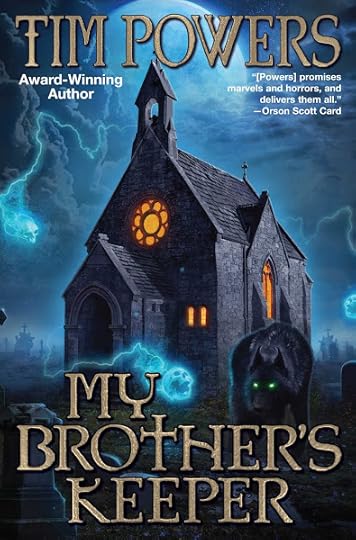 Tim Powers: My Brother's Keeper (2023)
Tim Powers: My Brother's Keeper (2023)It's roughly ten years since I wrote a post about American fantasy novelist Tim Powers. I did make a further brief mention of him in a piece on psychogeography a few years ago, but nothing much since. Am I my brother's keeper, after all?
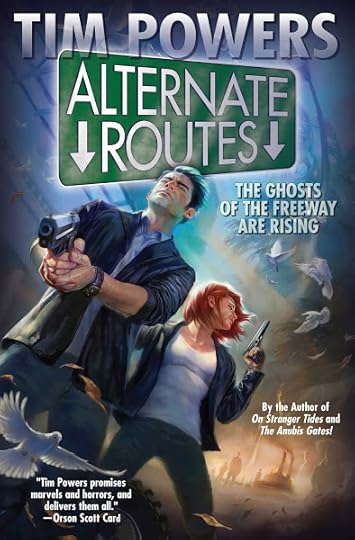 Tim Powers: Alternate Routes. Vickery & Castine #1 (2018)
Tim Powers: Alternate Routes. Vickery & Castine #1 (2018)He's not been idle in that time: that's putting it mildly. Anyone would think he was doing it for a living! He's published a trilogy of books (with, apparently, a fourth yet to come) about a couple of Mulder and Scully-like investigators - Vickery and Castine - and their explorations of the Los Angeles motorway system and other haunted sites around the city.
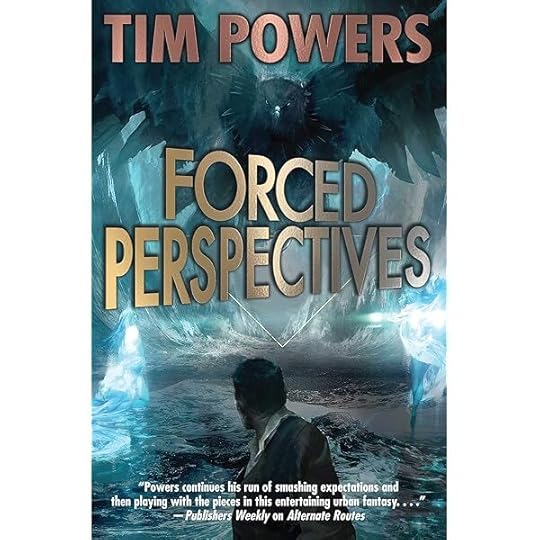 Tim Powers: Forced Perspectives. Vickery & Castine #2 (2020)
Tim Powers: Forced Perspectives. Vickery & Castine #2 (2020)"The Ghosts of the Freeway are rising," as the cover of the first of them proclaims.
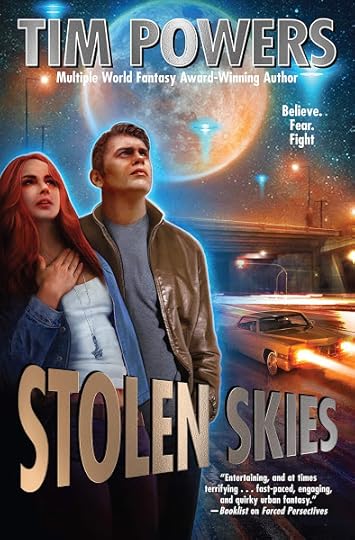 Tim Powers: Stolen Skies. Vickery & Castine #3 (2022)
Tim Powers: Stolen Skies. Vickery & Castine #3 (2022)He's also put out a substantial collection of his short stories and novellas to date: Down and Out in Purgatory. As you can see from the listings at the bottom of this post, it's not complete, but still a pretty comprehensive selection of his work in these forms over the years.
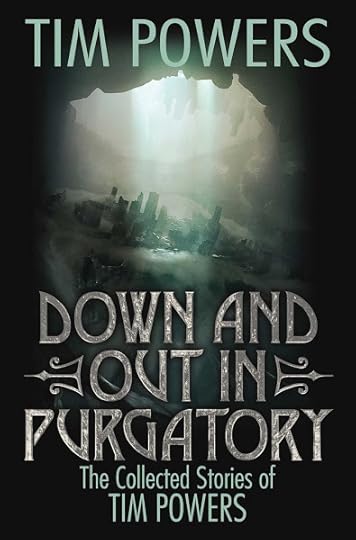 Tim Powers: Down and Out in Purgatory (2017)
Tim Powers: Down and Out in Purgatory (2017)The main event in these years, however, would have to be his new novel about the Brontës, My Brother's Keeper.
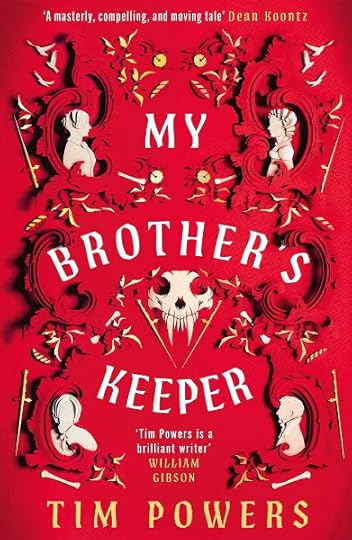 Tim Powers: My Brother's Keeper (2023)
Tim Powers: My Brother's Keeper (2023)•
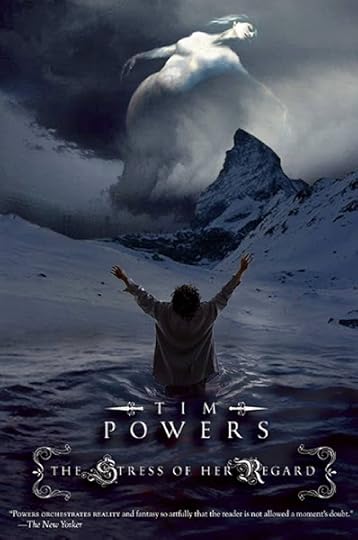 Tim Powers: The Stress of Her Regard (1989)
Tim Powers: The Stress of Her Regard (1989)Set - more or less - in the same magical universe as his earlier books The Stress of Her Regard and Hide Me Among the Graves, My Brother's Keeper continues the conceit of an underlying occult explanation for the odd behaviour of various constellations of closely related Romantic poets and artists: the Shelley circle in The Stress of Her Regard, the Pre-Raphaelites in Hide Me Among the Graves, and now the three visionary sisters of Haworth Parsonage ...
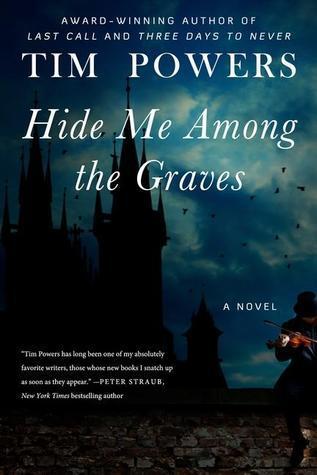 Tim Powers: Hide Me Among the Graves (2012)
Tim Powers: Hide Me Among the Graves (2012)Perhaps Charlotte, Emily, Anne and their hapless brother Branwell are not quite so well known among fantasy readers as they are to fans of Victorian fiction, however, given the bold legend:
Howarth.
Yorkshire.
1846
on the back of my paperbook copy of the book. I suppose "Haworth" might well look like a misprint for "Howarth" if you hadn't been brought up on the arcane lore of the Brontës.
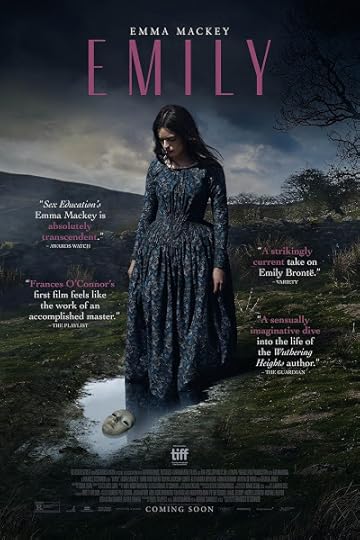 Frances O'Connor, dir.: Emily (2022)
Frances O'Connor, dir.: Emily (2022)I wrote an earlier post about about what sceptical historian Lucasta Miller called "The Brontë Myth" à propos of Frances O'Connor's 2022 film Emily .
Emily, the fiercest and most enigmatic of the three sisters, is at the heart of Tim Powers' novel, too, and the similarities between the two projects are quite revealing. Both O'Connor and Powers gift Emily with an illicit love affair: O'Connor with timid young curate William Weightman, Powers with surly (albeit reformed) werewolf Alcuin Curzon.
Both authors are at a bit of a loss at how to deal with Emily's elder sister Charlotte, so O'Connor turns her into a tedious, uncreative nag, while Powers makes her the only one of the Brontë children not to make a childish pact with the powers of darkness by smearing their blood on a rock in a nearby cavern.
Both take considerable liberties with the well-documented realities of the Brontë's lives, but in O'Connor's case this involves rewriting history to a startling degree, whereas Powers sticks to his usual artistic principle of feeling free to invent reams of extra supernatural action just as long as he's governed by the actual canonical timeline of his subjects' lives.
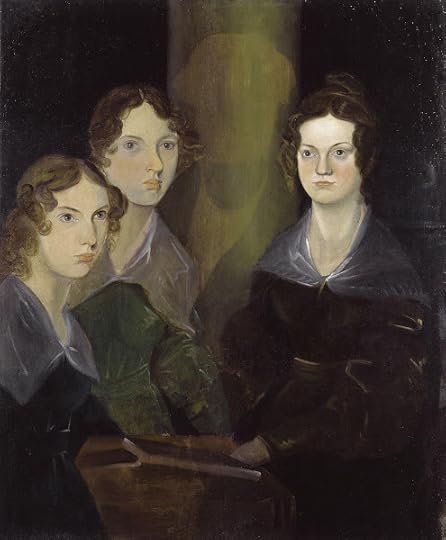 Branwell Brontë: Anne, Emily & Charlotte Brontë (1834)
Branwell Brontë: Anne, Emily & Charlotte Brontë (1834)I guess it's a matter of taste, but I myself found O'Connor's inventions more intrusive because they had the cumulative effect of somehow normalising the oddities of Emily's personality. As I said in my previous post:
I share director (and script-writer) Frances O'Connor's fierce appreciation of Emily's genius - she is, for me, the pick of the bunch, and her novel a masterpiece on a quite different level from Charlotte's and Anne's more numerous works ... She's the only one of the three sisters who's ever been regarded as a poet of distinction, and the ... clockwork machinery of her sublime Gothic novel belies any attempts that have been made since to write it off as hysterical melodrama.However, "the film's decision to show Charlotte sitting down to write her own novel in the wake of Emily's death, and thus - in a sense - carrying on her work, just doesn't seem a necessary fiction to me." I don't see what it adds to our sense of Emily's deep strangeness as a human being to invent a lot of belittling lies about the other sisters.
As Carrie S. remarks in her enthusiastic review of Tim Powers' phantasmagorical reinvention of the Brontë saga:
I love my Brontës and I get so annoyed when either adaptations of their work or stories based on their lives get EVERYTHING WRONG ... My Brother’s Keeper is an eerie story involving the Brontë family, werewolves, and warring cults, and, darn it, it gets everything just absolutely perfect.- Smart Bitches, Trashy Books (6/3/2024)She goes on to quote a comment by fantasy illustrator Michael Hague to the effect that "the more outlandish the the things he wanted to represent, the more convincingly realistic the mundane details must be":
The story works because, first of all, the mundane details feel correct. Things that ought to be heavy do, in fact, cause the characters difficulty when they try to lift them. People have to eat and drink and sleep. Much mention is made of potatoes, either eating them or peeling them or cutting them up. Struggles are as much mundane as mystical. For instance, the characters make frequent references to their efforts to convince local government to move the town’s well uphill from the cemetery –- a real-life problem for the residents of Haworth ... was that the cemetery drained directly into their drinking water.The plot is definitely as busy and complicated as in any of Powers' other novels, but it somehow feels more weighty and serious this time. It was a little difficult to credit that he actually believed in the existence of his Dr. Polidori vampire (in Hide Me Among the Graves) or his stone-disease cursed poet Percy Shelley (in The Stress of Her Regard).
Secondly, the story works because, to me, the portrait of the Brontës, specifically Patrick, Branwell, Charlotte, Emily, Anne, their housekeeper Tabitha and Emily’s dog Keeper, is spot on. Everything they do and everything they say is perfectly in character. As bizarre as the plot is, it actually makes aspects of the Brontës’ lives make more sense rather than less.
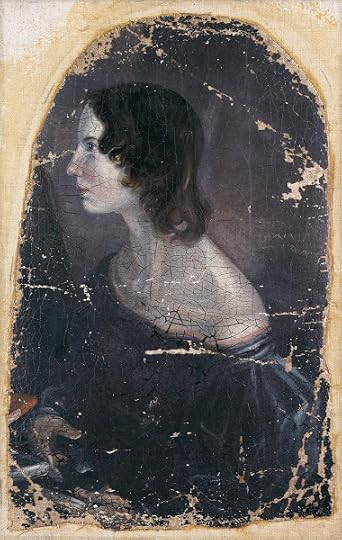 Branwell Brontë: Emily Brontë (1833)
Branwell Brontë: Emily Brontë (1833)I don't feel the slightest doubt that he's fallen in love with his own fearless Emily Brontë, though. As she strides across the moors, shooting at lycanthropes and guarding her worthless brother Branwell from the consequences of yet another betrayal, she gradually assumes the larger-than-life status which her admirers (myself among them) have accorded her all along.
If there could ever be such a thing as a human being whose ethical judgement and moral courage is definitively beyond question (for us true believers, at least) it's Emily Brontë - and Powers sets out to substantiate this view. Anne comes out pretty well, too - far better than in the O'Connor film. Admirers of Charlotte will probably be a little disappointed, but there's a good deal of Jane Eyre in Powers' story, too, so they won't feel as disgusted as they did by the lies and calumnies included in in the Emily film.
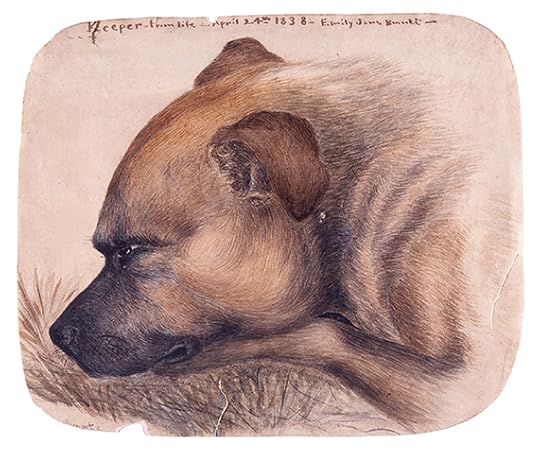 Emily Brontë: Keeper (1838)
Emily Brontë: Keeper (1838)Nor is it the smallest virtue of Powers' book that Emily's faithful dog has such a big part to play in the story. As Carrie S. succinctly expresses it:
He is a Very Good Dog.Overall, I'd say that My Brother's Keeper is Powers' best book since his defining fantasy novel The Anubis Gates some forty years ago. And given that this one made me cry - though Emily's death tends to do that to me, even in O'Connor's film - I think that it's very probably better.
Chapeau bas, messieurs! as old Doctor Rieux in Camus' La Peste dreams that his readers may someday say when they read the opening sentence of his own novel: "Hats off, boys!"
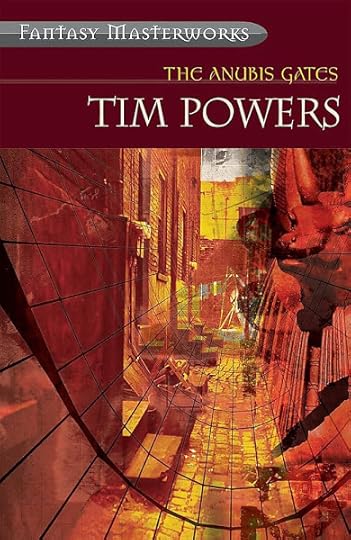 Tim Powers: The Anubis Gates (1985)
Tim Powers: The Anubis Gates (1985)•
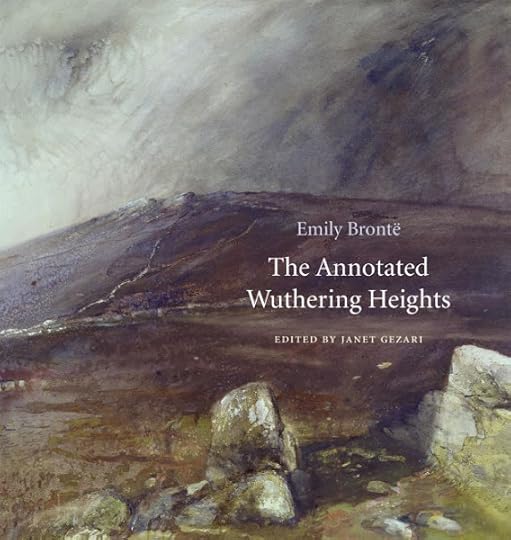 Emily Brontë: The Annotated Wuthering Heights (2014)
Emily Brontë: The Annotated Wuthering Heights (2014)Another surprisingly difficult feat which Powers pulls off with style and panache is weaving so many vital details from Wuthering Heights into the even wilder action of My Brother's Keeper.
"Heathcliff's lost years" is the approach many writers have taken to the problem of how to continue - or supplement - the storyline of Emily's masterpiece. Powers takes the opposite tack. He makes the character Heathcliff a dim avatar of the actual demon "Welsh", who has haunted the Brunty family (renamed Brontë, accordingly to Powers, not by analogy with Admiral Nelson's title as Duke of Bronte, a commune in Sicily, but as an invocation of Brontes , one of the three Cyclopes who forged Zeus's thunderbolt) for three generations.
I won't go into all the ins-and-outs of the foreshadowings and connections Powers manages to excavate from Emily's plot, but suffice it to say that a rereading of Wuthering Heights, perhaps in Janet Gezari's 2014 edition, might help to appreciate that aspect of his work.
For the rest, I'm a little surprised to see that Powers has managed to produce yet another novel since My Brother's Keeper, set - this time - among the American expatriates in 1920s Paris. I suppose when you're on a roll it pays to keep going. In any case, I look forward to reading what mayhem he's managed to wreak amongst Ernest Hemingway, Gertrude Stein and the other Moderns:
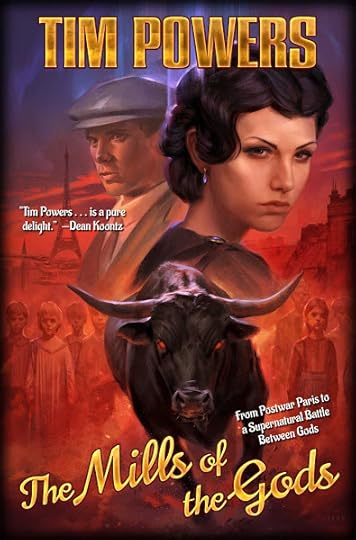 Tim Powers: The Mills of the Gods (2025)
Tim Powers: The Mills of the Gods (2025)•
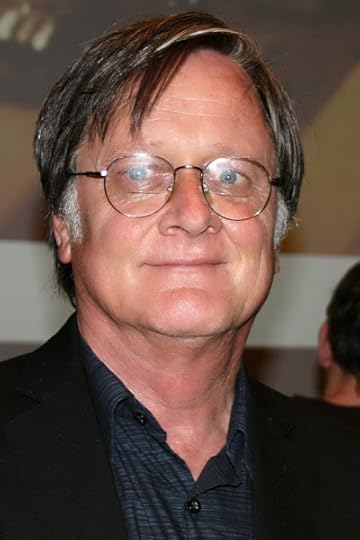 Tim Powers (2013)
Tim Powers (2013)(1952- )
Novels:
The Skies Discrowned [aka Forsake the Sky, 1986] (1976)Included in: Powers of Two: The Skies Discrowned & An Epitaph in Rust. 1976, 1986, 1989. Framingham, MA: The NESFA Press, 2004. An Epitaph in Rust (1976)Included in: Powers of Two: The Skies Discrowned & An Epitaph in Rust. 1976, 1986, 1989. Framingham, MA: The NESFA Press, 2004. The Drawing of the Dark (1979)The Drawing of the Dark. 1979. London: Granada, 1981. The Anubis Gates (1983)The Anubis Gates. 1983. London: Triad Grafton Books, 1986. Dinner at Deviant's Palace (1985)Dinner at Deviant's Palace. 1985. London: Grafton Books, 1987. On Stranger Tides (1987)On Stranger Tides. 1987. New York: Ace Books, 1988. Polidori series:
Fault Lines series:
The Stress of Her Regard (1989)The Stress of Her Regard. 1989. London: HarperCollins, 1991. Hide Me Among the Graves (2012)Hide Me Among the Graves. 2012. Corvus. London: Atlantic Books Ltd., 2013.
Declare (2001)Declare. 2001. New York: HarperTorch, 2002. Three Days to Never (2006)Three Days to Never. 2006. William Morrow. New York: HarperCollins Publishers, 2013. Medusa's Web (2015)Medusa's Web. 2015. Corvus. London: Atlantic Books Ltd., 2016. Vickery and Castine series:
Last Call (1992)Last Call. Fault Lines, 1. 1993. New York: Avon Books, 1996. Expiration Date (1995)Expiration Date. Fault Lines, 2. London: HarperCollins, 1995. Earthquake Weather (1997)Earthquake Weather. Fault Lines, 3. 1997. London: Orbit, 1998.
My Brother's Keeper (2023)My Brother's Keeper. 2023. Head of Zeus. London: Bloomsbury Publishing Plc, 2024. The Mills of the Gods (2025)
Alternate Routes (2018)Alternate Routes. Vickery & Castine, 1. A Baen Books Original. Riverdale, NY: Baen, 2018. [Uncorrected Proof Copy] Forced Perspectives (2020)Forced Perspectives. Vickery & Castine, 2. A Baen Books Original. Riverdale, NY: Baen, 2020. Stolen Skies (2022)Stolen Skies. Vickery & Castine, 3. A Baen Books Original. Riverdale, NY: Baen, 2022.
Short Story Collections:
Night Moves and Other Stories (2000)Itinerary (1999)Night Moves (1986)Pat Moore (2004)The Way Down the Hill (1982)Where They Are Hid (1995)[with James P. Blaylock] The Better Boy (1991)[with James P. Blaylock] We Traverse Afar (1995) [with James P. Blaylock] The Devils in the Details (2003) Introduction (Tim Powers)Through and Through (Tim Powers)Devil in the Details (James P. Blaylock)Fifty Cents (James P. Blaylock and Tim Powers)Mexican Food: An Afterword (James P. Blaylock) Strange Itineraries (2005) Itinerary (1999)The Way Down the Hill (1982)Pat Moore (2004)[with James P. Blaylock] Fifty Cents (2003)Through and Through (2003)[with James P. Blaylock] We Traverse Afar (1995)Where They Are Hid (1995)[with James P. Blaylock] The Better Boy (1991)Night Moves (1986) Strange Itineraries: The Complete Short Stories of Tim Powers. Introduction by Paul Di Filippo. San Francisco: Tachyon Publications, 2005. The Bible Repairman and Other Stories (2011) The Bible Repairman (2006)A Soul in a Bottle (2006)The Hour of Babel (2008)Parallel Lines (2010)A Journey of Only Two Paces (2011)A Time to Cast Away Stones (2008)The Bible Repairman and Other Stories. San Francisco: Tachyon Publications, 2011. Down and Out in Purgatory: The Collected Stories of Tim Powers (2017) Salvage and Demolition (2013)The Bible Repairman (2006)Appointment at Sunset (2014)[with James P. Blaylock] The Better Boy (1991)Pat Moore (2004)The Way Down the Hill (1982)Itinerary (1999)A Journey of Only Two Paces (2011)The Hour of Babel (2008)Where They Are Hid (1995)[with James P. Blaylock] We Traverse Afar (1995)Through and Through (2003)Night Moves (1986)A Soul in a Bottle (2006)Parallel Lines (2010)[with James P. Blaylock] Fifty Cents (2003)Nobody's Home: An Anubis Gates Story (2014)A Time to Cast Away Stones (2008)Down and Out in Purgatory (2016)Sufficient Unto the Day (2017) Down and Out in Purgatory: The Collected Stories of Tim Powers. Foreword by David Drake. Introduction by Tony Daniel. 2017. Riverdale, NY: Baen, 2019.
Chapbooks:
Night Moves [novella] (1986)Included in: Down and Out in Purgatory: The Collected Stories of Tim Powers (2017) [as 'William Ashbless', with James P. Blaylock] The Complete Twelve Hours of the Night (1986) [by Phil Garland] A Short Poem by William Ashbless (1987)Where They Are Hid [novella] (1995)Included in: Down and Out in Purgatory: The Collected Stories of Tim Powers (2017) [as 'William Ashbless', with James P. Blaylock] On Pirates (2001) [as 'William Ashbless', with James P. Blaylock] The William Ashbless Memorial Cookbook (2002) The Bible Repairman [novella] (2006)Included in: Down and Out in Purgatory: The Collected Stories of Tim Powers (2017) Nine Sonnets by Francis Thomas Marrity (2006) A Soul in a Bottle [novella] (2006)Included in: Down and Out in Purgatory: The Collected Stories of Tim Powers (2017) Three Sonnets by Cheyenne Fleming (2007) A Time to Cast Away Stones (2008)Included in: Down and Out in Purgatory: The Collected Stories of Tim Powers (2017) 'Death of a Citizen.' In A Comprehensive Dual Bibliography of James P. Blaylock & Tim Powers, by Silver Smith (2012) Salvage and Demolition [novella] (2013)Included in: Down and Out in Purgatory: The Collected Stories of Tim Powers (2017) Nobody's Home [novella] (2014)Included in: Down and Out in Purgatory: The Collected Stories of Tim Powers (2017) Appointment on Sunset [novella] (2014)Included in: Down and Out in Purgatory: The Collected Stories of Tim Powers (2017) Down and Out in Purgatory [novella] (2016)Included in: Down and Out in Purgatory: The Collected Stories of Tim Powers (2017) More Walls Broken [novella] (2019)The Properties of Rooftop Air [novella] (2020) After Many a Summer [novella] (2023)
Secondary:
[Katz, Brad. “An Interview with Tim Powers (21/2/96).” Brow Magazine (1996).]
•
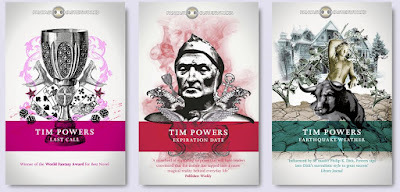 Tim Powers: The Last Call Series (1992-1997)
Tim Powers: The Last Call Series (1992-1997) Tim Powers: The Vickery & Castine Series (2018-2022)
Tim Powers: The Vickery & Castine Series (2018-2022)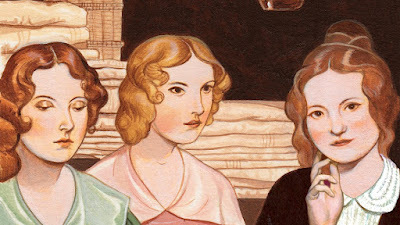 Pierre Mornet: The Brontës’ Secret (2016)
Pierre Mornet: The Brontës’ Secret (2016)•
Published on November 29, 2025 14:20
November 16, 2025
Favourite Children's Authors: John Masefield
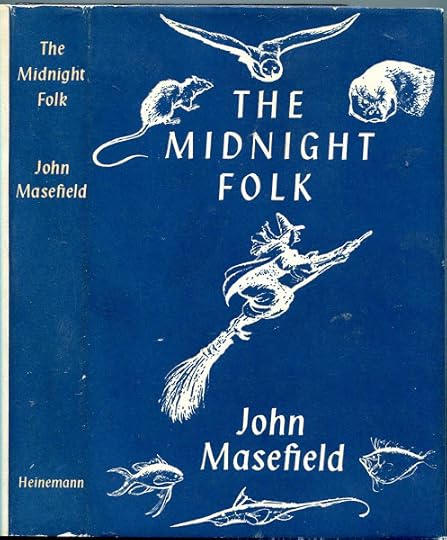 John Masefield. The Midnight Folk (1927)
John Masefield. The Midnight Folk (1927)[Illustrated by Rowland Hilder (1931)]
When it comes to favourite children's authors, John Masefield's classic kids' book The Midnight Folk , along with its even stranger and more magical sequel The Box of Delights , must certainly have earned him a place in the pantheon.
 John Masefield: The Box of Delights (1935)
John Masefield: The Box of Delights (1935)[Illustrated by Judith Masefield (1935) & Faith Jaques (1984)]
I remember recommending these books to Professor D. I. B. Smith while he was supervising my Masters thesis on the novels of John Masefield. Don couldn't see much in them. "Maybe you had to be there," he said. I suppose he meant that unless you read such books at just the right age, when their mixture of talking animals and ambiguous dreamscapes can be assimilated at face value, they're unlikely ever to exert the same charm.
That may be so. But I was brought up on them, and for me they're just as compelling as Through the Looking Glass or The Wind in the Willows (or, for that matter, Norman Lindsay's The Magic Pudding, another staple of our Antipodean childhood).
What I liked best in The Box of Delights were the little adventurous vignettes which could only be reached by means of the mysterious box itself. Riding with Herne the Hunter, observing the aftermath of the Siege of Troy, and visiting the court of King Arthur, were all real experiences sealed within this strange miniature world created by the (fictional) Medieval Magister Arnold of Todi.
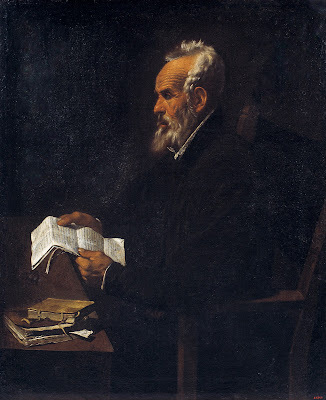 Francisco Ribalta: Ramon Llull (1620)
Francisco Ribalta: Ramon Llull (1620)The Punch-and-Judy man Cole Hawlings, who guides Kay for much of his quest is, we eventually learn, a contemporary of Arnold's, Ramon Lully - or Ramon Llull (1232-1316): a real person this time - who'd attempted to swap his own elixir of life for the box many centuries before.
I'd never heard of Llull before reading The Box of Delights, and when I began to find out more about him years later, reading France Yates's The Art of Memory, I felt as if the hidden depths of Masefield's book were finally beginning to reveal themselves to me.
 Renny Rye, dir.: The Box of Delights (BBC, 1984)
Renny Rye, dir.: The Box of Delights (BBC, 1984)If only these mysteries had formed more of a part of the BBC TV adaptation of the book, I would probably have enjoyed it more. As it is, I kept on waiting for my favourite scenes to appear, and was immensely disappointed when they didn't. I'm sure it has its charms for those who watched it as children, but - rather like Don Smith with the book itself - it holds less appeal for me.
In his excellent essay on this particular "musty book" on his Haunted Generation blog, Bob Fischer sees the narrative as one long warning against dwelling too much in the past:
Our collective concept of the past is idealised, even mythologised, and allowing it to intrude into modern life at the expense of the present (no matter how dreary the latter may seem) will inevitably lead to sickness and corruption.Certainly the temptation to freeze the past in a single small compass - as both Arnold and Ramon have attempted to do - is seen as a vital mistake in Masefield's book. It may not be necessary to go as far as Maria, the youngest of the Jones children, who are staying with Kay for the holidays:
Christmas ought to be brought up to date. It ought to have gangsters and aeroplanes, and a lot of automatic pistols.This atmosphere of 1930s pulp fiction, too, is shown to have its perils, when Maria is herself kidnapped by the desperate gang who are after the box. If there is an overall theme in the book, it might be the importance of maintaining a live tradition - the tradition of Christmas in the Cathedral, for instance - rather than neglecting it either through soul-sapping nostalgia or blatant greed.
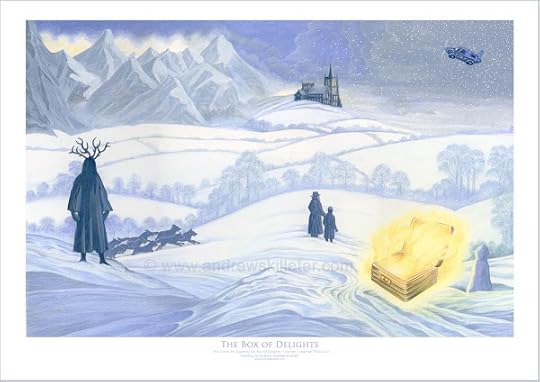 Andrew Skilleter: Cover for The Box of Delights (2024)
Andrew Skilleter: Cover for The Box of Delights (2024)•
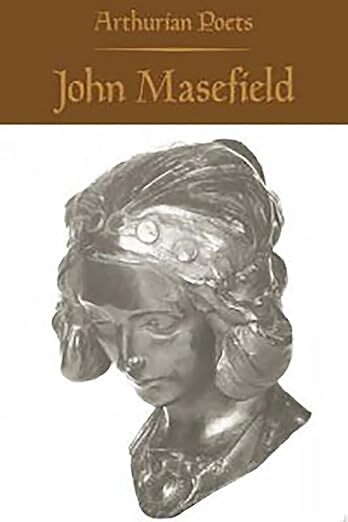 David Llewellyn Dodds, ed. Arthurian Poets: John Masefield (1994)
David Llewellyn Dodds, ed. Arthurian Poets: John Masefield (1994)In keeping with this idea of the necessity of maintaining live traditions, another important creative resource for Masefield throughout his career was the Arthurian legend. There's a definite overlap between his work purely for children, and his work in this particular part-historical, part-fantastic region of the imagination.
The Knights of the Round Table appear in some of Kay's magical journeys in The Box of Delights, and the stories of King Arthur and Camelot also form a major component of Masefield's fascination with the psychogeography of English places: his birthplace Ledbury, in Herefordshire, for instance, as well as Boar's Hill, near Oxford, where he lived after the First World War.
My own interest in Arthur, sparked by an early reading of the book All About King Arthur by historian (and mystic) Geoffrey Ashe, may seem rather more anomalous, given I was born and brought up in the South Pacific. Whatever the motivations behind it, though, it led me to look out for as many versions as possible of the Arthurian mythos in everything I read subsequently.
The story itself - with its strong underpinning of jealousy, betrayal, and ultimate doom - is, I would have to concede, not one that's entirely comprehensible to children. How are they meant to empathise with characters such as Guinevere, Iseult, or (for that matter) Mordred?
I certainly didn't. But the attempt to do so helped me a lot with my own growing up. Neither Rosemary Sutcliff's Arthur nor Mary Stewart's Merlin - not to mention T. H. White's "Ill-made knight" Lancelot - were straightforward characters, and the stories about them were not especially easy to fathom.
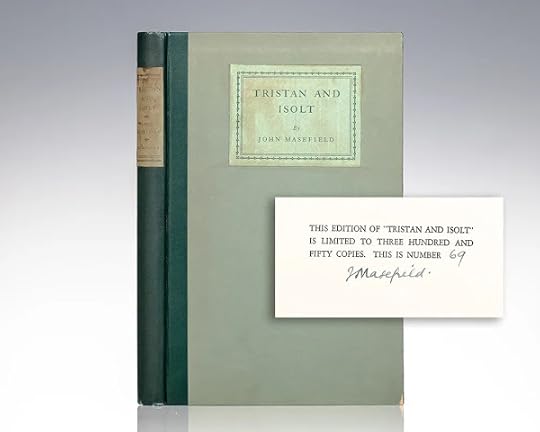 John Masefield: Tristan and Isolt (1927)
John Masefield: Tristan and Isolt (1927)Masefield's version of the Arthurian legend was equally curious and offbeat. On the one hand he seemed determined to claw back to the fifth century roots of these stories. On the other hand, he was drawn to the melodrama of Tristan and Lancelot and the preset, fatalistic love stories they seemed doomed to reenact.
Hence his attempt at the first of these stories in the play Tristan and Isolt. Hence also his attempt at a more complete Arthurian cycle in Midsummer Night and Other Tales in Verse.
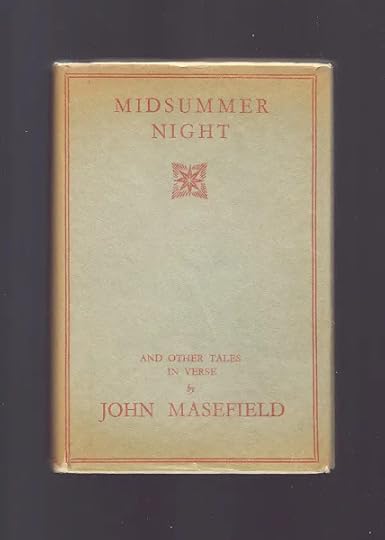 John Masefield: Midsummer Night and Other Tales in Verse (1928)
John Masefield: Midsummer Night and Other Tales in Verse (1928)This theme in his work would culminate in his last novel, Badon Parchments .
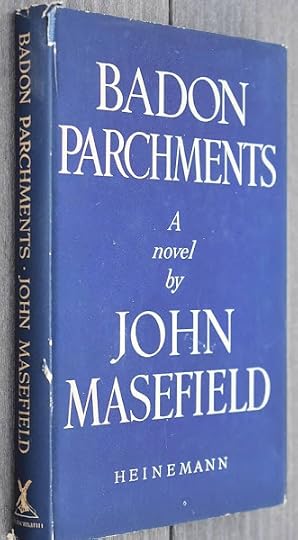 John Masefield: Badon Parchments (1947)
John Masefield: Badon Parchments (1947)Masefield's fascination with Byzantium was at its height when he wrote this book, so the form that it takes, a series of reports sent back to the Imperial court by Byzantine envoys to the last surviving embers of Roman Britain, in the person of King Arthur and his army, is not as counter-intuitive as it might otherwise appear.
As a novel, though, it's almost nouveau roman-like in its dryness and avoidance of melodrama. Perhaps it was just that he was exhausted with narrative prose by this point - it had, after all, been forty years since he published his first novel, Captain Margaret , in 1908 - or perhaps it was just an experiment that didn't quite come off, but Badon Parchments still seems a curious coda to these two deep fixations of his: Constantinople and King Arthur.
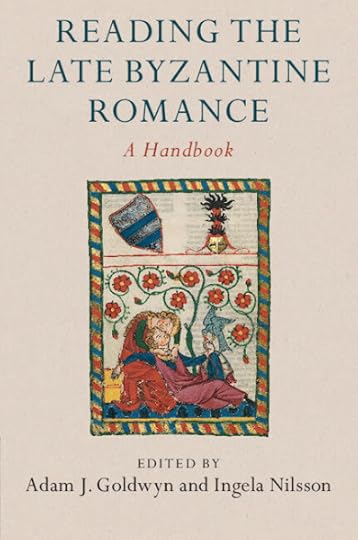 Adam J. Goldwyn & Ingela Nilsson, ed.: Reading the Late Byzantine Romance (2018)
Adam J. Goldwyn & Ingela Nilsson, ed.: Reading the Late Byzantine Romance (2018)•
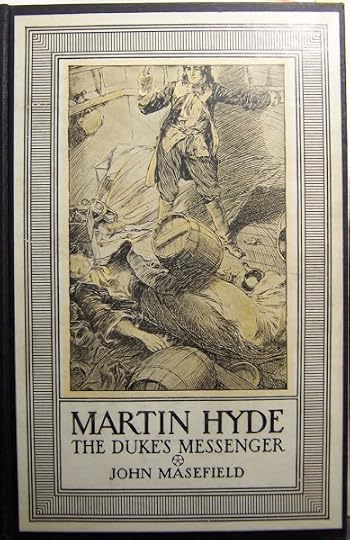 John Masefield: Martin Hyde: The Duke's Messenger (1910 / 1925)
John Masefield: Martin Hyde: The Duke's Messenger (1910 / 1925)Which is perhaps as good a reason as any to shift our discussion to that earlier era, when Masefield as a young writer was experimenting with different forms of expression - both in order to define the nature of his own talent, and to make a living in pre-war Grub Street. Children's fiction must, then, have seemed one of the more obvious genres for him to try.
It's pretty impressive, even so, that he managed to publish no fewer than four boys' books in the years 1910-1911, before the immense success of his first long narrative poem, The Everlasting Mercy , set him on a more individual path.
The first of them, Martin Hyde , is a rather Henty-esque historical novel about the Monmouth rebellion in the 1680s.
It's an interesting book insofar as it attempts to parallel the romantic atmosphere of Martin's experiences ("We were off. I was on my way to Holland. I was a conspirator travelling with a King. There ahead of me was the fine hull of the schooner la Reina, waiting to carry us to all sorts of adventure ...") with the rather more prosaic nature of everyday life aboard ship:
There you are,' said the mate of the schooner. 'Now down on your knees. Scrub the floor here. See you get it mucho blanco.'The older Martin, who is narrating the story of his earlier life, has various sage reflections to make on this experience, but is honest enough not to attribute them to his younger self.
He left me feeling much ashamed at having to work like a common ship's boy, instead of like a prince's page, which is what I had thought myself.
I will not tell you how I finished the deck. I will say only this, that at the end I began to take a sort of pride or pleasure in making the planks white. Afterwards, I always found that there is this pleasure in manual work. There is always pleasure of a sort in doing anything that is not very easy.As for the book itself, its main virtue is the various ingenious ways Masefield finds to undermine the more facile traditions of boys' adventure fiction, as established by authors such as Ballantyne and Stevenson, with a dose of cold reality: 'You don't know what an adventurous life is', the narrator informs us:
I will tell you. It is a life of sordid unquiet, pursued without plan, like the life of an animal.
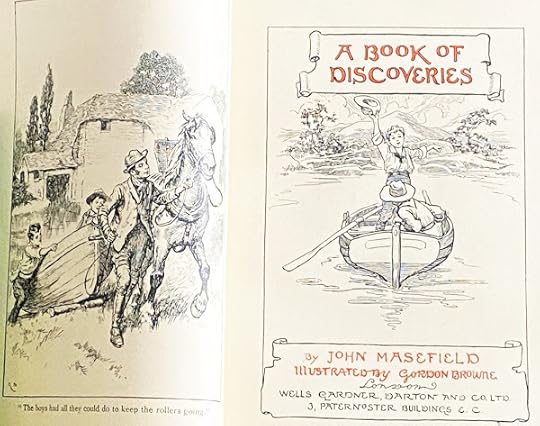 John Masefield: A Book of Discoveries (1910)
John Masefield: A Book of Discoveries (1910)Its successor, A Book of Discoveries , is more in the tradition of books like Richard Jefferies' Bevis: The Story of a Boy (1882) or Kipling's Puck of Pook's Hill (1906) than adventure yarns such as Treasure Island or King Solomon's Mines. It's a kind of bildungsroman, depicting the everyday adventures and explorations of two young boys, Mac and Robin, "on a tributary of the River Tame in the village of Water Orton in Warwickshire."
Their mentor, Mr. Hampton, who catches them trespassing on his land, is (depending on how you look at it) either a tediously didactic and crotchety taskmaster, who lectures the boys incessantly, or an idealised self-portrait of the author himself, itching to correct the erroneous attitudes of the younger generation with a good dose of hard work. Take your pick. Here's a sample of his conversational style:
Xenophon, in his OEconomicus, praises the beautiful order of a big Phoenician ship which he saw at Athens. He makes it clear that even then ships were fitted 'with many machines to oppose hostile vessels, many weapons for the men, all the utensils for each company that take their meals together,' besides the freight of merchandise, and the men themselves. Yet all these things, he says, 'were stowed in a space not much larger than is contained in a room that holds half a score dinner-couches.' How big do you suppose that would be, eh?I like that little "eh?" at the end, as if that's sufficient to transform it all into light banter. Admittedly, it's not all as dry as that, and the boys' finds throughout the book, which include a cave with a number of interesting flints and inscriptions, along with the remnants of a Roman pay-chest surrounded by small heaps of coins, go a long way towards proving Hampton's contention that:
the wonderful discoveries lie under our noses all the time, if we only had the sense to make them.
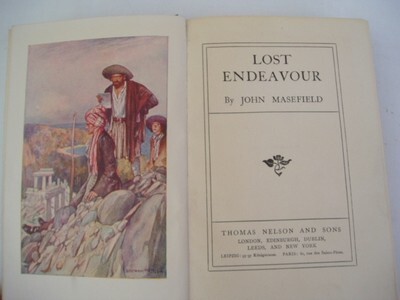 John Masefield: Lost Endeavour (1910)
John Masefield: Lost Endeavour (1910)I love stories. I prefer them to be touched with beauty and strangeness. I like them to go on for a long time, in a river of narrative; and I like tributaries to come in upon the main stream, and exquisite bays and backwaters to open out, into all of which the mind can go exploring after one has learned the main stream.This passage from a 1944 essay of Masefield's with the Blakean title "I Want! I Want!" is a good description of Lost Endeavour , to my mind the richest - though possibly the least popular - of his pre-war boys' books.
In the chapter of my 1984 MA thesis on Masefield devoted to these books, I describe it as "a Treasure Island as Masefield felt it ought to be":
The parallels are very close – even down to the actual treasure on an island – but Masefield is concerned to show what such a life might actually have been like to experience. None of his villains are likeable – unlike Long John Silver – and his pirates in particular are potrayed as brutal ruffians and animals.His twin protagonists, the gloomy boy Charles and the irresponsible grown-up dreamer Theo, reverse the pattern of the romantic Jim Hawkins and the business-like Squire Trelawny. The pattern of the successful quest for riches characteristic of such tales is also inverted in Masefield's novel, where "the meaning shows in the defeated thing" (as he out in in his much-anthologised poem "The Wanderer").
The value of the book lies in its incidental details, such as this description of a tropical forest:
All a wilderness of green things, a chaos of vegetables. No, it is not a chaos, it is a world of the most exquisite order. Every leaf is turned so as to catch life from its surroundings; the greatest and sweetest and fittest kind of life, either of sun or air or water. Not a blossom, not a twig, not a fruit there but has striven, I will not say with its whole intellect, but with its whole nature, to make of itself the utmost possible, and to give to itself in its brief life a deeper crimson, a more tense, elastic toughness, a finer sweetness and odour. Ah! the life that goes on there, the abundant torrent of life, the struggle for beauty and delicacy ... Ah! that forest. It was cool within there, out of the sun, so cool that it was like walking in a well; a dim, cool, beautiful well, full of pale green water from the sea. The flowers called to me: 'I am crimson,' 'I am like a pearl,' 'I am like sapphires.' The fruits called to me that they tasted like great magical moons."Tell me of your cities", concludes Masefield's narrator, "I tell you of the garden and the orchard, where life is not a struggle for wealth, but for nobleness of form and colour."
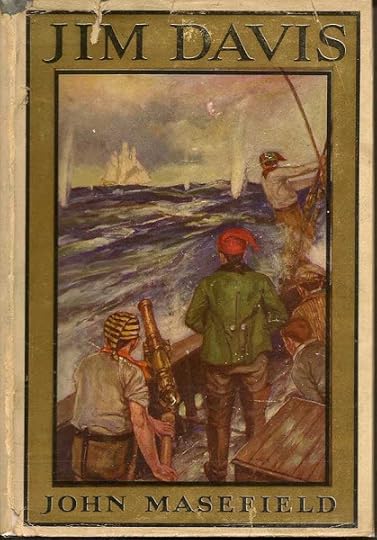 John Masefield: Jim Davis (1911)
John Masefield: Jim Davis (1911)Unfortunately these poetic extensions of the possibilities of children's fiction were not really built on in Jim Davis , Masefield's final pre-war essay in the genre.
Like its predecessor Martin Hyde, it's a
traditional boys' book in form – told in the first person by the eponymous hero – and the action unfolds in an early nineteenth century Devonshire village.This time, however, it's a story about smugglers. To do him justice, Masefield tries to stress the reality rather than the romance of so stressful a trade. In fact:
so accurately are Jim's reactions to his sufferings depicted, that at times the book becomes a little too poignant to bear. Jim's solitary march to London, to 'see the Lord Mayor' is a case in point, and I suspect that both Masefield and his readers rejoiced when he decided to bring the book to a swift conclusion ... There is no real leavening of 'romance' in the book.Even Jim's protector Marah Gorsuch, though quite an attractive figure, is hardly a trustworthy one:
I had never really liked the man – I had feared him too much to like him – but he had looked after me for so long, and had been, in his rough way, so kind to me, that I cried for him as though he were my only friend.In fact, as I commented in 1984, "Jim Davis ... reads almost like a tract against adventures."
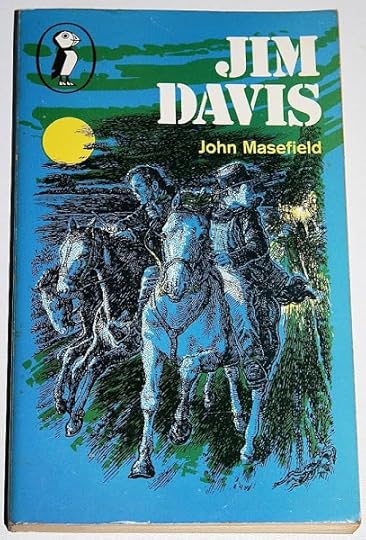 John Masefield: Jim Davis (1911 / 1975)
John Masefield: Jim Davis (1911 / 1975)•
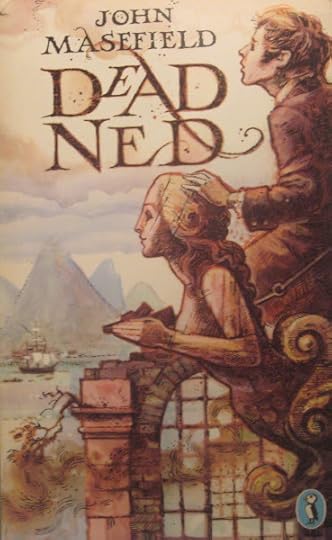 John Masefield: Dead Ned: The Autobiography of a Corpse (1938 / 1974)
John Masefield: Dead Ned: The Autobiography of a Corpse (1938 / 1974)It's nice to record that Masefield's penultimate children's book, Dead Ned , written some thirty years later, and subtitled "The Autobiography of a Corpse Who Rediscovered Life Within the Coast of Dead Ned and Came to What Fortune You Shall Hear", is in many ways the most vivid and enthralling of all his many novels.
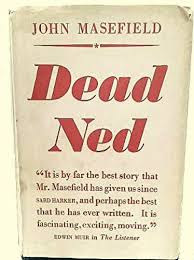 John Masefield: Dead Ned: The Autobiography of a Corpse (1938)
John Masefield: Dead Ned: The Autobiography of a Corpse (1938)His grasp of eighteenth century idiom is far superior to that of subsequent writers such as Leon Garfield or Philip Pullman. It certainly helps to have a poet's sensitivity to language when your material - murder, prison, execution, slave ships - is as melodramatic as this.
There's something of the atmosphere of a nightmare or a fever dream about Ned Mansell's story. It's not so much an escape from the horrors of the late 1930s, as an attempt to see them from a different angle.
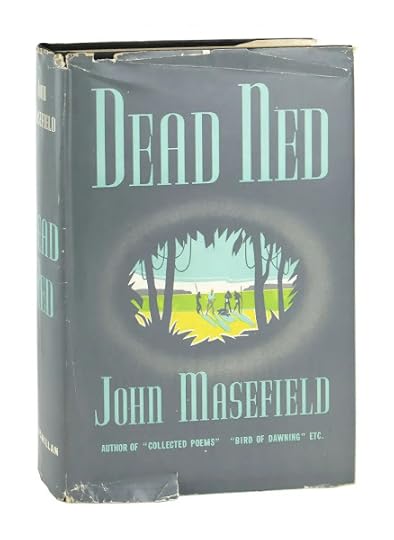 John Masefield: Dead Ned: The Autobiography of a Corpse (1938)
John Masefield: Dead Ned: The Autobiography of a Corpse (1938)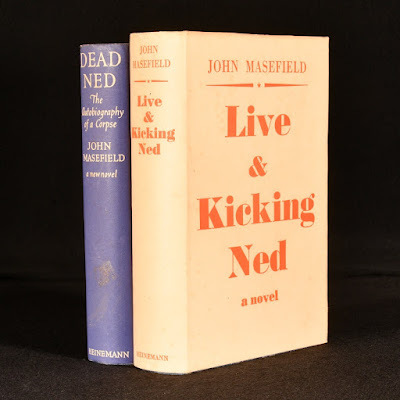 John Masefield: Dead Ned & Live and Kicking Ned (1938-39)
John Masefield: Dead Ned & Live and Kicking Ned (1938-39)Unfortunately its eagerly awaited sequel, Live and Kicking Ned: A Continuation of the Tale of Dead Ned, cannot really sustain the pace and excitement of the original.
The material - a search for a mysterious lost city in the depths of darkest Africa - is as good as ever. Rider Haggard thrived on just such plots. Pierre Benoît's famous (and much filmed) novel L'Atlantide (1919) is a classic piece of French adventure fiction.
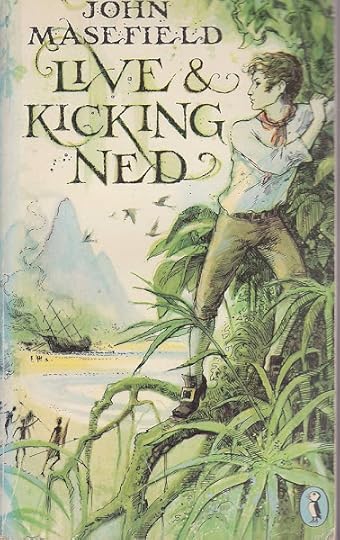 John Masefield: Live and Kicking Ned: A Continuation of the Tale of Dead Ned (1939 / 1975)
John Masefield: Live and Kicking Ned: A Continuation of the Tale of Dead Ned (1939 / 1975)I was a little shocked when I found out that the Puffin edition of the novel had been abridged . It was, admittedly, done by Vivian Garfield (neé Vivian Alcock), Leon Garfield's second wife, and a successful children's author in her own right. When, however, some years later I managed to locate:
a copy of the original novel, I began to understand the motives of the editors at Puffin Books in abridging it. Certainly it read better in its original form, but there was a great deal of unnecessary detail about the bureaucratic infighting in the Lost City, which was threatened by an imminent invasion. Clearly Masefield meant this as satire on the unpreparedness of England for the oncoming Second World War, but it did have the effect of undercutting the realism of the rest of the narrative.I'm not sure that the novel really works very well in either form. There's a lot of great material there, though.
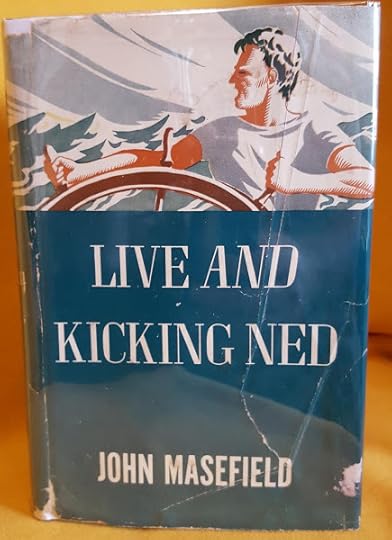 John Masefield: Live and Kicking Ned: A Continuation of the Tale of Dead Ned (1939)
John Masefield: Live and Kicking Ned: A Continuation of the Tale of Dead Ned (1939)•
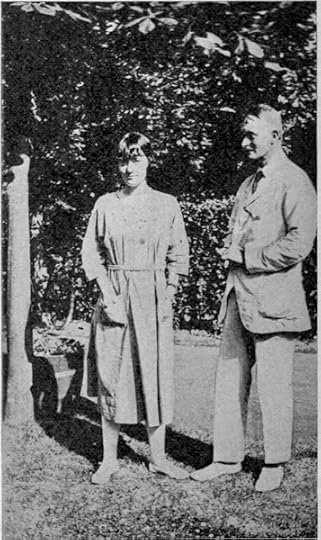 John Masefield with his daughter Judith, illustrator of The Box of Delights (1927)
John Masefield with his daughter Judith, illustrator of The Box of Delights (1927)How, then, should one conclude? Eight of Masefield's lifetime total of 23 novels was written for children - that's (roughly) one in three. He was not perhaps so ideally suited to the form as, say, Rudyard Kipling, who found it a good way of communicating his views without the full apparatus of authoritarianism and militarism which pervades so much of his adult fiction.
The Masefield of the children's books is not really that different from the one we meet in the rest of his work - witness the recurrence of many of the themes and characters (Abner Brown, for instance, and the imaginary South American country Santa Barbara) we encounter in The Midnight Folk in earlier novels such as Sard Harker and ODTAA .
I suspect it's true that the children's books have dated better, though. The genre of the "rattling good yarn", which was one of Masefield's specialities, has now largely been superseded by more brutal and pitiless thrillers. I'm pretty sure that books such as Dead Ned and The Box of Delights, however, will continue to delight imaginative children as long as there are libraries with long dusty sets of shelves to find them in ...
 Stockcake: Free Child among Books
Stockcake: Free Child among Books•
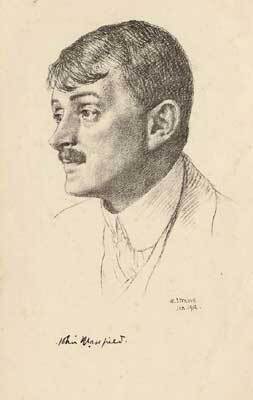 John Masefield (1912)
John Masefield (1912)John Edward Masefield
(1878-1967)
Children's Books:
Martin Hyde: The Duke's Messenger (1909)Martin Hyde: The Duke’s Messenger. 1910. Redhill, Surrey: Wells Gardner, Darton and Co. Ltd., 1949. A Book of Discoveries (1910) A Book of Discoveries. Illustrated by R. Gordon Browne. London: Wells, Gardner Darton & Co., 1910. Lost Endeavour (1910)Lost Endeavour. 1910. London: Thomas Nelson and Sons, n.d. Jim Davis (1911)Jim Davis. 1911. Illustrated by Mead Schaeffer. London: Wells Gardner, Darton and Co. Ltd., 1924. The Midnight Folk (1927)The Midnight Folk. 1927. Illustrated by Rowland Hilder. World Books Children’s Library. London: The Reprint Society, 1959.The Midnight Folk. 1927. Abridged by Patricia Crampton. 1984. Fontana Lions. London: William Collins Sons & Co Ltd., 1985. The Box of Delights: or When the Wolves Were Running (1935)The Box of Delights, or When the Wolves were Running. 1935. Illustrated by Judith Masefield. London: William Heinemann Ltd., 1958.The Box of Delights; When The Wolves Were Running. 1935. Illustrated by Faith Jaques. Abridged by Patricia Crampton. 1984. Fontana Lions. London: William Collins Sons & Co Ltd., 1984. Dead Ned (1938)Dead Ned: The Autobiography of a Corpse Who recovered Life within the Coast of Dead Ned and came to what Fortune you shall hear. London: William Heinemann Ltd., 1938.Dead Ned: The Autobiography of a Corpse Who Recovered Life within the Coast of Dead Ned and Came to What Fortune you shall hear. 1938. Puffin Books. Harmondsworth: Penguin, 1974. Live and Kicking Ned (1939)Live and Kicking Ned: A Continuation of the Tale of Dead Ned. 1939. London: William Heinemann Ltd., 1939.Live and Kicking Ned: A Continuation of the Tale of Dead Ned. Abridged by Vivian Garfield. 1939. Puffin Books. Harmondsworth: Penguin, 1975.
Books about King Arthur:
Tristan and Isolt: A Play in Verse (1927)Tristan and Isolt: A Play in Verse. London: William Heinemann, 1927. Midsummer Night and Other Tales in Verse (1928)Included in: The Collected Poems. 1923. Enlarged Edition. 1932. Enlarged Edition. 1938. London: William Heinemann Ltd., 1941. Badon Parchments (1947)Badon Parchments. London: William Heinemann Ltd., 1947. Arthurian Poets: John Masefield. Ed. David Llewellyn Dodds (1994)Arthurian Poets: John Masefield. Ed. David Llewellyn Dodds. Arthurian Studies, 32. Woodbridge: The Boydell Press, 1994.
•
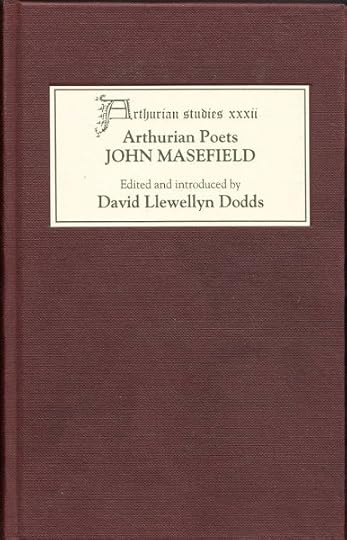 David Llewellyn Dodds, ed. Arthurian Poets: John Masefield (1994)
David Llewellyn Dodds, ed. Arthurian Poets: John Masefield (1994)Arthurian Poets Series:
[1990-1996]
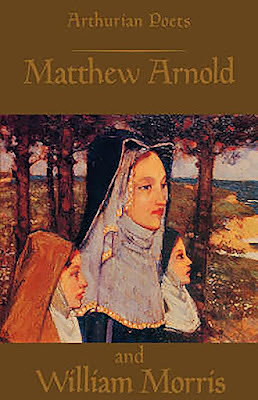 Arthurian Poets: Matthew Arnold & William Morris (1990)
Arthurian Poets: Matthew Arnold & William Morris (1990)Arthurian Poets: Matthew Arnold & William Morris. Ed. James P. Carley. Arthurian Studies. Woodbridge: The Boydell Press, 1990.
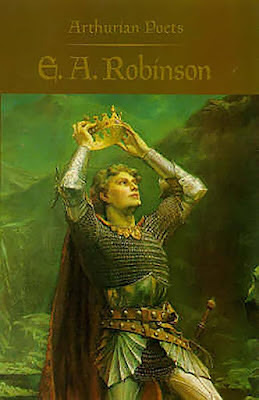 Arthurian Poets: Edwin Arlington Robinson (1990)
Arthurian Poets: Edwin Arlington Robinson (1990)Arthurian Poets: Edwin Arlington Robinson. Ed. James P. Carley. Arthurian Studies. Woodbridge: The Boydell Press, 1990.
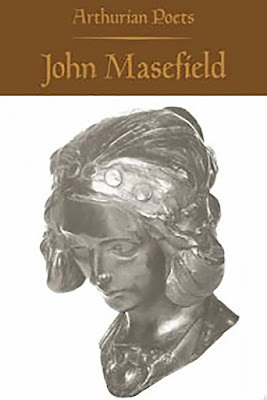 David Llewellyn Dodds, ed. Arthurian Poets: John Masefield (1994)
David Llewellyn Dodds, ed. Arthurian Poets: John Masefield (1994)Arthurian Poets: John Masefield. Ed. David Llewellyn Dodds. Arthurian Studies, 32. Woodbridge: The Boydell Press, 1994.
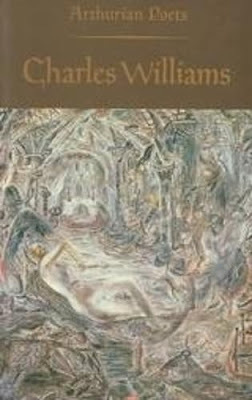 Arthurian Poets: Charles Williams (1995)
Arthurian Poets: Charles Williams (1995)Arthurian Poets: Charles Williams. Ed. David Llewellyn Dodds. Arthurian Studies, 24. Woodbridge: The Boydell Press, 1995.
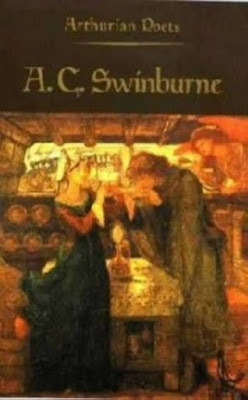 Arthurian Poets: Algernon Charles Swinburne (1996)
Arthurian Poets: Algernon Charles Swinburne (1996)Arthurian Poets: Algernon Charles Swinburne. Arthurian Studies. Woodbridge: The Boydell Press, 1996.
•
Published on November 16, 2025 14:34
October 31, 2025
Easy Pieces: Reading Popular Books on Science
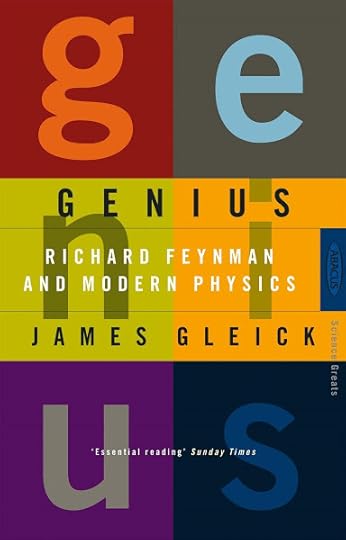 James Gleick: Genius: Richard Feynman and Modern Physics (1992)
James Gleick: Genius: Richard Feynman and Modern Physics (1992)Science is a way to teach how something gets to be known, what is not known, to what extent things are known (for nothing is known absolutely), how to handle doubt and uncertainty, what the rules of evidence are, how to think about things so that judgments can be made, how to distinguish truth from fraud, and from show. - Richard Feynman [quoted in Genius, p.285]
Perhaps I should say: trying to read popular books on science. They tend to start off quite straightforwardly, then segue into some esoteric explanation of something mathematical, and after that I'm lost ...
But no-one gets anywhere without perseverance. The other day I bought a copy of the book above for a couple of bucks in a Salvation Army shop. I've been reading it ever since with steadily increasing interest. I don't really understand it, mind you. It still isn't quite clear to me exactly what Richard Feynman's "genius" consisted of. There's no obvious manifestation of it to be seen as yet, unlike Einstein's Theory of Relativity or Oppenheimer's atomic bomb. But at times I begin to think that even a scientific illiterate such as myself might be able to glimpse something of his achievements even at second-hand.
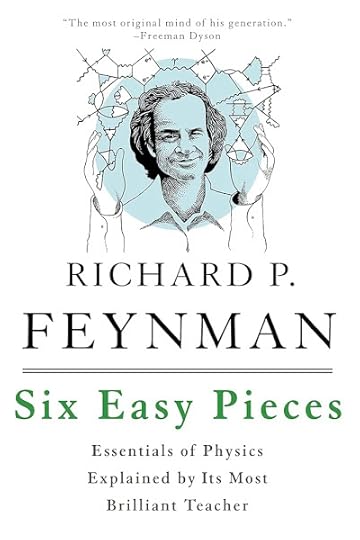 Richard Feynman: Six Easy Pieces: The Fundamentals of Physics Explained (1994)
Richard Feynman: Six Easy Pieces: The Fundamentals of Physics Explained (1994)A few years ago, I bought a copy of the book above (also second-hand, in an opportunity shop). The title proved to be a bit of a misnomer, as I can't say I found any of the pieces particularly easy. But, as I recall it, that was also the point of the film Five Easy Pieces - which is presumably what the two editors, Matthew Sands and Robert Leighton, were thinking of when they gave their book of selections from Feynman's introductory lectures that title.
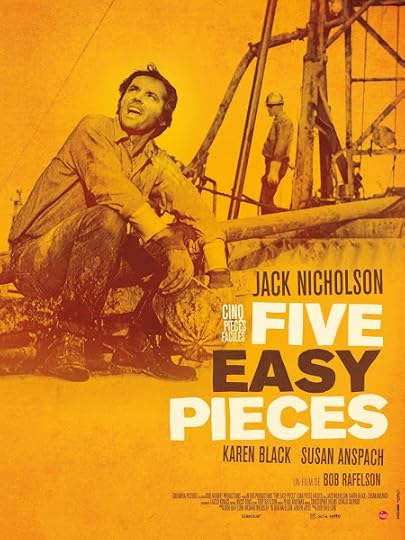 Bob Rafelson, dir.: Five Easy Pieces (1970)
Bob Rafelson, dir.: Five Easy Pieces (1970)•
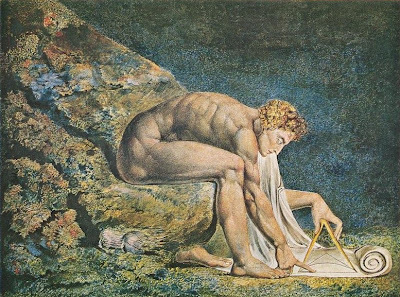 William Blake: Newton (1795)
William Blake: Newton (1795)John Maynard Keynes ... spoke of Newton as "this strange spirit, who was tempted by the Devil to believe ... that he could reach all the secrets of God and Nature by the pure power of mind - Copernicus and Faustus in one. Why do I call him a magician? Because he looked on the whole universe and all that is in it as a riddle, as a secret which could be read by applying pure thought to certain evidence, certain mystic clues which God had laid about the world to allow a sort of philosopher's treasure hunt to this esoteric brotherhood." - Freeman Dyson [quoted in Genius, p.317]
I suppose that the question I'm asking myself here is a fairly obvious one. Why do I keep on battering my head against the brick wall of books such as these? I clearly lack the background in mathematics - let alone physics - to make sense of them, and yet there's something attractive in the notion that a few ideas, a few precious gleams of knowledge might get through the barrier of my resolutely humanist education and give me a glimpse of what the universe is all about.
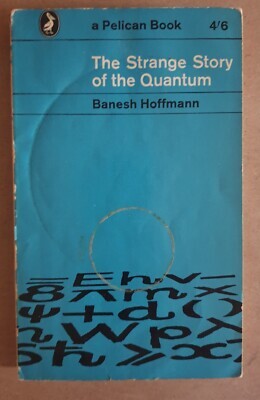 Banesh Hoffmann: The Strange Story of the Quantum (1947)
Banesh Hoffmann: The Strange Story of the Quantum (1947)Some of the blame must be laid at the door of Banesh Hoffmann's The Strange Story of the Quantum. There's a tedious habit among us literary folk to try to sum up Einstein's famous theories as something along the lines of "everything is relative" - or (even worse) to make strained analogies between Heisenberg's Uncertainty Principle and the perilous lack of convictions underlying modern thought.
And as for all the stupid things we've said at one time or another about Schrödinger's cat! Don't get me started ...
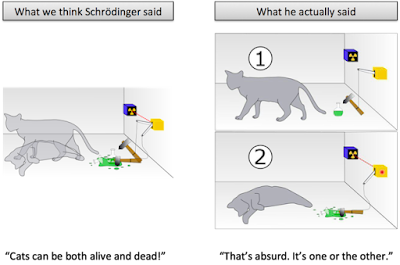 How We Misunderstood Schrödinger’s Cat
How We Misunderstood Schrödinger’s CatBack in the days before Wikipedia, though, it wasn't so easy to get quick summaries of what such pat formulae really meant. Hoffmann's Strange Story of the Quantum gave me my first real glimpse into how these discoveries had actually been made, without all the clichés. I suppose, in a sense, I've been looking for a sequel as good as that ever since.
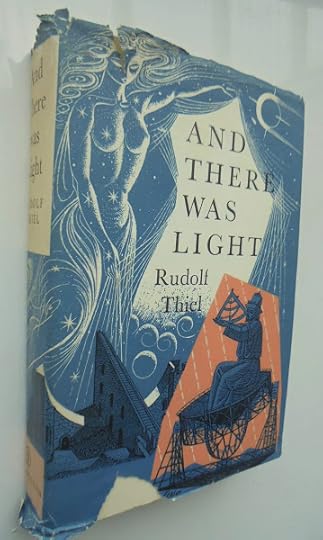 Rudolf Thiel: And There Was Light: The Discovery of the Universe (1958)
Rudolf Thiel: And There Was Light: The Discovery of the Universe (1958)Way before that, though, I encountered a copy of the book above in the Rangitoto College Library. Its admittedly somewhat simplistic account of the history of astronomy fascinated me, and it wasn't long before I found myself reading Arthur Koestler's rather more testing exploration of the same territory, The Sleepwalkers:
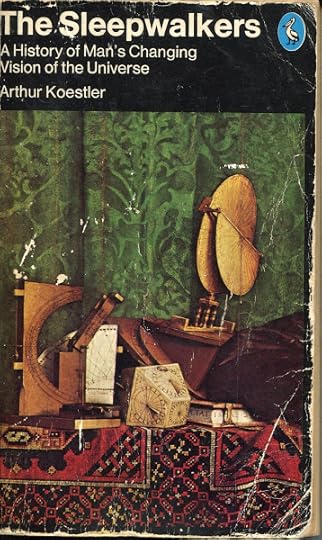 Arthur Koestler: The Sleepwalkers: A History of Man’s Changing Vision of the Universe (1958)
Arthur Koestler: The Sleepwalkers: A History of Man’s Changing Vision of the Universe (1958)Like most of Koestler's work, it's suffered a bit of an eclipse in recent times. There are certainly many eccentricities in his account of the birth of modern cosmology. His decision to end with Newton, on the rather flimsy pretext that we still inhabit an essentially Newtonian universe, is particularly frustrating.
What's great about the book is its engagé and even, at times, polemic tone. Koestler argues his case passionately, and he makes it clear that sticking to the comfortable concensus of opinion is not an option. He follows the evidence where it leads him - a strong encouragement to his readers to do the same. I've read the book so many times I practically know it by heart, but the lengthy account of his hero Kepler's life and times still gives me a thrill after all these years.
 Andrew Hodges: Alan Turing: The Enigma of Intelligence (1958)
Andrew Hodges: Alan Turing: The Enigma of Intelligence (1958)One of the advantages of having been a Sci-fi fan since my early teens is that boffin extraordinaire Alan Turing was well known to me long before the details of his wartime service at Bletchley Park were revealed. The "Turing test" was a frequent subject of discussion in the SF magazines I read, and his vital part in the creation of modern computers was common knowledge to us Sci-fi mavens long before the name "Enigma" ever strayed into print.
And, like everyone else, I stumbled through the pages of Douglas Hofstadter's Gödel, Escher, Bach with increasing bewilderment - until, that is, I made the reluctant decision to skip the pages of exercises and simply try to follow the text.
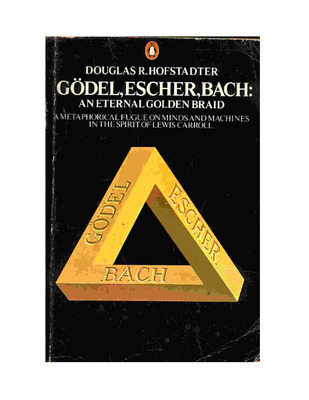 Douglas Hofstadter: Gödel, Escher, Bach: An Eternal Golden Braid (1999)
Douglas Hofstadter: Gödel, Escher, Bach: An Eternal Golden Braid (1999)•
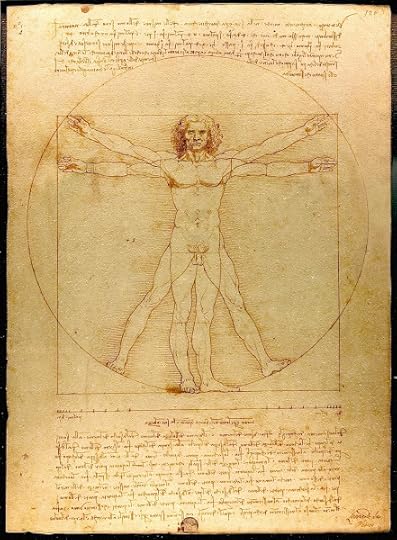 Leonardo da Vinci: Vitruvian Man (c.1490)
Leonardo da Vinci: Vitruvian Man (c.1490)Would I had phrases that are not known, utterances that are strange, in new language that has not been used, free from repetition, not an utterance which has gone stale, which men of old have spoken. - Khakheperressenb, an Ancient Egyptian scribe [quoted in Genius, p.326]
Do I feel better for having read all these books? Not particularly. They mostly just succeeded in underlining for me the gulf between my kind of knowledge and the mathematical, scientific kind.
At least I've ended up knowing a bit more about what I don't know, though. I get enough from them to see the bankruptcy of the simplified explanations we tend to rely on. So in that sense I do feel a bit better educated.
Each one I pick up still gives me a shiver of hope, however. As Liza Minnelli once put it: "Maybe this time ..." In any case, it seems to be enough to keep me filling in these gaps in - at the very least - my knowledge of the history of science.
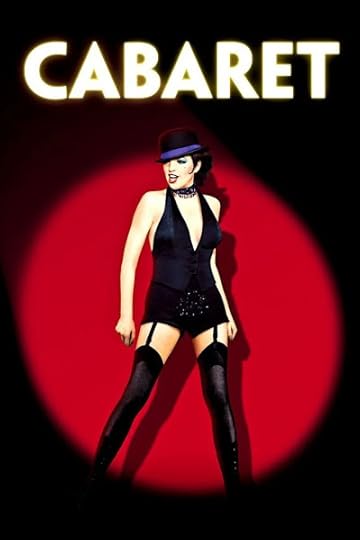 Minnellian Woman: Cabaret (1972)
Minnellian Woman: Cabaret (1972)I wonder, too, if any of this fascination has manifested itself in my own work? My first novel, Nights with Giordano Bruno, for instance, concludes with the diagram below - chosen, I suppose, as a kind of distorted mirror-image of Da Vinci's Vitruvian man.
The novel itself is ordered according to a mad numerological scheme, inspired principally by the Memory Palaces described in Frances Yates' classic account The Art of Memory (1966). I suppose that the simultaneous fascination and distrust I feel for such ways of ordering the mind has been influenced also, by all this reading about modern science: its apparently chaotic and arbitrary nature, combined with its inability to find a way out of its dialectic structures, are continually belied by the practical success its towering edifices of thought repeatedly achieve in the (so-called) "real world".
What else can a poor humanist do, under such circumstances, than construct a Don Quixote-like parody of the kinds of rabbit-hole thinking which have become more and more prevalent over the past 25 years?
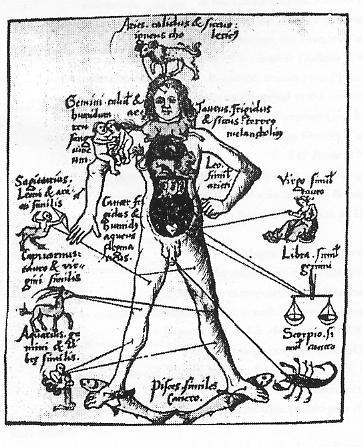 Jack Ross: Nights with Giordano Bruno (2000)
Jack Ross: Nights with Giordano Bruno (2000)•
 NAASP: Stars
NAASP: StarsCosmology, Mathematics & Physics
Giordano Bruno (1548-1600)Nicolaus Copernicus (1473-1543)Albert Einstein (1879-1955)Richard P. Feynman (1918-1988)Galileo Galilei (1564-1642)Stephen Hawking (1942-2018)Douglas R. Hofstadter (1945- )Johannes Kepler (1571-1630)Isaac Newton (1643-1727)J. Robert Oppenheimer (1904-1967)Ernest Rutherford (1871-1937)Alan Turing (1912-1954)Anthologies & Secondary Literature
Filippo [Giordano] Bruno (1548-1600)
Bruno, Giordano. Candelaio. Ed. Giorgio Bárberi Squarotti. Collezione di Teatro, 59. 1964. Torino: Giulio Einaudi Editore, 1981.
[Bruno, Giordano. ‘La Cena de le Ceneri’. 1584. In Opere Italiani. Volume 1: Dialoghi Metafisici. Ed. Giovanni Gentile. 3 vols. 1907-9. Bari: Gius. Laterza & Figli, 1907. 1-126, 415-17. / ‘De Gli Eroici Furori’. 1585. In Opere Italiani. Volume 2: Dialoghi Morali. Ed. Giovanni Gentile. 3 vols. 1907-9. Bari: Gius. Laterza & Figli, 1908. xii-xix, 377, 408, 434. / Firpo, Luigi. Il Proceso di Giordano Bruno. Quaderni della Rivista Storica Italiana, 1. Napoli: Edizioni Scientifiche Italiane, 1949. 16-17, 46-51, 54-61, 104-5, 120. / Frigerio, Maurilio. ‘Cronologia.’ In Invito al Pensiero di Giordano Bruno. Milano: Gruppo Ugo Mursia Editore S.p.A, 1991. 5-17.]
Bruno, Giordano. La Cena de le Ceneri: The Ash Wednesday Supper. 1584. Ed. & Trans. Edward A. Gosselin & Lawrence S. Lerner. 1977. Renaissance Society of America Reprint Texts, 4, 59. Toronto: University Of Toronto Press, 1995.
Bossy, John. Giordano Bruno and the Embassy Affair. 1991. London: Vintage , 1992.
Filippini, Serge. The Man in Flames. 1990. Trans. Liz Nash. Dedalus Europe 1999. Sawtry, Cambs: Dedalus Ltd., 1999.
Fulin, R., ed. Giordano Bruno a Venezia: Documenti inediti tratti dal Veneto Archivio Generale. Nobilissime Nozze: Comello - Totto. Venezia: Tip. Editrice Antonelli, 1864.
Nicolaus Copernicus (1473-1543)
Gingerich, Owen. The Book Nobody Read: Chasing the Revolutions of Nicolaus Copernicus. 2004. Arrow Books. London: The Random House Group Limited, 2005.
Rosen, Edward, trans. Three Copernican Treatises: The Commentariolus of Copernicus / The Letter against Werner / The Narratio Prima of Rheticus. Second Edition, Revised with an Annotated Copernicus Bibliography, 1939-1958. 1939. New York: Dover Publications, 1959.
Albert Einstein (1879-1955)
Einstein, Albert. Relativity: The Special and General Theory. A Popular Exposition. 1916. Trans. Robert W. Lawson. 1920. London: Methuen & Co. Ltd., 1977.
Bodanis, David. E = mc2: A Biography of the World's Most Famous Equation. Macmillan. London: Macmillan Publishers Limited, 2000.
Richard Phillips Feynman (1918-1988)
Feynman, Richard P. Six Easy Pieces. 1995. Harmondsworth: Penguin, 1998.
Gleick, James. Genius: Richard Feynman and Modern Physics. 1992. An Abacus Book. London: Little, Brown and Company (UK), 2000.
Galileo Galilei (1564-1642)
Santillana, Giorgio de. The Crime of Galileo. 1955. Time Reading Program Special Edition. 1962. Alexamdria, Virginia: Time Life Books Inc., 1981.
Sobel, Dava. Galileo’s Daughter: A Drama of Science, Faith and Love. London: Fourth Estate, 1999.
Stephen William Hawking (1942-2018)
Hawking, Stephen. The Illustrated A Brief History of Time: Updated & Expanded Edition. 1988. A Labyrinth Book. London: Bantam Press, 1996.
Hawking, Stephen. Black Holes and Baby Universes and Other Essays. London: Bantam Press, 1993.
Hawking, Jane. Travelling to Infinity: My Life with Stephen. ['Music to Move the Stars, 1999]. Rev. ed. 2007. Richmond, Surrey: Alma Books, 2014.
Douglas Richard Hofstadter (1945- )
Hofstadter, Douglas R. Gödel, Escher, Bach: An Eternal Golden Braid. 1979. Harmondsworth: Penguin, 1981.
Hofstadter, Douglas R. Metamagical Themas: Questing for the Essence of Mind and Pattern. 1985. Harmondsworth: Penguin, 1987.
Hofstadter, Douglas R., & Daniel C. Dennett, ed. The Mind’s I: Fantasies and Reflections on Self and Soul. 1981. Harmondsworth: Penguin, 1982.
Johannes Kepler (1571-1630)
Banville, John. The Revolutions Trilogy: Doctor Copernicus; Kepler; The Newton Letter. 1976, 1981, 1982. Picador. 2000. London: Macmillan Publishers Ltd., 2001.
Connor, James A. Kepler’s Witch: An Astronomer’s Discovery of Cosmic Order Amid Religious War, Political Intrigue, and the Heresy Trial of His Mother. With Translation Assistance by Petra Sabin Jung. 2004. HarperSanFrancisco. New York: HarperCollins, 2005.
Koestler, Arthur. The Sleepwalkers: A History of Man's Changing Vision of the Universe. Introduction by Herbert Butterfield. New York: The Macmillan Company, 1959.
Isaac Newton (1643-1727)
More, Louis Trenchard. Isaac Newton: A Biography, 1642-1727. 1934. New York: Dover Publications, 1962.
Julius Robert Oppenheimer (1904-1967)
Bird, Kai, & Martin J. Sherman. American Prometheus: The Triumph and Tragedy of J. Robert Oppenheimer. 2005. London: Atlantic Books, 2009.
Monk, Ray. Inside the Centre: The Life of J. Robert Oppenheimer. Jonathan Cape. London: Random House, 2012.
Ernest Rutherford (1871-1937)
Campbell, John. Rutherford: Scientist Supreme. Christchurch: AAS Publications, 1999.
Alan Mathison Turing (1912-1954)
Hodges, Andrew. Alan Turing: The Enigma of Intelligence. 1983. London: Unwin Paperbacks, 1989.
Anthologies & Secondary Literature
Abbott, Edwin A. Flatland: A Romance of Many Dimensions by A. Square. Illustrations by the Author. 1884. Classic Science Fiction. Harmondsworth: Penguin, 1986.
Casti, John L. Paradigms Lost: Tackling the Unanswered Mysteries of Modern Science. 1989. Avon Books. New York: The Hearst Corporation, 1990.
Crombie, A. C. Augustine to Galileo. Volume 1: Science in the Middle Ages, 5th – 13th Centuries. 1959. A Peregrine Book. Harmondsworth: Penguin, 1969.
Crombie, A. C. Augustine to Galileo. Volume 2: Science in the Later Middle Ages and Early Modern Times, 13th – 17th Centuries. 1959. A Peregrine Book. Harmondsworth: Penguin, 1969.
Duncan, David Ewing. The Calendar: The 5000-year Struggle to Align the Clock and the Heavens – and What Happened to the Missing Ten Days. London: Fourth Estate, 1998.
Euclid. The Thirteen Books of the Elements / Archimedes. The Works, Including the Method / Apollonius of Perga. On Conic Sections / Nichomachus of Gerga. Introduction to Arithmetic. Trans. Thomas L. Heath, R. Catesby Taliaferro, & Martin L. D’Ooge. 1926 & 1939. Great Books of the Western World, 11. Ed. Robert Maynard Hutchins. Chicago: William Benton, Publisher / Encyclopaedia Britannica, Inc., 1952.
Greene, Brian. The Fabric of the Cosmos. 2004. London: Penguin, 2008.
Hoffmann, Banesh. The Strange Story of the Quantum. 1947. A Pelican Book. Harmondsworth: Penguin, 1963.
Kuhn, Thomas S. The Structure of Scientific Revolutions: 50th Anniversary Edition. 1962. Introductory Essay by Ian Hacking. Chicago & London: University of Chicago Press, 2012.
Landes, David S. Revolution in Time: Clocks and the Making of the Modern World. 1983. Rev. ed. 1998. Viking. Harmondsworth: Penguin, 2000.
Popper, Karl R. The Logic of Scientific Discovery. 1934. Trans. by the author with Dr. Julius Feed & Ian Feed. 1959. Mansfield Center, CT: Martino Fine Books, 2014.
Poundstone, William. Prisoner’s Dilemma: John von Neumann, Game Theory, and the Puzzle of the Bomb. New York: Doubleday, 1992.
Ptolemy. The Almagest / Copernicus. On the Revolutions of the Heavenly Spheres / Kepler. Epitome of Copernican Astronomy: IV & V; The Harmonies of the World: V. Trans. R. Catesby Taliaferro, & Charles Glenn Wallis. Great Books of the Western World, 16. Ed. Robert Maynard Hutchins. Chicago: William Benton, Publisher / Encyclopaedia Britannica, Inc., 1952.
Rucker, Rudy. The Fourth Dimension, and How to Get There. Foreword by Martin Gardner. Illustrations by David Povilaitis. 1985. Harmondsworth: Penguin, 1986.
Segrè, Gino. Faust in Copenhagen: The Struggle for the Soul of Physics and the Birth of the Nuclear Age. 2007. Pimlico. London: Random House, 2008.
Singh, Simon. Fermat’s Last Theorem: The Story of a Riddle that Confounded the World’s Greatest Minds for 358 Years. Foreword by John Lynch. 1997. London: Fourth Estate, 2002.
Singh, Simon. Big Bang: The Most Important Scientific Discovery of All Time and Why You Need to Know About It. 2004. London: Harper Perennial, 2005.
Teresi, Dick. Lost Discoveries: The Ancient Roots of Modern Science - from the Babylonians to the Maya. New York: Simon & Schuster, 2002.
Thiel, Rudolf. And There was Light: The Discovery of the Universe. Trans. Richard & Clara Winston. London: Andre Deutsch, 1958.
•
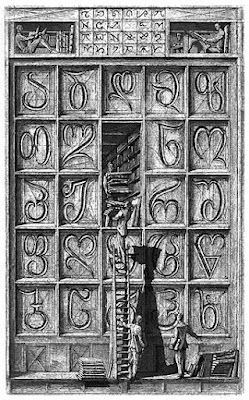 Erik Desmazières: The Library of Babel (1997)
Erik Desmazières: The Library of Babel (1997)
Published on October 31, 2025 14:28
October 28, 2025
Auckland Central Library Seminar (8/11/25)
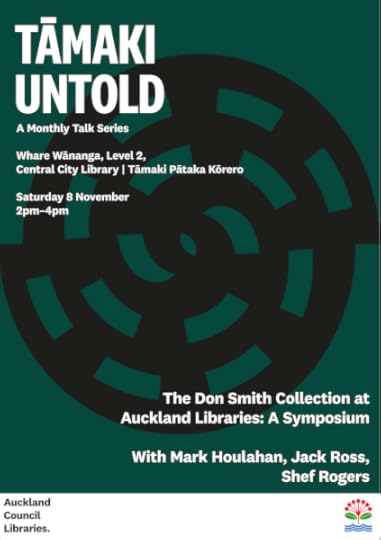
This is just a heads-up to remind any of you who might be interested about the latest in the Central Library's Tāmaki Untold series: a set of short papers designed to celebrate the recent donation of more than 200 pre-1801 books from the collection of my friend and mentor Professor Don Smith to Auckland Libraries earlier this year.
[NB: Previous talks in the series can be accessed at this link].
Here are some more details about Saturday's event:
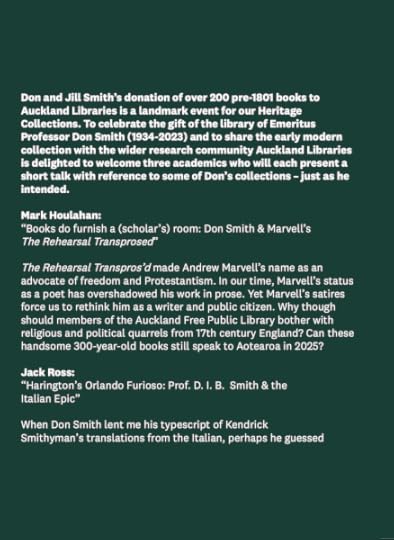
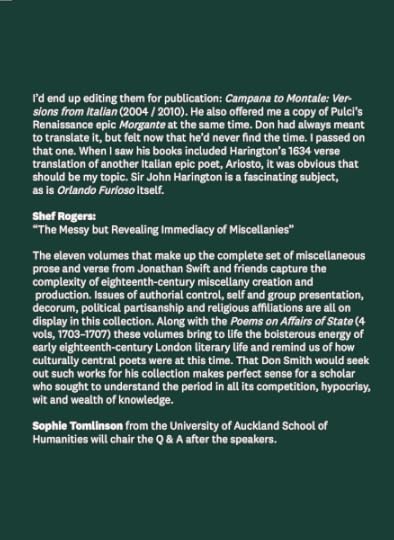

If you'd like to know more, there's further information available at this link.
 Sir John Harington: Orlando Furioso in English Heroical Verse (1634)
Sir John Harington: Orlando Furioso in English Heroical Verse (1634)•
 Jane Wild: l-to-r: Mark Houlahan, Shef Rogers, Jack Ross & Renee Orr (8/11/25)
Jane Wild: l-to-r: Mark Houlahan, Shef Rogers, Jack Ross & Renee Orr (8/11/25)[9/11/25]: Well, the Symposium has now taken place, and - from my point of view, at any rate - seemed to go very well. I found Mark Houlahan's and Shef Roger's papers both amusing and informative. I hope the same was true of my own.
In any case, it was great to see so many old friends there - as well as Don Smith's wife Jill, and his two daughters Penelope and Caitlin.
Here's the text of what I had to say - though I suspect I added a few asides here and there. These will no doubt be available on the podcast recording which the library is planning to release on its Tāmaki Untold site sometime soon.
It remains just to thank the incomparable Jane Wild and her research and special collections team at the Auckland Central Library - Renee Orr, Andrew Henry, Florette Cardon, Ian Snowdon, Annette Keogh and Julian Lubin - for their indispensable help with this event.
•Sir John Harington: Orlando Furioso in English Heroical Verse (1634)
Sir John Harington’s Orlando Furioso:
Prof. D. I. B. Smith & the Italian Epic
Cosa non detta in prosa mai né in rima
When I was asked to speak about one item from Don Smith’s collection, I chose his copy of the revised, 1634 edition of Sir John Harington's 1591 verse translation of Italian poet Lodovico Ariosto’s early sixteenth-century epic Orlando Furioso – "Roland run Mad" might be a good translation of that title.
Why? Partly because I like Ariosto; but also because this, the first full version of his work in English, has its own peculiar interest. Its author, Sir John Harington, was "an English courtier, author and translator, popularly known as the inventor of the flush toilet." Taking that last point first:He was the author of the description of a flush-toilet forerunner ... in A New Discourse of a Stale Subject, called the Metamorphosis of Ajax (1596), a political allegory and coded attack on the monarchy ...The toilet in question, though actually installed in his Kelston house, was used in his book mainly as a metaphor for the "backed-up" nature of business at court: Ajax = A jakes. Get it? Harington was a friend and supporter of the last of Elizabeth I's favourites, the glamorous Earl of Essex, whose failed attempt at a coup d'état against the aging Queen led to a slew of executions in the final years of her reign.
Characteristically, Harington himself escaped any dire consequences by acting as an informant against his former patron. As he put it in his most famous epigram:Treason doth never prosper? What's the reason?Harington first came to court in the 1580s. His poetry and witty conversation earned him immediate favour from the Queen, but he “was inclined to overstep the mark in his somewhat Rabelaisian and occasionally risqué pieces.” When the first sections of his Orlando Furioso began to circulate, the Queen had had enough:
For if it prosper, none dare call it Treason.Angered by the raciness of his translations, Elizabeth told Harington that he was to leave and not return until he had translated the entire poem. She … considered the task so difficult that it was assumed Harington would not bother to comply. Harington, however, chose to follow through with the request and completed the translation in 1591.His later years at the court of King James were less happy. He was (briefly) imprisoned for debt, and even after being pardoned by the King, who made him tutor to the Prince of Wales, Harington failed to prosper. The job came to a premature conclusion when his pupil died of typhoid fever. Harington followed him two weeks later.
He's not an entirely forgotten man, however:Harington appeared as a ghost in an episode of South Park in 2012. He seizes this opportunity to explain how to use his invention, the toilet, properly.I suspect, though, that he would prefer to be remembered for the immense labour involved in translating the lion's share of Orlando Furioso’s 38,736 lines. To give you some standard of comparison, Milton's Paradise Lost contains roughly 10,000 lines – incidentally, Milton copied his famous line "Things unattempted yet in Prose or Rhyme" from Ariosto's phrase "cosa non detta in prosa mai, né in rima". Only Spenser's incomplete Faerie Queene (1590-96), clocking in at over 36,000 lines, can rival the sheer scope of Ariosto's masterpiece, first published, in part, in 1516; in full, in 1532.Sir John Harington: Orlando Furioso in English Heroical Verse (1634)
Let's take a look at its opening lines. Here's Ariosto's description of his plans for the poem:Le donne, i cavallier, l'arme, gli amori,Harington has these as:
le cortesie, l'audaci imprese io canto,
che furo al tempo che passaro i Mori
d'Africa il mare, e in Francia nocquer tanto,
seguendo l'ire e i giovenil furori
d'Agramante lor re, che si diè vanto
di vendicar la morte di Troiano
sopra re Carlo imperator romano.Of Dames, of Knights, of armes, of loues delight,Ariosto goes on:
Of courtesies, of high attempts I speake,
Then when ye Moores transported all their might
On Africke seas, the force of France to breake:
Incited by the youthfull heate and spight
Of Agramant their king, that vowd to wreake
The death of King Trayana (lately slaine)
Vpon the Romane Emperour Charlemaine.Dirò d'Orlando in un medesmo trattoHere’s Harington’s version:
cosa non detta in prosa mai, né in rima:
che per amor venne in furore e matto,
d'uom che sì saggio era stimato prima;
se da colei che tal quasi m'ha fatto,
che 'l poco ingegno ad or ad or mi lima,
me ne sarà però tanto concesso,
che mi basti a finir quanto ho promesso.I will no lesse Orlandos acts declare,Compared to Italian, English is a language poor in rhymes. It can be hard for poets not to rhyme in Italian: they spring up naturally as a result of having so many similar endings for their words.
(A tale in prose ne verse yet sung or sayd)
Who fell bestraught with loue, a hap most rare,
To one that earst was counted wise and stayd:
If my sweet Saint that causeth my like care,
My slender muse affoord some gracious ayd,
I make no doubt but I shall haue the skill,
As much as I haue promist to fulfill.
In English, on the other hand, fluent rhyming is desperately difficult to achieve, and those good at it are a breed apart. Ostentatiously clever rhymes tend to sound comic and A. A. Milne-ish, though, unless you're very careful to maintain a formal register.
None of the English versions of Ariosto can really be said to achieve his witty lightness of touch. Probably the closest thing to it in our language would be Byron's Don Juan – and that's more social satire than fantasy. Ben Jonson described Harington’s Orlando Furioso as of " all translations ... the worst" – though unfortunately his host William Drummond, who made a record of the poet's conversation, failed to explain why.
It's true that Harington takes considerable liberties with Ariosto's original text – even here, at the outset of the poem. What, for example, is his justification for transforming the poet's captious mistress (Alessandra Benucci) – referred to in the Italian simply as "colei" [she] – into "my sweet Saint"? Is it possible he intended to invoke Gloriana herself as his muse?
As Jane Everson put it in her 2005 article on Harington's translation:That Harington significantly abbreviated the text of the Orlando furioso is well known; what has not been closely studied is how he does so and the extent to which his modifications are not linguistically but culturally motivated. A close reading reveals changes designed to take account of differing cultural, political, and ideological factors between early sixteenth-century Ferrara and Elizabethan England.Harington’s own justification for this practice was simpler:For my omitting and abreuiating some things, either in matters impertinent to vs, or in some too tedious flatteries of persons that we neuer heard of, if I haue done ill, I craue pardon; for sure I did it for the best … But yet I would not haue any man except, that I should obserue his phrase so strictly as an interpreter, nor the matter so carefully, as if it had bene a storie, in which to varie were as great a sin, as it were simplicitie in this to go word for word.That last sentence seems to invite comparison with translations of Holy Writ, which, by definition, require absolute attentiveness to the meaning and placement of each word.
•
In the section on Ariosto in his 1936 book The Allegory of Love, C. S. Lewis claimed that the ideal happiness he would choose, "if he were regardless of futurity":would be to read the Italian epic – to be always convalescent from some small illness and always seated in a window that overlooked the sea, there to read these poems eight hours of each happy day.Nowadays, when we use the term “Italian Epic”, we tend to mean Dante’s 14th-century masterpiece The Divine Comedy. But that’s not what C. S. Lewis was referring to.
No, for him – and for Sir John Harington and his contemporaries – “Italian epic” meant narrative poets such as Boiardo, Ariosto, and Tasso. And all of them – it’s important to note – appeared in English long before Dante. The first full translation of the Divine Comedy didn’t actually appear until 1785–1802. Henry Cary's, the first to be widely read, didn’t come out till 1814. Nor is it an accident that this coincided with the rise of the Romantic movement.
Mind you, educated English readers were expected to have enough Italian to follow Dante in the original – but then, the same argument would apply to the other poets in the list above. So why did they overshadow him for so long?
Perhaps simply because they’re so much more light-hearted and entertaining. The first major poem in this vein was by Luigi Pulci (1432-1484):an Italian diplomat and poet best known for his Morgante, an epic and parodic poem about a giant who is converted to Christianity by Orlando and follows the knight in many adventures.At one of our last meetings, Don Smith offered me his own two-volume pocket edition of Pulci's Morgante Maggiore. He'd been meaning to translate it himself, he said, but felt that he would never now have the leisure or concentration for the job. And yet it was, he claimed, an essential stepping-stone in the road from Boiardo's Orlando Innamorato to its scene-stealing sequel, Ariosto's Orlando Furioso. And (unlike them) it had never been translated in full into English!
I'm sorry to say that I turned him down. I’d already Englished a few pieces by Petrarch – and those were difficult enough to give me some idea of what a Sisyphean task such a translation would be. I'm glad to announce, though, that the job has finally been completed:In 1983 the Italian-American poet Joseph Tusiani translated in English all 30,080 verses of this work ... [It was] published as a book in 2000.Before that, all that non-Italian-speaking readers had to go on was Byron's 1822 version of Canto One.
Pulci’s contemporary Matteo Maria Boiardo (1440-1494) is best known for his epic poem Orlando innamorato [Orlando in Love]. He grew up in Ferrara, at the court of the d’Este family, who became his patrons.The first translation of Boiardo into English was Robert Tofte's Orlando Inamorato: The Three First Bookes (1598) ...Unfortunately for his posthumous reputation, Boiardo himself fell victim to the Italian vernacular culture wars.Pietro Bembo's reformation of the language in 1525, the rediscovery of Aristotle's Poetics in the 1530s, and the incipient Counter-Reformation in the 1540s all caused [Orlando Innamorato] to fall from favour amongst critics and writers … who found it lacking on linguistic, theoretical, and moral grounds. Gradually, Boiardo's original version was supplanted by Francesco Berni's rifacimento (1542), a recasting of the poem in literary Tuscan ...It wasn't until the nineteenth century that Boiardo's original was rediscovered, and he began to take his proper place as one of the greatest Italian poets of the quattrocento.
It’s a shame, because Ariosto’s poem is a direct sequel to Bioardo’s, and requires at least some knowledge of the former poem for much of the action to make sense: the endless misadventures of Angelica, daughter of the King of the Indies, for instance.
Like its predecessor, Orlando Furioso:describes the adventures of Charlemagne, Orlando, and the Franks as they battle against the Saracens with diversions into many sideplots. [Here, however] The poem is transformed into a satire on the chivalric tradition.It's hard to exaggerate the far-ranging influence of Ariosto's epic. Its satire was far more subtle and subversive than Pulci's slapstick burlesque. The sheer pointlessness of chivalric endeavour was revealed through the endless (often absurd) additions Ariosto made to the original bald outline of Charlemagne's struggle with the Moors of Spain.Sir John Harington: Orlando Furioso in English Heroical Verse (1634)
These include Astolfo's famous journey to the Moon in search of Orlando's lost wits. Assisted by John the Evangelist, who lends him Elijah's fiery chariot for the purpose, Astolfo is astonished to see that the Moon, far from being the perfect, crystalline sphere described by contemporary cosmology, is in fact a kind of rubbish heap for everything lost or mislaid on Earth. He’s nevertheless successful in locating the bottle the mad knight’s wits have been stored in, and manages to induce him to inhale them, thus restoring his equilibrium.
The women in Ariosto’s story, too, are far more proactive than the usual blushing subjects of romance. They include Angelica, the principal heroine, perpetually in flight from one lovelorn swain or another; but also Morgana (the original "fata Morgana") who’s on the point of destroying the world with her enchantments when she is finally defeated by the astute Orlando.
Ariosto himself has been credited with the first use of the term “humanism” – “umanesimo” in Italian. Like most Renaissance thinkers, he saw himself mainly as a rediscoverer of the truths of antiquity: in this case the humanitas of Cicero. The satirical thrust of his creative work, however, invites comparison with Cervantes’s 17th-century novel Don Quixote.
It’s debatable whether the full extent of his iconoclasm was apparent to English readers such as Edmund Spenser, author of his own immensely serious – and, to be honest, somewhat ponderous – epic, The Faerie Queene. Perhaps that’s why Ben Jonson referred to Harington’s Orlando as “of all translations the worst.” The sceptical, worldly Jonson got it. Did Harington? Maybe not.
Unfortunately Ariosto, despite the obvious affinities of his work with the tropes of modern Speculative Fiction, is now little read outside literature classes: the immense length of his poem, and the decline of narrative verse as a medium for storytelling is no doubt largely responsible for this.
However, if you can bring yourself to open the pages of – say – Barbara Reynold’s fluent verse translation of the whole poem, available as a Penguin Classic, I’d say you were in for a treat. Whether the same can be said of Harington’s version is a matter of opinion. The book itself is gorgeous, though, full of notes and illustrations, and closely modelled on the earliest Venetian editions of the original text.Lodovico Ariosto: Orlando Furioso (1587)
[10/8-8/10/25 / 2390 wds]
•
I'll add here any further information or links that come to hand over time:
The full set of plates from Don Smith's copy of the 1634 edition of John Harington's translation are now available here, on the Auckland Council Libraries' Kura: Heritage Collections Online site.A fuller account of my own collection of books on the Italian Epic tradition can be found here, on my bibliography site A Gentle Madness ."Three 'illuminating talks' at the Don Smith Symposium." Auckland library Heritage Trust blog (8/11/25)
•
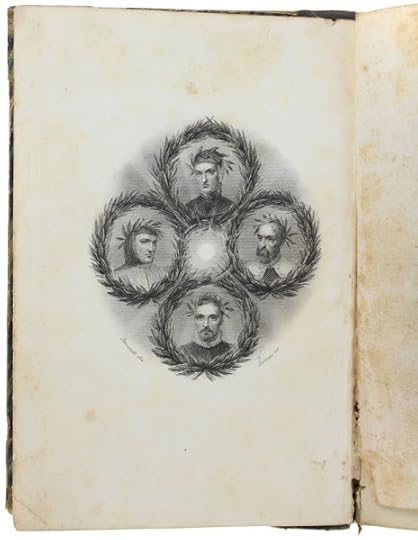 I quattro Poeti Italians (1859)
I quattro Poeti Italians (1859)l-to-r: Dante, Petrarca, Ariosto, Tasso
Published on October 28, 2025 19:21
October 14, 2025
Spooky TV Shows II: How do you prove if ghosts are real?
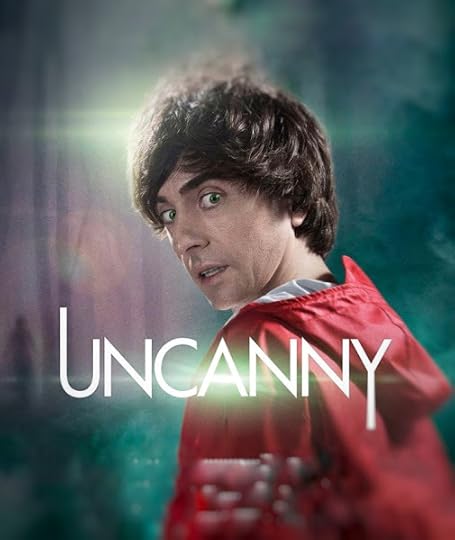 Danny Robins: Uncanny (2023-25)
Danny Robins: Uncanny (2023-25)A few years ago I wrote a kind of round-up of supernatural TV shows past and present, with particular emphasis on the epically silly 28 Days Haunted. It seems that time has come round again. To quote from the film of Shirley Jackson's classic Haunting of Hill House :
No one will hear you, no one will come, in the dark, in the night.Each of the shows I'll be talking about below seems to illustrate a different approach to that age-old conundrum - not so much whether or not ghosts exist, as how best to scare the pants off people by suggesting that they do.
One is British, another American, and the third from Latin America.
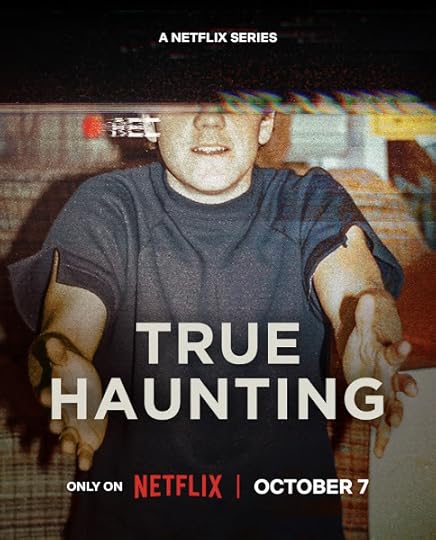 James Wan: True Haunting (2025- )
James Wan: True Haunting (2025- )This set of TV shows is a bit different from the last lot, though. Each of them is excellent - in its own, idiosyncratic way. And all of them (even Los Espookys) have interesting points to make about the whole subject of paranormal phenomena.
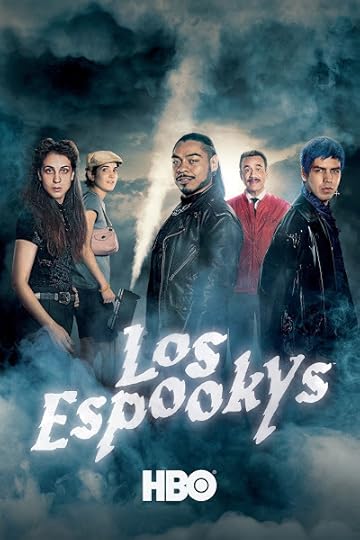 Julio Torres, Ana Fabrega & Fred Armisen: Los Espookys (2019-22)
Julio Torres, Ana Fabrega & Fred Armisen: Los Espookys (2019-22)At this point, though, I'd better go back to the question in my title: Whether or not you can actually prove the existence of ghosts. If your own answer to that is: You can't - because they don't, then that's the end of the conversation. There's no point in indulging in further debates over the meaning of the word "ghost" - discarnate entities of some sort, or direct proof of life after death? You've made up your mind. You're closed to further discussion.
Danny Glover's show Uncanny - based on his award-winning podcast - gets around this one in a rather ingenious way. He's appointed two teams: "Team Sceptic" - represented by psychologist Dr. Ciarán O'Keeffe; and "Team Believer" - represented by Scottish author and (former) psychology lecturer Evelyn Hollow.
The two are careful not to stray from their preset roles: Ciarán to come up with naturalistic explanations of any odd phenomena; Evelyn to contextualise the events and issues under discussion in the larger field of paranormal lore. And while this certainly makes for interesting, fun TV, it does leave to one side what seems to me the most important conceptual issue raised by such discussions:
What would constitute evidence of the existence of ghosts - or, for that matter, of life after death?If Ciaran in "Team Sceptic" is secretly of the opinion that no evidence would ever be enough: that anything can be explained away naturalistically: because it must be - in order to maintain the integrity of the scientific laws of nature, then we have a problem. There's no point in trying to convince him, because he's impervious to any accumulations of data which might eventually constitute proof.
After all, he wouldn't be the first to maintain such certainty:
At the end of the 19th century ... it was generally accepted that all the important laws of physics had been discovered and that, henceforth, research would be concerned with clearing up minor problems and particularly with improvements of method and measurement.If Ciarán and Evelyn were to have a real debate, though, I think that "Team Sceptic" would have to commit themselves in advance to a statement of what might constitute actual proof in their eyes. That is, admittedly, a huge ask, but it's a necessary one if we're serious about wanting to discuss the question.
"Team Believer" is, of course, in a much safer place conceptually. They can cherrypick evidence and information just as they please. They don't have to believe in the details of any particular case, because their overall openmindedness to the possibility of paranormal phenomena makes any such concessions unimportant. They can be as credulous or as hard-headed as they wish: they're already open to the possibility that the evidence cited could be true.
This is how Samuel Taylor Coleridge summed up the dilemma in an 1818 diary entry, collected in the posthumous Anima Poetae (1895):
If a man could pass through Paradise in a dream, and have a flower presented to him as a pledge that his soul had really been there, and if he found that flower in his hand when he awoke — Ay! and what then?
 Rodney Ascher, dir.: Room 237 (2012)
Rodney Ascher, dir.: Room 237 (2012)A few years ago I wrote a post about the fascinating documentary Room 237 , a compendium of all the crazy theories people had come up with to "explain" Stanley Kubrick's movie The Shining (1980).
It wasn't just that I found most of these readings of the film unconvincing, it was more that it seemed to me that their originators had no idea of the actual rules of argument: the nature of the evidence which could be considered admissible in such discussions.
They would say (for instance) that Jack Torrance was using a German brand of typewriter. Therefore, The Shining was a commentary on the Holocaust. Or else they'd notice a poster in one corner of the Overlook Hotel rec room which vaguely resembled (from some angles) a horned bull. Therefore, the film is based on the legend of Theseus and the Minotaur.
Their readings were, to my mind, a series of non sequiturs and conceptual leaps based on insufficient evidence. As I put it in my post, it's not so much whether or not I agreed or disagreed with these theories, it's more a question of the nature of truth. "There is no truth, only points of view," is a much-quoted (and variously attributed) adage which often comes up in such discussions. I remarked in my post:
The way I prefer to approach the word "truth" is by means of a question: Do you recognise the existence of error? In other words, is a misreading a possibility for you? For instance, if you were to read out a passage in a foreign language unknown to you, and then make guesses at the meaning of some of the words, would this be a legitimate "interpretation" of the passage - or simply a manifestation of ignorance?The question of whether or not you can understand a foreign language is, I think, a good test of one's relation to truth and "alternate facts" (as they're now notoriously known):
There's a gag I read once in a British magazine about literary receptions abroad, the ones where someone comes up to you and says, "Hello, I your translator am!" So, no, I'm unable to concur with the view that all truths are relative, and all interpretations equal.My French is not particularly grammatical, and I make a lot of mistakes when I speak it, but I can read a book in French and understand virtually all of it. Even a native speaker of a language has occasional headscratching moments when they can't quite follow a statement in their own tongue. But that doesn't alter the fact that my relation to the French language is different from that of someone who's never studied it at all.
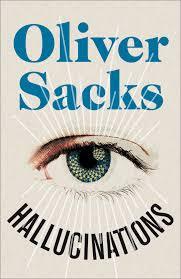 Oliver Sachs: Hallucinations (2012)
Oliver Sachs: Hallucinations (2012)So how does this relate to the question of the existence of ghosts? Well, of course it depends on a question I've left in the too-hard basket until now: what exactly is a "ghost"? What do you - or I - mean by the word? Almost all psychologists, para or otherwise, would accept that visual, auditory and even tactile hallucinations happen. Oliver Sachs wrote a fascinating book on the subject, which I would strongly recommend to any interested parties.
There's even - some would claim - a phenomenon called a "mass hallucination", which covers those sights, or sounds, or feelings which are shared by more than one person. Ciarán O'Keeffe, in his discussions of particular cases on Uncanny, tends to supplement this particular grab-all, get-out-of-jail-free-card explanation with other old chestnuts such as urban legends, or curious visual and auditory phenomena such as the Brocken spectre or auditory pareidolia, where "the brain tries to find patterns in ambiguous sounds."
When you put them all together, along with the notorious unreliability of witness evidence - which tends, unfortunately, to increase over time, Team Sceptic would seem to have a pretty impregnable position to defend. "You're lying!" - or, more charitably, "You must be mistaken" - covers most other contingencies.
Which is why I think someone who's taken on the responsibility of espousing this view should have to answer whether any evidence - of any type - could ever convince them of the existence of discarnate entities, or ghosts, or spirits of any kind? As I said above, if the answer is a firm no, then the conversation is pointless. They'll always find an alternative, naturalistic explanation for any event, however puzzling, simply because they must: for the sake of their mental health (or, if you prefer, life lie).
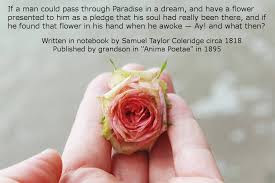 Samuel Taylor Coleridge: Anima Poetae
Samuel Taylor Coleridge: Anima PoetaeIn the case of Coleridge's flower, for instance - well, clearly it wasn't the same flower. It couldn't be. Coleridge was a notorious blabbermouth, and he'd probably been going on and on about this recurrent dream he'd been having, and some unscrupulous friend - perhaps that inveterate practical joker Charles Lamb - snuck in while he was asleep and put a flower in his hand. Har-de-ha-ha! Case closed. (That's if it ever happened in the first place. Which it probably didn't ...)
 Julio Torres, Ana Fabrega, Fred Armisen et al.: Los Espookys (2019-22)
Julio Torres, Ana Fabrega, Fred Armisen et al.: Los Espookys (2019-22)The absurd conundrums of Los Espookys, where a group of friends whose love of horror movies and spooky shit generally has inspired them to form a business faking ghostly phenomena - monsters and mermaids designed to bring back tourists to a deserted beach resort; a fluffy alien who gets asthma attacks whenever he disobeys the authoritarian teacher of a kindergarten class (thus terrifying the other children into obedience) - might seem a little distant from these more serious lines of inquiry.
That's not entirely true, though. The series of abridged editions of classic texts produced in one episode by the functionally illiterate character Tati are hugely, unexpectedly successful. Before long Don Quixote (the Tati edition) and her versions of many other more-praised-than-read books - One Hundred Years of Solitude, The Old Man and the Sea, Moby-Dick - have begun to take over. We see major publishing houses vying for distribution rights, school-children answering questions about Tati's ending for the Quixote ("Tati saw a butterfly on her nose and put down her pen" - "Correct!"). In other words, anything promulgated with sufficient authority has a good chance of being believed.
It's a small step from "that's ridiculous" to "I'm not sure that's exactly what Cervantes had in mind ..." What better metaphor for the present-day industry of the Afterlife, where flimsy assertions about the nature of "moving on to the light," stone tape theory, or EVP (electronic voice phenomena) have become so familiar through constant repetition that we no longer question whether or not there's any real evidence behind them?
if you're actually interested in proof of the existence of discarnate entities - as I regret to say I still am - none of this "common knowledge" is really of any use. However, the various cases discussed in Uncanny - and rather more dramatically reenacted in True Hauntings - are. Solely, however, because they're also accompanied by research and careful questioning of as many actual witnesses as possible.
Whenever the master of macabre fiction, M. R. James, was asked if he actually believed in ghosts:
I answer that I am prepared to consider evidence and accept it if it satisfies me.It's a pretty cautious answer, but I'm afraid that I may have to echo it. I continue to search for satisfactory evidence, but I have to say that Danny Robins' TV show, in particular, is the one of the best sources I've come across for a very long time.
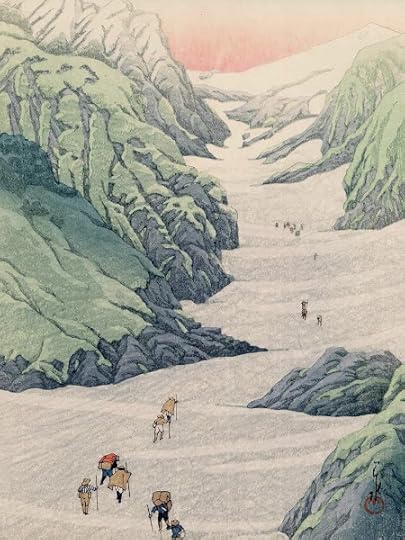 Hasui Kawase: Snow Valley Climbers on Mt. Shirouma (1935)
Hasui Kawase: Snow Valley Climbers on Mt. Shirouma (1935)•
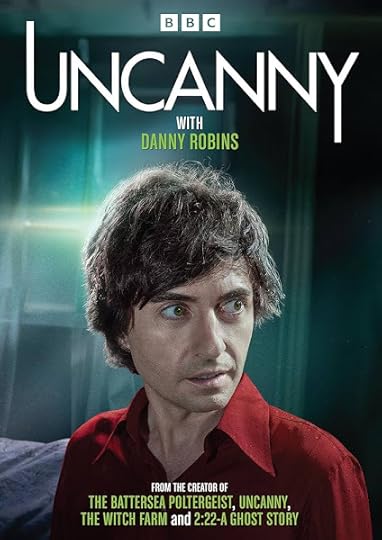 Danny Robins: Uncanny (2023-25)
Danny Robins: Uncanny (2023-25)Uncanny
(2 Series: 2023-25)
List of Episodes:Series 1 (2023):
Case 1: Miss Howard
Danny Robins asks if a young girl in rural Cambridgeshire was visited by the apparition of an Edwardian school teacher? He also examines a Canadian psychological experiment and a time slip in Liverpool.Case 2: The Bearpark Poltergeist
Danny investigates Ian's claims that his childhood home in County Durham was plagued by poltergeist activity. He investigates the area's mining history, the science of sleep paralysis and even the mechanics of a flushing toilet.Case 3: The Oxford Exorcism
The first series concludes with Danny looking into the case of a student house believed to be haunted by a malevolent entity. It is one of the most unsettling cases Danny has ever come across. But could it simply be a shared delusion?
Series 2 (2025):
Case 1: The Haunting of Hollymount Farm
The return of the programme in which Danny Robins investigates real-life stories of seemingly paranormal encounters. Tonight, he meets Liam, who spent his youth terrified by a ghostly child on his family's Hollymount Farm.Case 2: The Charity Shop Poltergeist
Danny Robins meets Sibyl, the manager of a shop where multiple staff have witnessed the terrifying presence of a man who appeared to be watching their every move. Danny researches the building's past and explores Stone Tape Theory.Case 3: Shadow Man
In this third case, Danny Robins meets Julian and hears of one of the most frightening cases he's ever investigated - a young man tormented by a towering, terrifying shadow figure.Case 4: Emily's Room
Danny Robins meets a mother and daughter who believe they were haunted by a sinister figure intent on hurting them. But were the events truly supernatural?
•
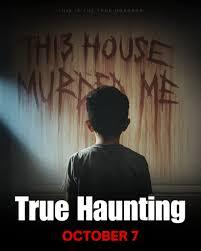 Facebook: True Haunting (October, 2025)
Facebook: True Haunting (October, 2025)True Haunting
(1 Series: 2025)
List of Episodes:Case 1:
Eerie Hall: Part 1
Geneseo college 1984. Avid runner Chris Di Cesare is keen to start his freshman year until strange voices and inexplicable feelings of dread set in.Eerie Hall: Part 2
As Chris becomes increasingly isolated, a friend urges him to try communicating with the entity that haunts him. But his waking nightmares only worsen.Eerie Hall: Part 3
Rumors fly after a friend's harrowing encounter. After making an ominous discovery while running with his father, Chris decides to face the force alone.
Case 2:
This House Murdered Me: Part 1
Eager to start fresh, a young family moves into a dreamy Victorian-style mansion. But the fixer-upper soon becomes costly and deeply disturbing.This House Murdered Me: Part 2
From burning sage to hiring paranormal investigators, April and Matt fight for the house. Can they face its horrifying history and win their home back?
•
 Interview: Julio Torres & Ana Fabrega (2022)
Interview: Julio Torres & Ana Fabrega (2022)Los Espookys
(2 Series: 2019-22)
List of Episodes:Series 1 (2019):
El exorcismo [The Exorcism]:
(with Bernardo Velasco & Julio Torres)
Four friends start a new business based on their shared love of horror.El espanto de la herencia [The Inheritance Scare]:
(with Ana Fabrega & Julio Torres)
Los Espookys are tasked with scaring five would-be heirs to a millionaire's fortune.El monstruo marino [The Sea Monster]:
(with Ana Fabrega)
Renaldo creates a new tourist attraction for a seaside town. Tico eyes a new partnership for Los Espookys.El espejo maldito [The Cursed Mirror]:
(with Cassandra Ciangherotti, Bernardo Velasco, & Julio Torres)
Los Espookys fake an abduction in exchange for work visas. Tico helps co-write a new horror film.El laboratorio alienigena [The Alien Lab]:
(with Cassandra Ciangherotti, Bernardo Velasco, Ana Fabrega, & Julio Torres)
Los Espookys help a high-maintenance researcher bring aliens to life; meanwhile, they remain divided on Bianca's screenplay.El sueño falso [The Fake Dream]:
(with Cassandra Ciangherotti, Ana Fabrega, & Julio Torres)
Andrés and Úrsula are left to plan a fake dream for an insomnia patient.
Series 2 (2022):
Los Espiritus en el Cementerio [The Spirits in the Cemetery]:
(with Cassandra Ciangherotti, Bernardo Velasco, Ana Fabrega, & Julio Torres)
Los Espookys put their life changes aside to pose as ghosts for an incompetent groundskeeper hoping to get bereaved families off his back.Bibi's :
(with Bernardo Velasco)Fri, Sep 23, 2022
Andrés searches for a new place to live as Tati's marriage deteriorates. Meanwhile, Los Espookys create a monster named Bibi's.Las Ruinas [The Ruins]:
(with Fred Armisen, Cassandra Ciangherotti, Ana Fabrega, & Julio Torres)
Úrsula assists Mayor Teresa's bid for president, while Los Espookys, joined by Tico, help a professor stage a fake archaeological site.Las Muchas Caras de un Hombre [One Man's Many Faces]:
(with Yalitza Aparicio)
As the group's paths diverge, Renaldo decides to investigate the death of slain pageant queen Karina, whose ghost continues to haunt him.El Virus [The Virus]:
(with Greta Titelman)
An actor recruits an increasingly tense Los Espookys to cancel her sitcom, while Ambassador Melanie gets devastating news about a dream job.El Eclipse [The Eclipse]:
(with Carmen Gloria Bresky)
Los Espookys stage an eclipse during Mayor Teresa's last election speech. Tico helps Andrés. Renaldo seeks closure over Karina's murder.
 Cassandra Ciangherotti & Julio Torres in Los Espookys (2020)
Cassandra Ciangherotti & Julio Torres in Los Espookys (2020)
Published on October 14, 2025 12:35
How do you prove if ghosts are real?
 Danny Robins: Uncanny (2023-25)
Danny Robins: Uncanny (2023-25)A few years ago I wrote a kind of round-up of supernatural TV shows past and present, with particular emphasis on the epically silly 28 Days Haunted. It seems that time has come round again. To quote from the film of Shirley Jackson's classic Haunting of Hill House :
No one will hear you, no one will come, in the dark, in the night.Each of the shows I'll be talking about below seems to illustrate a different approach to that age-old conundrum - not so much whether or not ghosts exist, as how best to scare the pants off people by suggesting that they do.
One is British, another American, and the third from Latin America.
 James Wan: True Haunting (2025- )
James Wan: True Haunting (2025- )This set of TV shows is a bit different from the last lot, though. Each of them is excellent - in its own, idiosyncratic way. And all of them (even Los Espookys) have interesting points to make about the whole subject of paranormal phenomena.
 Julio Torres, Ana Fabrega & Fred Armisen: Los Espookys (2019-22)
Julio Torres, Ana Fabrega & Fred Armisen: Los Espookys (2019-22)At this point, though, I'd better go back to the question in my title: Whether or not you can actually prove the existence of ghosts. If your own answer to that is: You can't - because they don't, then that's the end of the conversation. There's no point in indulging in further debates over the meaning of the word "ghost" - discarnate entities of some sort, or direct proof of life after death? You've made up your mind. You're closed to further discussion.
Danny Glover's show Uncanny - based on his award-winning podcast - gets around this one in a rather ingenious way. He's appointed two teams: "Team Sceptic" - represented by psychologist Dr. Ciarán O'Keeffe; and "Team Believer" - represented by Scottish author and (former) psychology lecturer Evelyn Hollow.
The two are careful not to stray from their preset roles: Ciarán to come up with naturalistic explanations of any odd phenomena; Evelyn to contextualise the events and issues under discussion in the larger field of paranormal lore. And while this certainly makes for interesting, fun TV, it does leave to one side what seems to me the most important conceptual issue raised by such discussions:
What would constitute evidence of the existence of ghosts - or, for that matter, of life after death?If Ciaran in "Team Sceptic" is secretly of the opinion that no evidence would ever be enough: that anything can be explained away naturalistically: because it must be - in order to maintain the integrity of the scientific laws of nature, then we have a problem. There's no point in trying to convince him, because he's impervious to any accumulations of data which might eventually constitute proof.
After all, he wouldn't be the first to maintain such certainty:
At the end of the 19th century ... it was generally accepted that all the important laws of physics had been discovered and that, henceforth, research would be concerned with clearing up minor problems and particularly with improvements of method and measurement.If Ciarán and Evelyn were to have a real debate, though, I think that "Team Sceptic" would have to commit themselves in advance to a statement of what might constitute actual proof in their eyes. That is, admittedly, a huge ask, but it's a necessary one if we're serious about wanting to discuss the question.
"Team Believer" is, of course, in a much safer place conceptually. They can cherrypick evidence and information just as they please. They don't have to believe in the details of any particular case, because their overall openmindedness to the possibility of paranormal phenomena makes any such concessions unimportant. They can be as credulous or as hard-headed as they wish: they're already open to the possibility that the evidence cited could be true.
This is how Samuel Taylor Coleridge summed up the dilemma in an 1818 diary entry, collected in the posthumous Anima Poetae (1895):
If a man could pass through Paradise in a dream, and have a flower presented to him as a pledge that his soul had really been there, and if he found that flower in his hand when he awoke — Ay! and what then?
 Rodney Ascher, dir.: Room 237 (2012)
Rodney Ascher, dir.: Room 237 (2012)A few years ago I wrote a post about the fascinating documentary Room 237 , a compendium of all the crazy theories people had come up with to "explain" Stanley Kubrick's movie The Shining (1980).
It wasn't just that I found most of these readings of the film unconvincing, it was more that it seemed to me that their originators had no idea of the actual rules of argument: the nature of the evidence which could be considered admissible in such discussions.
They would say (for instance) that Jack Torrance was using a German brand of typewriter. Therefore, The Shining was a commentary on the Holocaust. Or else they'd notice a poster in one corner of the Overlook Hotel rec room which vaguely resembled (from some angles) a horned bull. Therefore, the film is based on the legend of Theseus and the Minotaur.
Their readings were, to my mind, a series of non sequiturs and conceptual leaps based on insufficient evidence. As I put it in my post, it's not so much whether or not I agreed or disagreed with these theories, it's more a question of the nature of truth. "There is no truth, only points of view," is a much-quoted (and variously attributed) adage which often comes up in such discussions. I remarked in my post:
The way I prefer to approach the word "truth" is by means of a question: Do you recognise the existence of error? In other words, is a misreading a possibility for you? For instance, if you were to read out a passage in a foreign language unknown to you, and then make guesses at the meaning of some of the words, would this be a legitimate "interpretation" of the passage - or simply a manifestation of ignorance?The question of whether or not you can understand a foreign language is, I think, a good test of one's relation to truth and "alternate facts" (as they're now notoriously known):
There's a gag I read once in a British magazine about literary receptions abroad, the ones where someone comes up to you and says, "Hello, I your translator am!" So, no, I'm unable to concur with the view that all truths are relative, and all interpretations equal.My French is not particularly grammatical, and I make a lot of mistakes when I speak it, but I can read a book in French and understand virtually all of it. Even a native speaker of a language has occasional headscratching moments when they can't quite follow a statement in their own tongue. But that doesn't alter the fact that my relation to the French language is different from that of someone who's never studied it at all.
 Oliver Sachs: Hallucinations (2012)
Oliver Sachs: Hallucinations (2012)So how does this relate to the question of the existence of ghosts? Well, of course it depends on a question I've left in the too-hard basket until now: what exactly is a "ghost"? What do you - or I - mean by the word? Almost all psychologists, para or otherwise, would accept that visual, auditory and even tactile hallucinations happen. Oliver Sachs wrote a fascinating book on the subject, which I would strongly recommend to any interested parties.
There's even - some would claim - a phenomenon called a "mass hallucination", which covers those sights, or sounds, or feelings which are shared by more than one person. Ciarán O'Keeffe, in his discussions of particular cases on Uncanny, tends to supplement this particular grab-all, get-out-of-jail-free-card explanation with other old chestnuts such as urban legends, or curious visual and auditory phenomena such as the Brocken spectre or auditory pareidolia, where "the brain tries to find patterns in ambiguous sounds."
When you put them all together, along with the notorious unreliability of witness evidence - which tends, unfortunately, to increase over time, Team Sceptic would seem to have a pretty impregnable position to defend. "You're lying!" - or, more charitably, "You must be mistaken" - covers most other contingencies.
Which is why I think someone who's taken on the responsibility of espousing this view should have to answer whether any evidence - of any type - could ever convince them of the existence of discarnate entities, or ghosts, or spirits of any kind? As I said above, if the answer is a firm no, then the conversation is pointless. They'll always find an alternative, naturalistic explanation for any event, however puzzling, simply because they must: for the sake of their mental health (or, if you prefer, life lie).
 Samuel Taylor Coleridge: Anima Poetae
Samuel Taylor Coleridge: Anima PoetaeIn the case of Coleridge's flower, for instance - well, clearly it wasn't the same flower. It couldn't be. Coleridge was a notorious blabbermouth, and he'd probably been going on and on about this recurrent dream he'd been having, and some unscrupulous friend - perhaps that inveterate practical joker Charles Lamb - snuck in while he was asleep and put a flower in his hand. Har-de-ha-ha! Case closed. (That's if it ever happened in the first place. Which it probably didn't ...)
 Julio Torres, Ana Fabrega, Fred Armisen et al.: Los Espookys (2019-22)
Julio Torres, Ana Fabrega, Fred Armisen et al.: Los Espookys (2019-22)The absurd conundrums of Los Espookys, where a group of friends whose love of horror movies and spooky shit generally has inspired them to form a business faking ghostly phenomena - monsters and mermaids designed to bring back tourists to a deserted beach resort; a fluffy alien who gets asthma attacks whenever he disobeys the authoritarian teacher of a kindergarten class (thus terrifying the other children into obedience) - might seem a little distant from these more serious lines of inquiry.
That's not entirely true, though. The series of abridged editions of classic texts produced in one episode by the functionally illiterate character Tati are hugely, unexpectedly successful. Before long Don Quixote (the Tati edition) and her versions of many other more-praised-than-read books - One Hundred Years of Solitude, The Old Man and the Sea, Moby-Dick - have begun to take over. We see major publishing houses vying for distribution rights, school-children answering questions about Tati's ending for the Quixote ("Tati saw a butterfly on her nose and put down her pen" - "Correct!"). In other words, anything promulgated with sufficient authority has a good chance of being believed.
It's a small step from "that's ridiculous" to "I'm not sure that's exactly what Cervantes had in mind ..." What better metaphor for the present-day industry of the Afterlife, where flimsy assertions about the nature of "moving on to the light," stone tape theory, or EVP (electronic voice phenomena) have become so familiar through constant repetition that we no longer question whether or not there's any real evidence behind them?
if you're actually interested in proof of the existence of discarnate entities - as I regret to say I still am - none of this "common knowledge" is really of any use. However, the various cases discussed in Uncanny - and rather more dramatically reenacted in True Hauntings - are. Solely, however, because they're also accompanied by research and careful questioning of as many actual witnesses as possible.
Whenever the master of macabre fiction, M. R. James, was asked if he actually believed in ghosts:
I answer that I am prepared to consider evidence and accept it if it satisfies me.It's a pretty cautious answer, but I'm afraid that I may have to echo it. I continue to search for satisfactory evidence, but I have to say that Danny Robins' TV show, in particular, is the one of the best sources I've come across for a very long time.
 Hasui Kawase: Snow Valley Climbers on Mt. Shirouma (1935)
Hasui Kawase: Snow Valley Climbers on Mt. Shirouma (1935)•
 Danny Robins: Uncanny (2023-25)
Danny Robins: Uncanny (2023-25)Uncanny
(2 Series: 2023-25)
List of Episodes:Series 1 (2023):
Case 1: Miss Howard
Danny Robins asks if a young girl in rural Cambridgeshire was visited by the apparition of an Edwardian school teacher? He also examines a Canadian psychological experiment and a time slip in Liverpool.Case 2: The Bearpark Poltergeist
Danny investigates Ian's claims that his childhood home in County Durham was plagued by poltergeist activity. He investigates the area's mining history, the science of sleep paralysis and even the mechanics of a flushing toilet.Case 3: The Oxford Exorcism
The first series concludes with Danny looking into the case of a student house believed to be haunted by a malevolent entity. It is one of the most unsettling cases Danny has ever come across. But could it simply be a shared delusion?
Series 2 (2025):
Case 1: The Haunting of Hollymount Farm
The return of the programme in which Danny Robins investigates real-life stories of seemingly paranormal encounters. Tonight, he meets Liam, who spent his youth terrified by a ghostly child on his family's Hollymount Farm.Case 2: The Charity Shop Poltergeist
Danny Robins meets Sibyl, the manager of a shop where multiple staff have witnessed the terrifying presence of a man who appeared to be watching their every move. Danny researches the building's past and explores Stone Tape Theory.Case 3: Shadow Man
In this third case, Danny Robins meets Julian and hears of one of the most frightening cases he's ever investigated - a young man tormented by a towering, terrifying shadow figure.Case 4: Emily's Room
Danny Robins meets a mother and daughter who believe they were haunted by a sinister figure intent on hurting them. But were the events truly supernatural?
•
 Facebook: True Haunting (October, 2025)
Facebook: True Haunting (October, 2025)True Haunting
(1 Series: 2025)
List of Episodes:Case 1:
Eerie Hall: Part 1
Geneseo college 1984. Avid runner Chris Di Cesare is keen to start his freshman year until strange voices and inexplicable feelings of dread set in.Eerie Hall: Part 2
As Chris becomes increasingly isolated, a friend urges him to try communicating with the entity that haunts him. But his waking nightmares only worsen.Eerie Hall: Part 3
Rumors fly after a friend's harrowing encounter. After making an ominous discovery while running with his father, Chris decides to face the force alone.
Case 2:
This House Murdered Me: Part 1
Eager to start fresh, a young family moves into a dreamy Victorian-style mansion. But the fixer-upper soon becomes costly and deeply disturbing.This House Murdered Me: Part 2
From burning sage to hiring paranormal investigators, April and Matt fight for the house. Can they face its horrifying history and win their home back?
•
 Interview: Julio Torres & Ana Fabrega (2022)
Interview: Julio Torres & Ana Fabrega (2022)Los Espookys
(2 Series: 2019-22)
List of Episodes:Series 1 (2019):
El exorcismo [The Exorcism]:
(with Bernardo Velasco & Julio Torres)
Four friends start a new business based on their shared love of horror.El espanto de la herencia [The Inheritance Scare]:
(with Ana Fabrega & Julio Torres)
Los Espookys are tasked with scaring five would-be heirs to a millionaire's fortune.El monstruo marino [The Sea Monster]:
(with Ana Fabrega)
Renaldo creates a new tourist attraction for a seaside town. Tico eyes a new partnership for Los Espookys.El espejo maldito [The Cursed Mirror]:
(with Cassandra Ciangherotti, Bernardo Velasco, & Julio Torres)
Los Espookys fake an abduction in exchange for work visas. Tico helps co-write a new horror film.El laboratorio alienigena [The Alien Lab]:
(with Cassandra Ciangherotti, Bernardo Velasco, Ana Fabrega, & Julio Torres)
Los Espookys help a high-maintenance researcher bring aliens to life; meanwhile, they remain divided on Bianca's screenplay.El sueño falso [The Fake Dream]:
(with Cassandra Ciangherotti, Ana Fabrega, & Julio Torres)
Andrés and Úrsula are left to plan a fake dream for an insomnia patient.
Series 2 (2022):
Los Espiritus en el Cementerio [The Spirits in the Cemetery]:
(with Cassandra Ciangherotti, Bernardo Velasco, Ana Fabrega, & Julio Torres)
Los Espookys put their life changes aside to pose as ghosts for an incompetent groundskeeper hoping to get bereaved families off his back.Bibi's :
(with Bernardo Velasco)Fri, Sep 23, 2022
Andrés searches for a new place to live as Tati's marriage deteriorates. Meanwhile, Los Espookys create a monster named Bibi's.Las Ruinas [The Ruins]:
(with Fred Armisen, Cassandra Ciangherotti, Ana Fabrega, & Julio Torres)
Úrsula assists Mayor Teresa's bid for president, while Los Espookys, joined by Tico, help a professor stage a fake archaeological site.Las Muchas Caras de un Hombre [One Man's Many Faces]:
(with Yalitza Aparicio)
As the group's paths diverge, Renaldo decides to investigate the death of slain pageant queen Karina, whose ghost continues to haunt him.El Virus [The Virus]:
(with Greta Titelman)
An actor recruits an increasingly tense Los Espookys to cancel her sitcom, while Ambassador Melanie gets devastating news about a dream job.El Eclipse [The Eclipse]:
(with Carmen Gloria Bresky)
Los Espookys stage an eclipse during Mayor Teresa's last election speech. Tico helps Andrés. Renaldo seeks closure over Karina's murder.
 Cassandra Ciangherotti & Julio Torres in Los Espookys (2020)
Cassandra Ciangherotti & Julio Torres in Los Espookys (2020)
Published on October 14, 2025 12:35
October 5, 2025
Memories of Paul Edwards - & the Icelandic Sagas
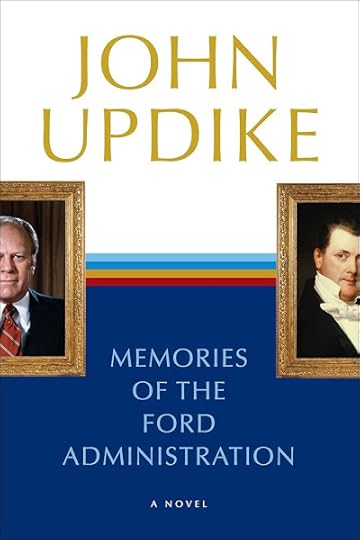 John Updike: Memories of the Ford Administration (1992)
John Updike: Memories of the Ford Administration (1992)Alf Clayton, a struggling history professor at Wayward Junior College in New Hampshire, receives a request ... to provide his memories and impressions of the Presidential administration of Gerald Ford. Clayton has spent several years unsuccessfully attempting to write a new biography of President James Buchanan and the two projects intertwine as Clayton's mind shifts between them ... - Wikipedia: Memories of the Ford Administration
I have to begin by admitting that I didn't know Professor Paul Edwards (1926-1992) particularly well. He was one of the Academics in the Edinburgh English Department when I first arrived there in 1986. Judging from those dates above, He must have been 60 at the time, and I have to say that he looked it. I haven't been able to locate a photo of him online, so you'll have to envisage a rather red-faced, overweight, Rabelaisian figure, holding court in his large office upstairs in the David Hume Tower, which housed all of us Hamanities misfits.
So why am I writing about him?
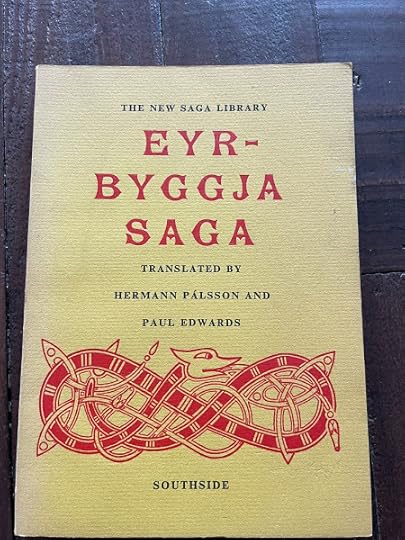 Eyrbyggja Saga. Trans. Hermann Pálsson & Paul Edwards (1973)
Eyrbyggja Saga. Trans. Hermann Pálsson & Paul Edwards (1973)One reason is because I knew his name pretty well long before I ever got there - though the picture of him in my mind's eye was nothing like the reality. You see, I'd already developed into a bit of an Icelandic Saga-ophile (if there is such a term) over my undergraduate years, partly as a result of having studied Old Norse for a year under the learned tutelage of Professor Forrest Scott of Auckland University.
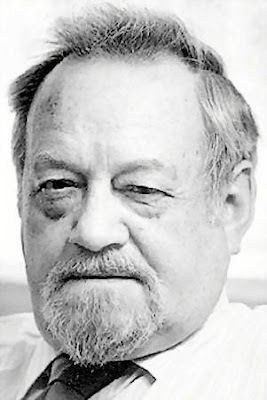 Hermann Pálsson (1921-2002)
Hermann Pálsson (1921-2002)Here's a list of the translations and books Edwards and his collaborator, Icelandic scholar Hermann Pálsson, composed on the subject, starting with Gautrek's Saga in 1968, and concluding with Vikings in Russia in 1989:
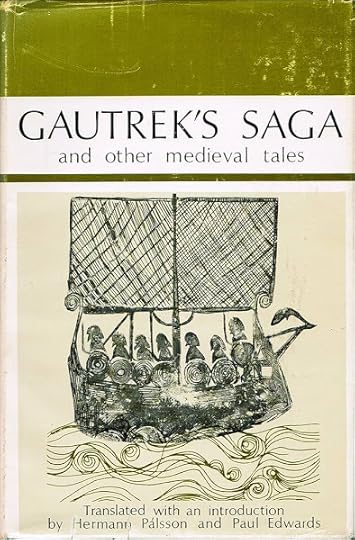 Paul Edwards & Hermann Pálsson, trans. Gautrek's Saga (1968)
Paul Edwards & Hermann Pálsson, trans. Gautrek's Saga (1968)[with Hermann Pálsson] Gautrek's Saga, and Other Medieval Tales (1968)[with Hermann Pálsson] Arrow-Odd: A Medieval Novel (1970)[with Hermann Pálsson] Legendary Fiction in Medieval Iceland (1970)[with Hermann Pálsson] Hrolf Gautreksson: A Viking romance (1972)[with Hermann Pálsson] The Book of Settlements; Landnámabók (1972)[with Hermann Pálsson] Eyrbyggja Saga (1973)[with Hermann Pálsson] Egil's Saga by Snorri Sturluson (1976)[with Hermann Pálsson] Orkneyinga Saga: The History of the Earls of Orkney (1978)[with Hermann Pálsson] Göngu-Hrólfs Saga (1980)[with Hermann Pálsson] Seven Viking Romances (1985)[with Hermann Pálsson] Knytlinga Saga: The History of the Kings of Denmark (1986)[with Hermann Pálsson] Magnus' Saga: The Life of St Magnus, Earl of Orkney, 1075–1116 (1987)[with Hermann Pálsson] Vikings in Russia: Yngvar's saga and Eymund's saga (1989)
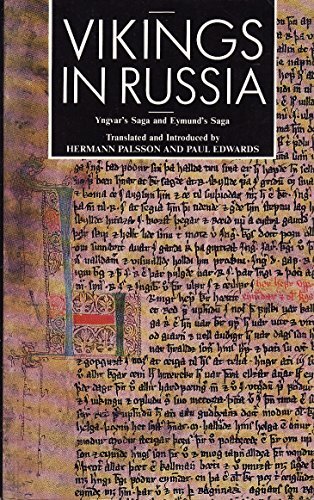 Vikings in Russia: Yngvar's Saga & Eymund's Saga. Trans. Hermann Pálsson & Paul Edwards (1989)
Vikings in Russia: Yngvar's Saga & Eymund's Saga. Trans. Hermann Pálsson & Paul Edwards (1989)I managed to meet Hermann Pálsson, too, shortly after I first got to Edinburgh. We'd concentrated on one of the shorter sagas, Hrafnkel's Saga , in my year of Old Norse at the University of Auckland, and Pálsson had written a critical monograph about it - as well as translating it for the Penguin Classics (along with some shorter works, including the thoroughly charming story of "Auðun from the West Fjords," whose best friend was a Polar Bear ...)
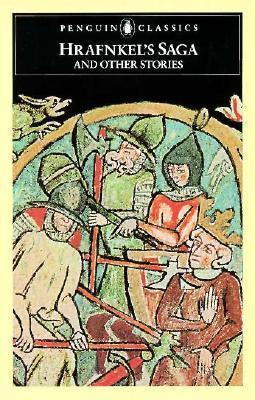 Hrafnkel's Saga and Other Icelandic Stories. Trans. Hermann Pálsson (1971)
Hrafnkel's Saga and Other Icelandic Stories. Trans. Hermann Pálsson (1971)I believe it was Mark Twain who put it best:
There are three infallible ways of pleasing an author, and the three form a rising scale of compliment:to tell him you have read one of his books;to tell him you have read all of his books;to ask him to let you read the manuscript of his forthcoming book.No. 1 admits you to his respect; No. 2 admits you to his admiration; No. 3 carries you clear into his heart.I can't claim to have gone much beyond first base on that list with Pálsson, but he certainly seemed impressed that I'd read his 1966 monograph Siðfræði Hrafnkels sögu (1966 - published in English as Art and Ethics in Hrafnkel's Saga in 1971).
The classic account of that saga is to be found in Sigurður Nordal's 1949 book Hrafnkels Saga Freysgoða: A Study (translated into English in 1958). Nordal's exhaustive analysis of the local names and kinship systems in the region where the saga is set demonstrated beyond doubt that it had to be regarded as historical fiction, despite the presence of a few genuine place-names and people.
Nordal's book constituted the final nail in the coffin of the then still-current view that the so-called "Family Sagas" were nothing more than careful records of actual deeds and events in medieval Iceland. That may be true - to some extent - of some of them, but certainly not of this tale of the priest of Frey, Hrafnkel's Saga. Pálsson's 1966 account of the saga builds on Nordal's pioneering work to flesh out the complex connections between pure invention and fact in this early piece of prose fiction.
Anyway, Hermann and I had a nice little chat about it all. He seemed astonished to meet an English student who could actually read in a foreign language, and was interested in the Sagas. That was certainly not the norm among my fellow post-graduates.
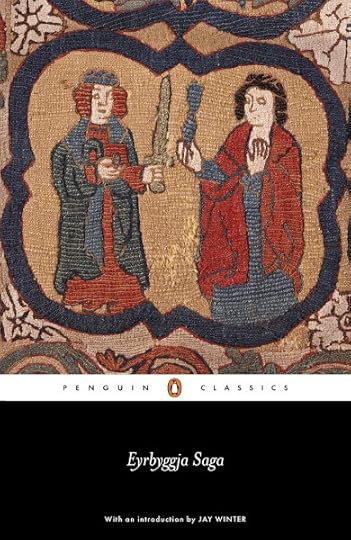 Eyrbyggja Saga. Trans. Hermann Pálsson & Paul Edwards (1973)
Eyrbyggja Saga. Trans. Hermann Pálsson & Paul Edwards (1973)Forrest Scott, my Icelandic teacher in Auckland, was positively obsessed with Eyrbyggja Saga , the rather episodic tale of the People of Eyri (which includes one of the best ghost stories I've ever read). Not content with the original manuscript sources preserved in Iceland, he'd spent a great deal of time in Copenhagen, looking through all the older paper copies of the text preserved in the National Library there.
At the time I was rather surprised that his long-awaited edition of the poem never seemed to get any closer to completion - even after his retirement from the everyday duties of the English Department. Now, having retired myself from teaching at Massey University a couple of years ago, I think I understand him a little better. Books get harder, not easier, to complete as the years go by. The need to update and reformat all the work you've already done becomes more and more of an insuperable obstacle, and instead you decide to scribble a short article (or, for that matter, a blogpost) on some more easily circumscribed subject ...
Edwards and Pálsson's fluent and fast-moving Penguin Classics translation provided us students with a convenient crib to set alongside our own rough versions of episodes from the Eyrbyggja Saga, translated from the drafts of Prof. Scott's projected edition.
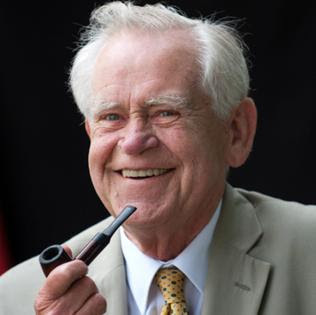 Magnús Sigursteinsson [Magnus Magnusson] (2007)
Magnús Sigursteinsson [Magnus Magnusson] (2007)Penguin Books began their series of translations of the sagas under the aegis of Edinburgh-raised Icelander (and future TV personality) Magnus Magnusson - in collaboration, of course, with the ubiquitous Hermann Pálsson. These included:Njal’s Saga (1973)Njal’s Saga. Trans. Hermann Pálsson & Magnus Magnusson. 1960. Penguin Classics. Harmondsworth: Penguin, 1972. The Vinland Sagas (1965)The Vinland Sagas: The Norse Discovery of America – Grænlendinga Saga & Eirik’s Saga. Trans. Hermann Pálsson & Magnus Magnusson. 1965. Penguin Classics. Harmondsworth: Penguin, 1971. King Harald’s Saga (1966)King Harald’s Saga: Harald Hardradi of Norway – from Snorri Sturluson’s Heimskringla. Trans. Hermann Pálsson & Magnus Magnusson. 1966. Penguin Classics. Harmondsworth: Penguin, 1971. Laxdaela Saga (1969)Laxdaela Saga. Trans. Hermann Pálsson & Magnus Magnusson. 1969. Penguin Classics. Harmondsworth: Penguin, 1976.
Presumably Magnusson got too busy with his BBC broadcasting duties after that, so Hermann Pálsson thought he'd have a go on his own - hence the appearance of Hrafnkel's Saga and Other Icelandic Stories with him as sole translator.
 Snorri Sturluson: Egil's Saga. Trans. Hermann Pálsson & Paul Edwards (1976)
Snorri Sturluson: Egil's Saga. Trans. Hermann Pálsson & Paul Edwards (1976)Pálsson must have concluded that the task of transforming the stark, implication-laden prose of the Sagas into idiomatic English prose was one which required a native-speaking collaborator, though, because a positive stream of sagas issued from the team of Pálsson & Edwards from 1972 onwards, many (not all) of them reprinted as Penguin Classics.
 Gongu-Hrolfs Saga. Trans. Hermann Pálsson & Paul Edwards (1980)
Gongu-Hrolfs Saga. Trans. Hermann Pálsson & Paul Edwards (1980)Paul Edwards had studied Icelandic in his youth, and his genial, informal approach to the subject - I remember him remarking to me once that he'd just completed an article on "spewing in Old Norse sagas" - definitely brought a breath of fresh air to the Penguin series.
I mentioned above his "holding court in his large office." You'll have to try and imagine a battered old wooden table, with him at the head, a set of glasses and a flask of (dreadful) red wine at his elbow, serving out drinks to all and sundry. There were loud guests and silent ones. I was one of the latter. But he was infinitely kind to me - even before I gradually revealed my respect for him and his work, and my love of the Sagas themselves.
More to the point, he offered me (and others) invaluable, non-pompous advice about how to navigate the strange cross-currents of Academic life, and particularly the crises of faith which tend to beset those working on large postgraduate dissertations.
I guess it was all so welcome because he did so strongly resemble Sir John Falstaff - with all of us cast as his tavern companions. A Falstaff without any of the malice and mendacity, though: just the ready with and the endless desire for fun and good company. I wish I could go back and listen to him discourse just one more time.
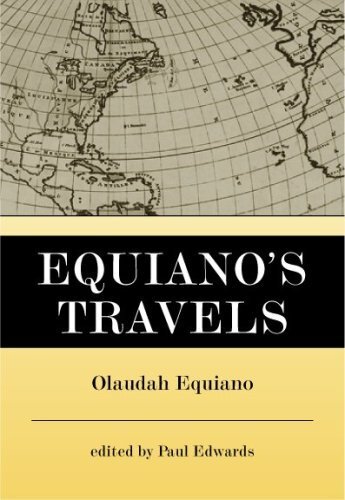 Paul Edwards, ed. Equiano's Travels (1967)
Paul Edwards, ed. Equiano's Travels (1967)The truth of the matter is, however, that those of you who've already heard of "Professor Paul Edwards" will probably be wondering why I'm concentrating so much on the Icelandic Sagas. His main claim to fame is undoubtedly the book above. It's just the tip of the iceberg of his work on African literature, mind you. He was, in fact, the go-to guy for such matters for most UK universities at the time. Wikipedia, as usual, provides us with a few useful facts and dates to get us started:
After completing his education he worked in West Africa for nine years, teaching literature in Ghana and Sierra Leone. The demand of his African students for African literature propelled his encounter with Equiano.
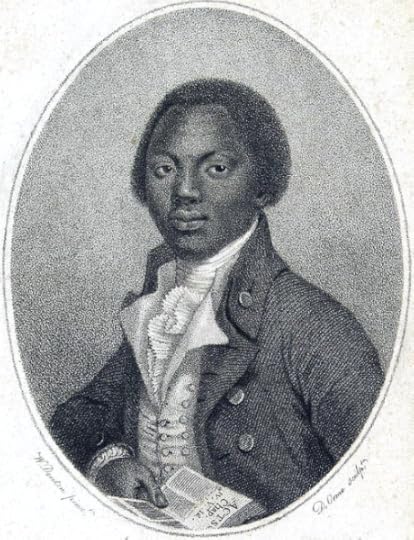 Daniel Orme; Olaudah Equiano (1745-1797)
Daniel Orme; Olaudah Equiano (1745-1797)Encouraged by Chinua Achebe, and helped by the historian of Sierra Leone Christopher Fyfe, in 1967 Edwards published an abridged edition of Equiano's autobiographical Narrative in Heinemann's African Writers Series, under the title Equiano's Travels. He subsequently published a facsimile version of the Narrative, and another edited version under the title The Life of Olaudah Equiano.He was, in fact, at the time that I met him, Professor of English and African Literature at Edinburgh. I guess if you're shocked at my description of him serving out red wine to students in his office on a regular basis you'll have to take my word for it that we did things differently then.
It was quite a shock to me when I got back to New Zealand to readjust to our rather puritan ways. In Edinburgh, all business and all social gatherings were conducted in the pub. Professors seldom stood their rounds, admittedly, but they were happy enough to have drinks bought for them by indigent students trying to curry favour.
It may not be anything to skite about, but you couldn't walk for more than a few yards down any street in Edinburgh without running into a bar. The city was awash with booze. I remember my first impression of it as I approached my hall of residence in a taxi was seeing a drunk throwing up in a gutter. "Auld Reekie" certainly lived up to its name.
Certainly my friends and I always gathered in pubs. You could sit in the corner for hours debating the meaning of existence, and you could even get a snack there if you were sick of the Student Union pizzas. Halcyon days.
It is a bit vexing that I can't locate a picture of Paul Edwards. I suppose that his legacy is really two-fold. On the one hand, there's the beautiful edition of the Sagas published by the Folio Society around the turn of the millennium, which includes a few of his translations alongside all the ones by Pálsson and Magnusson:
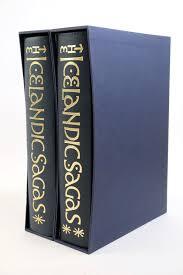 Magnus Magnusson: The Icelandic Sagas (2000 & 2002)
Magnus Magnusson: The Icelandic Sagas (2000 & 2002)Magnusson, Magnus, ed. The Icelandic Sagas. Vol. 1 of 2. Illustrated by Simon Noyes. 1999. London: The Folio Society, 2000.Au∂un’s Saga, trans. Hermann Pálsson (1971)Grænlendiga Saga, trans. Magnus Magnusson & Hermann Pálsson (1965)Eirík’s Saga, trans. Magnus Magnusson & Hermann Pálsson (1965)The Tale of Thorstein Stangarhögg (Staff-Struck), trans. Hermann Pálsson (1971)Egil’s Saga, trans. Hermann Pálsson & Paul Edwards (1976)Hrafnkel’s Saga, trans. Hermann Pálsson (1971)Eyrbyggja Saga, trans. Hermann Pálsson & Paul Edwards (1972)Vopnfir∂inga Saga, trans. Magnus Magnusson (1999)Bandamanna Saga, trans. Hermann Pálsson (1975)Gunnlaug’s Saga, trans. Magnus Magnusson (1999)The Tale of Thi∂randi and Thórhall, trans. Magnus Magnusson (1999)Njál’s Saga, trans. Magnus Magnusson & Hermann Pálsson (1960)
Magnusson, Magnus, ed. The Icelandic Sagas. Vol. 2 of 2. Illustrated by John Vernon Lord. London: The Folio Society, 2002.Ívarr’s Tale, trans. Magnus Magnusson (1999)Gísli’s Saga, trans. Magnus Magnusson & Hermann Pálsson (1999)Ölkofri’s Tale, trans. Magnus Magnusson (1999)Laxdæla Saga, trans. Magnus Magnusson & Hermann Pálsson (1969)Gunnarr Thi∂randabani’s Tale, trans. Alan Boucher (1981)Fóstbrœ∂ra Saga, trans. Magnus Magnusson & Hermann Pálsson (1999)Hrei∂arr’s Tale, trans. Magnus Magnusson (1999)Vatnsdæla Saga, trans. Magnus Magnusson (1999)Hænsa-Thórir’s Saga, trans. Hermann Pálsson (1975)Grettir’s Saga, trans. Denton Fox & Hermann Pálsson (1974)
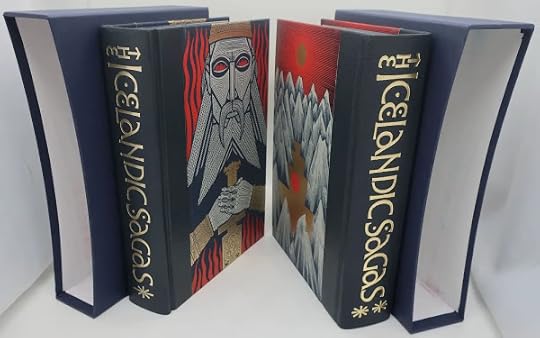 The Icelandic Sagas. Illustrated by Simon Noyes & John Vernon Lord (2000 & 2002)
The Icelandic Sagas. Illustrated by Simon Noyes & John Vernon Lord (2000 & 2002)On the other hand there's the memorial volume Romanticism and Wild Places: Essays In Memory of Paul Edwards , ed. Paul Hullah (Edinburgh: Quadriga, 1998). I can't find an image of that online, either. Perhaps, instead, I can conclude with a (partial) list of his own works. They at least are, I'm positive, going to live on.
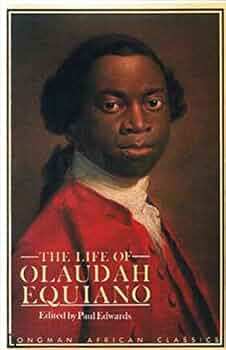 Paul Edwards, ed.: Interesting Narrative of the Life of Olaudah Equiano (1989)
Paul Edwards, ed.: Interesting Narrative of the Life of Olaudah Equiano (1989)•
 (2020)
(2020)Paul Geoffrey Edwards
(1926-1992)
Books I own are marked in bold:Books:
[with Hermann Pálsson) Legendary Fiction in Medieval Iceland (1970)[with James Walvin] Black Personalities in the Era of the Slave Trade (1983)
Essays:
"Black writers of the 18th and 19th centuries." In The Black Presence in English Literature. Ed. David Dabydeen (1985): 50–67."Three West African Writers of the 1780s." In The Slave's Narrative. Ed. Charles T. Davis and Henry Louis Gates (1985)
Edited:
West African Narrative: An Anthology for Schools (1963)Modern African Narrative: An Anthology (1966)Through African Eyes (1966)Equiano's Travels: The Interesting Narrative of the Life of Olaudah Equiano or Gustavus Vassa, the African by Olaudah Equiano. African Writers Series 10 (1967)Equiano’s Travels: His Autobiography. The Interesting Narrative of the Life of Olaudah Equiano or Gustavus Vassa the African. 1789. Ed. Paul Edwards. 1967. London: Heinemann, 1982. A Ballad Book for Africa (1968)Life of Olaudah Equiano, or Gustavus Vassa the African. African Classics (1990)[with David Dabydeen) Black Writers in Britain: 1760–1830 (1991)[with Polly Rewt) The letters of Ignatius Sancho by Ignatius Sancho (1994)
Translated:
[with Hermann Pálsson] Gautrek's Saga, and Other Medieval Tales (1968)[with Hermann Pálsson] Arrow-Odd: A Medieval Novel (1970)[with Hermann Pálsson] Legendary Fiction in Medieval Iceland (1970)[with Hermann Pálsson] Hrolf Gautreksson: A Viking romance (1972)Hrolf Gautrekkson: A Viking Romance. Trans. Hermann Pálsson & Paul Edwards. New Saga Library 1. Edinburgh: Southgate, 1972. [with Hermann Pálsson] The Book of Settlements; Landnámabók (1972)[with Hermann Pálsson] Eyrbyggja Saga (1973)Eyrbyggja Saga. Trans. Hermann Pálsson & Paul Edwards. New Saga Library 2. Edinburgh: Southgate, 1973. [with Hermann Pálsson] Egil's Saga by Snorri Sturluson (1976)Egil’s Saga. Trans. Hermann Pálsson & Paul Edwards. Penguin Classics. Harmondsworth: Penguin, 1976. [with Hermann Pálsson] Orkneyinga Saga: The History of the Earls of Orkney (1978)Orkneyinga Saga: The History of the Earls of Orkney. Trans. Hermann Pálsson & Paul Edwards. 1978. Penguin Classics. Harmondsworth: Penguin, 1982. [with Hermann Pálsson] Göngu-Hrólfs Saga (1980)[with Hermann Pálsson] Seven Viking Romances (1985)Seven Viking Romances. Trans. Hermann Pálsson & Paul Edwards. Penguin Classics. Harmondsworth: Penguin, 1985. [with Hermann Pálsson] Knytlinga Saga: The History of the Kings of Denmark (1986)[with Hermann Pálsson] Magnus' Saga: The Life of St Magnus, Earl of Orkney, 1075–1116 (1987)[with Hermann Pálsson] Vikings in Russia: Yngvar's saga and Eymund's saga (1989)[with Hermann Pálsson] "Egil’s Saga" (1976) & "Eyrbyggja Saga" (1972). In The Icelandic Sagas. Vol. 1 of 2. Ed. Magnus Magnusson. Illustrated by Simon Noyes. 1999. London: The Folio Society, 2000. 67-246 & 275-384.
 Vidar Hreinsson: The Complete Sagas of Icelanders (1997)
Vidar Hreinsson: The Complete Sagas of Icelanders (1997)Further Reading on the Sagas:
Blake, N. F. ed. The Saga of the Jomsvikings: Jómsvíkinga Saga. Nelson’s Icelandic texts, ed. Sigurður Nordal & G. Turville-Petre. London: Nelson, 1962.Dasent, George. M., trans. The Saga of Burnt Njal: From the Icelandic of Njal’s Saga. Everyman’s Library. London & New York: J. M. Dent & E. P. Dutton, n.d.Hight, George Ainslie., trans. The Saga of Grettir the Strong: A Story of the Eleventh Century. Everyman’s Library 699. 1914. London & New York: J. M. Dent & E. P. Dutton, 1929.Hreinsson, Viðar, ed. The Complete Sagas of Icelanders (including 49 Stories). General Editor: Viðar Hreinsson, Editorial Team: Robert Cook, Terry Gunnell, Keneva Kunz & Bernard Scudder. Introduction by Robert Kellogg. 5 vols. Iceland: Leifur Eiriksson Publishing Ltd., 1997.Vinland / Warriors and PoetsForewordBy the President of IcelandBy the Icelandic Minister of Education, Culture and ScienceBy the Former Director of the Manuscript Institute of IcelandPrefaceCreditsPublisher's AcknowledgmentsIntroductionVinland and GreenlandEirik the Red's SagaThe Saga of the GreenlandersWarriors and PoetsEgil's SagaKormak's SagaThe Saga of Hallfred the Troublesome PoetThe Saga of Bjorn, Champion of the Hitardal PeopleThe Saga of Gunnlaug Serpent-TongueTales of PoetsThe Tale of Arnor, the Poet of EarlsEinar Skulason's TaleThe Tale of Mani the PoetThe Tale of Ottar the BlackThe Tale of Sarcastic HalliStuf's TaleThe Tale of Thorarin Short-CloakThe Tale of Thorleif, the Earl's PoetAnecdotesThe Tale of Audun from the West FjordsThe Tale of Brand the GenerousHreidar's TaleThe Tale of the Story-Wise IcelanderIvar Ingimundarson's TaleThorarin Nefjolfsson's TaleThe Tale of Thorstein from the East FjordsThe Tale of Thorstein the CuriousThe Tale of Thorstein ShiverThe Tale of Thorvard Crow's-Beak
Outlaws / Warriors and PoetsOutlaws and Nature SpiritsGisli Sursson's SagaThe Saga of Grettir the StrongThe Saga of Hord and the People of HolmBard's SagaWarriors and PoetsKiller-Glum's SagaThe Tale of Ogmund BashThe Tale of Thorvald TasaldiThe Saga of the Sworn BrothersThormod's TaleThe Tale of Thorarin the OverbearingViglund's SagaTales of the SupernaturalThe Tale of the Cairn-DwellerThe Tale of the Mountain-DwellerStar-Oddi's DreamThe Tale of Thidrandi and ThorhallThe Tale of Thorhall Knapp
Epic / Champions and RoguesAn EpicNjal's SagaChampions and RoguesThe Saga of Finnbogi the MightyThe Saga of the People of FloiThe Saga of the People of KjalarnesJokul Buason's TaleGold-Thorir's SagaThe Saga of Thord MenaceThe Saga of Ref the SlyThe Saga of Gunnar, the Fool of KeldugnupTales of Champions and AdventuresGisl Illugason's TaleThe Tale of Gold-Asa's ThordHrafn Gudrunarson's TaleOrm Storolfsson's TaleThorgrim Hallason's Tale
Regional FeudsRegional FeudsThe Saga of the People of VatnsdalThe Saga of the Slayings on the HeathValla-Ljot's SagaThe Saga of the People of SvarfadardalThe Saga of the People of LjosavatnThe Saga of the People of Reykjadal and of Killer-SkutaThe Saga of Thorstein the WhiteThe Saga of the People of VopnafjordThe Tale of Thorstein Staff-StruckThe Tale of Thorstein Bull's LegThe Saga of Droplaug's SonsThe Saga of the People of FljotsdalThe Tale of Gunnar, the Slayer of ThidrandiBrandkrossi's TaleThorstein Sidu-Hallsson's SagaThorstein Sidu-Hallsson's TaleThorstein Sidu-Hallsson's DreamEgil Sidu-Hallsson's Tale
Epic / Wealth and PowerAn EpicThe Saga of the People of LaxardalBolli Bollason's TaleWealth and PowerThe Saga of the People of EyriThe Tale of Halldor Snorrason IThe Tale of Halldor Snorrason IIOlkofri's SagaHen-Thorir's SagaThe Saga of Hrafnkel Frey's GodiThe Saga of the ConfederatesOdd Ofeigsson's TaleThe Saga of Havard of IsafjordReligion and Conflict in Iceland and GreenlandThe Tale of Hromund the LameThe Tale of Svadi and Arnor Crone's-NoseThe Tale of Thorvald the Far-TravelledThe Tale of Thorsein Tent-PitcherThe Tale of the GreenlandersReference SectionMaps and TablesIllustrations and DiagramsGlossaryCross-Reference Index of CharactersContents of Volumes I-V Johnston, George, trans. The Saga of Gisli. Ed. Peter Foote. 1963. Everyman’s Library. London: Dent, 1984.Jones, Gwyn, trans. Eirik the Red and other Icelandic Sagas. The World’s Classics. Oxford: Oxford University Pres, 1980.Turville-Petre, G. Origins of Icelandic Literature. 1953. Oxford: Clarendon Press, 1967.
•
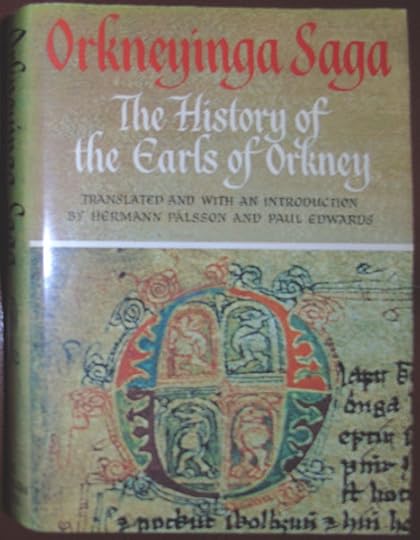 Orkneyinga Saga: The History of the Earls of Orkney. Trans. Hermann Pálsson & Paul Edwards (1978)
Orkneyinga Saga: The History of the Earls of Orkney. Trans. Hermann Pálsson & Paul Edwards (1978)•
Published on October 05, 2025 15:21
September 12, 2025
Sin City Tow
 Sin City Tow (2024)
Sin City Tow (2024)If you roll the dice and park your car illegally in Sin City, odds are you're going to lose that bet.
That's the motto for the new US Reality TV series Sin City Tow, set in Las Vegas, and starring a variety of tow-truck drivers, gamblers, and other eccentrics of every stripe.
"What happens in Vegas stays in Vegas - sometimes that means your car," quips the owner of one of the two competing businesses, Ashley's Towing, at the heart of the story - such as it is.
This is the latest reality show to audition for a place in my affections since the unfortunate demise of Ice Road Truckers (11 series: 2007-17) after the tragic death of series regular Darrell Ward. I followed that one up with the Canadian show Heavy Rescue: 401 (7 series: 2016-23) which plumbed not dissimilar territory: the adventures - and misadventures - of hardworking truckers in North America's frozen wastes.
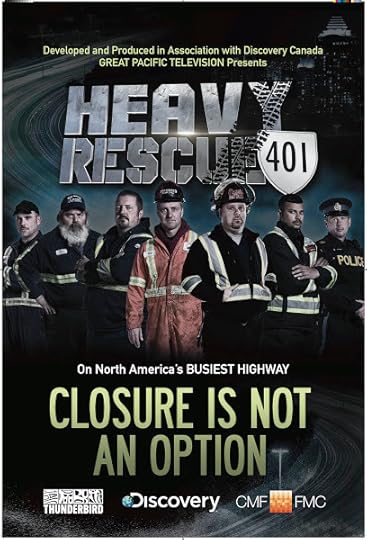 Heavy Rescue: 401 (2016-23)
Heavy Rescue: 401 (2016-23)Alas, much though I'm enjoying Sin City Tow, I'm not sure that it will ever reach a second series, given the largely negative commentary it's been getting online - mainly from disgruntled car-owners who've had their vehicles towed, I suspect. Still, 85% of viewers are listed as having "enjoyed" it on Google, so there's some hope left.
I guess what I like most about it is what various of the other commentators dislike: the melodramatic heightening of fairly trivial events, and the narrative shaping that all this raw footage has undergone. The drivers themselves are not really a particularly likeable crew, but then, a dose of that good old Repo Man spirit is no doubt a sine qua non in their profession:
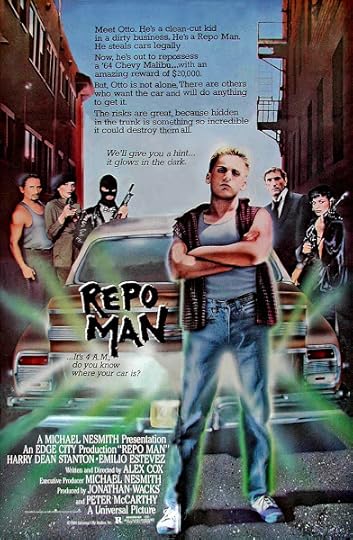 Repo Man (1984)
Repo Man (1984)"See, an ordinary person spends his life avoiding tense situations. A repo man spends his life getting into tense situations."
Let's look at a few of those IMDb User Reviews, then:
... With reality TV shows, there is always the question of possible staging. I must say I do not believe Sin City Tow is guilty of this.The contention that the towing companies might simply be out to make a profit rather than nobly crusading to clean up the unruly streets of Las Vegas is a disturbing one. Next they'll be claiming that the casinos don't stay open simply to redistribute wealth to the starving masses, but rather to pile up profits for their corporate owners!
The reason being in the considered opinion of a person who has watched many and varied such series (me) is the following. The people in the confrontations are usually blanked out, their faces that is. With staged scenes, the "actors" are in on it, being paid for their performances, ergo no blanking out. So this is why I believe things are on the up and up.
... There is something to give pause. Are the towing companies seizing vehicles for the sake of making a buck rather than keeping parking in Vegas orderly and under control? Sometimes this does seem that this might be the case ...
The point about the blanked-out faces is interesting. Given we see so many cameramen hovering around randomly in most of the scenes, I must confess it hadn''t occurred to me that anyone might have gone to the trouble of staging it that way. Hand-held camera blurring and shakiness is one thing, but surely any kind of fakery would come out looking a bit more polished?
The next commentator clearly doesn't agree, though (given the title of their review):
That last paragraph sounds like a real cri-de-coeur to me. I fear that this writer has had the experience of recommending such a show to friends, only to hear them chortling behind his back. I feel his pain. I've heard more than a few such snorting noises myself from people who refuse to believe that a self-styled "uppity intellectual" such as I could actually be serious about my passion for Ice Road Truckers (and its ilk).
Dime a dozen fake reality TV show.
Have a friend that is a tow operator, so I caught some episodes of this while at their place.
Immediately obvious that this is another one of those "reality" shows which grew in popularity in the early-mid 2000's. And by reality I mean a show in which they stage a bunch of unbelievable scenarios for the tow truck drivers and employees, most of which consist of the drivers and agitators taking turns on upping each other's poor acting skills.
Other than the poor acting, there are also endless laughable confrontations and "Only in Vegas!" moments throughout. How laughable you ask? On their Halloween themed episode a driver stumbles upon an allegedly real Satanic ritual site, with a dead pig strung up and mutilated.
I won't claim there's 0 entertainment to be found in shows like this, but please do yourself a favor and don't recommend them to friends, unless you want them snickering behind your back because you believe that they're real.
 Lisa Kelly (2011)
Lisa Kelly (2011)In fact, when we were playing one of those silly "who-would-you-most-like-to-have-lunch-with" games, it took me quite a while to explain why Ice Road trucker Lisa Kelly would be my ideal choice. There'd be so much to talk about!
 Shawn (2024)
Shawn (2024)Please don't give these scammers any recognition. I can't speak for the practices of all the tow truck companies, but Ashley's Towing, run by Shawn Davis, is wreaking havoc on the local residents of Las Vegas. It might be entertaining when it's a drunk guy on the strip, but when they illegally tow private home owners' and apartment renters' vehicles from right in front of their homes, it's not funny at all. No one calls these in, the tow trucks prowl the subdivisions and complexes at night for easy prey. They then extort these innocent victims for hundreds of dollars to release their vehicles from the private impound lots. After contacting the police and attorneys, it becomes evident that the scam Ashley's Towing is running is minor enough to fly under the radar of both our criminal and civil justice systems. Even though if you add up all the victims and hundreds of dollars, it's grounds for a class action lawsuit.I got my car towed once. I had a date in the centre of town with the lady who would eventually become my wife, and I couldn't find a park anywhere. I eventually took a chance on some reserved spaces outside an apartment complex, hoping that I'd get back before the tenants did. Alas, I miscalculated. Much of the rest of the night was spent ringing the police, then a taxi, then paying an exorbitant fee at a tow yard. I gambled and lost, and was appropriately punished.
Before you support this nonsensical show, think about the honest people who rely on their cars either for work or to get to work, walking out their front door to realize their vehicle is gone. Then imagine them realizing they might lose their job if they don't have their vehicle. Or imagine the folks who can't afford to pay the several-hundred-dollar impound fee but need their vehicle to support their family.
If you live in an apartment anywhere - not just Las Vegas - and fail to pay the prescribed fee for your parking, or to display the parking permit correctly, you'll probably get towed. It's hard to see this as grounds for a "class action lawsuit", as the commentator above threatens. Good luck with that, is all I can say.
•
All the world’s a stageAnd all the men and women merely players;They have their exits and their entrances;And one man in his time plays many parts- Shakespeare, As You Like It, II: vii.
Here are a few of the principal actors in the comedy:
 Jeremy
JeremyI'd have to concede that there is something a little disconcerting about the glee with which drivers such as Jeremy (above) pounce on their victims. But then, he did spend most of his formative years pouring concrete for a living, so I imagine he feels that this new lifestyle of his is something of a rest cure. He's unabashedly out for the cash.
 "Pineapple"
"Pineapple"The rather unfortunately nicknamed "Pineapple", from American Samoa, is more of a dispassionate technician. He tows away big rigs which have outstayed their welcome at truck stops, which requires a great deal of skill and expertise. He's not interested in confrontation, but - given he towers above most of the drivers who take him on - he won't back away from it either.
NB: It was he who, in their Halloween themed episode "stumbled upon an allegedly real Satanic ritual site, with a dead pig strung up and mutilated" in the back of a truck, as one of the commentators above mentioned. I'd like to think it was staged by the producers for a gag, but given the things they find in some of the other cars they tow, it's hard to be sure.
 Elmer
ElmerElmer, by contrast, is rather more of a tragic figure. Things never quite go his way. He finds a rich crop of cars, and then is forced to abandon them by an order from home base. He's deputed to shepherd through cars at the weekly auction of abandoned vehicles - an unpaid gig - instead of being out on the streets collecting towing fees. The cars he does tow end up getting damaged, or have to be left behind for one reason or another. He attracts bad luck, despite all his desperate efforts to get ahead.
And yes, there's more than a hint of the commedia dell'arte about the exaggerated clashes of temperament and style in these various knights of the road - and when you throw in the excessive and disproportionate rage displayed by some of the punters coming to the yard to pick up their cars, you begin to verge on Jacobean Revenge Tragedy. "You have to get off sometime," as one woman mouths to the receptionist asking to see the ID and registration she's failed to bring with her. "I'll be waiting."
One thing all of them have in common is a terror of the cops. The mere threat of calling the police is enough to make the most belligerent hoodlum back off from threatening the driver who's just impounded their car. I gather that there's a policy in the US that every call-out of this kind must conclude with an arrest - it's just a question of who ends up in handcuffs. And then there's the added fillip of possibly getting shot if you show any signs of reaching for a weapon (or even looking as if that might be on your mind).
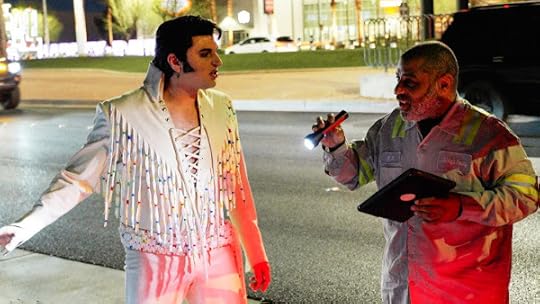 Elvis gets towed
Elvis gets towedThe obvious reading of this programme, then, is as a barometer of American life at its most grotesque and self-parodic. And certainly, in times such as these, it's hard to avoid the feeling that things have deteriorated considerably since Hunter S. Thompson made his own journey to the heart of darkness of the American Dream in Fear and Loathing in Las Vegas (1972).
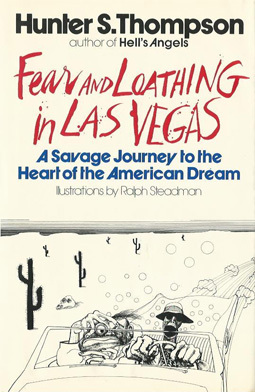 Ralph Steadman: Cover of Fear and Loathing in Las Vegas (1972)
Ralph Steadman: Cover of Fear and Loathing in Las Vegas (1972)
"He who makes a beast of himself gets rid ot the pain of being a man."- Dr. Johnson
Thompson's existential despair has been replaced by a more banal wasteland of parking lots and cheap housing units: the darkness on the edge of town (in Springsteen's phrase) has been traded in for six-lane highways petering out in arid nowhere. These towies seem, at times, as futile and hapless as Wall-E robots, trying vainly to clean up an endlessly spreading (and self-renewing) stain on the landscape.
Can we - as a species - survive much more of this? I guess that remains to be seen. After all, as Ian Wedde put it in his great ecological anthem "Pathway to the Sea":
... we know, don’t we, citizen, that there’s nowhere to defect to, & thatliving in the universe doesn’t leave youany place to chuck stuff off of.
•
 The owners of the Tow Truck Company preparing a car for auction
The owners of the Tow Truck Company preparing a car for auction•
Published on September 12, 2025 12:18
September 7, 2025
The Ghost in Hamlet
 William Blake: Hamlet and his Father's Ghost (1806)
William Blake: Hamlet and his Father's Ghost (1806)I remember that when we marked exams in the Auckland University English Department, we tutors were always instructed not to leave any comments - especially nasty ones - on the papers. Instead, we circulated a few stapled sheets for any thoughts we had beyond the bare grade.
The reason for this (I was told) was because there'd been a big fuss a few years before when a student made a formal request to see their script and found it covered with sarcastic marginalia.
Human nature being what it is, these comment-bundles tended to become the academic equivalent of a gag reel. They were carefully collected and burned at the end of each examination season.
Among the quotable quotes one of my colleagues recorded from our Stage 1 Shakespeare exam one year was the following remark about Hamlet: "The question is: is it a Protestant ghost or a Catholic ghost?"
He apparently thought it very risible to have to ascertain the spectre's doctrinal preferences before you decided whether or not you should pay any attention to its advice. It did sound rather funny - as stated - but I suspected at once that this phrase must have come from one of my tutorial students. It was I who had been stressing the differing views on the afterlife held by various Christian sects.
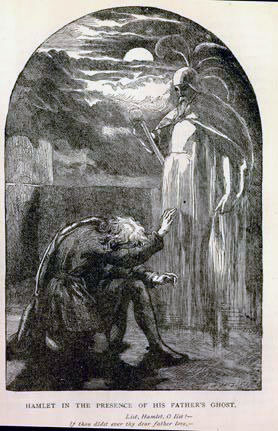 John Gilbert: Hamlet in the Presence of His Father's Ghost (1858-60)
John Gilbert: Hamlet in the Presence of His Father's Ghost (1858-60)Put simply, is Hamlet's deceased father now located in Purgatory, or in Hell? If the former, his intentions must presumably be good; if the latter, the question is far more equivocal.
When the ghost speaks of the "sulf’rous and tormenting flames" to which he is condemned by day, that sounds very much like hellfire.
However, the rest of his statement would imply otherwise:
I am thy father’s spirit,
Doomed for a certain term to walk the night
And for the day confined to fast in fires
Till the foul crimes done in my days of nature
Are burnt and purged away.
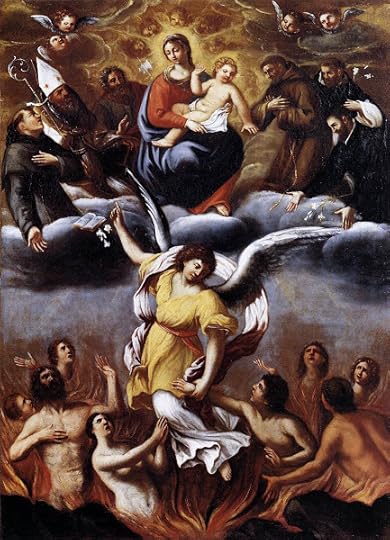 Ludovico Carracci: Purgatory (1610)
Ludovico Carracci: Purgatory (1610)It's hard to read that line about his "foul crimes" being "burnt and purged away" as anything other than a reference to Purgatory. That is, after all, the place where such cleansing occurs. And Purgatory:
is a belief in Catholic theology. It is a passing intermediate state after physical death for purifying or purging a soul. A common analogy is dross being removed from gold in a furnace.But how old is this doctrine? The idea of praying for the dead appears to have been part of Judeo-Christian practice for a very long time indeed. However:
At the Second Council of Lyon in 1274, when the Catholic Church defined, for the first time, its teaching on purgatory, the Eastern Orthodox Church did not adopt the doctrine. The council made no mention of purgatory as a third place or as containing fire ...Subsequent papal pronouncements have clarified that "the term does not indicate a place, but a condition of existence."
As for the various Protestant churches, opinions vary according to denomination:
The Church of England, mother church of the Anglican Communion, officially denounces what it calls "the Romish Doctrine concerning Purgatory", but the Eastern Orthodox Church, Oriental Orthodox Churches, and elements of the Anglican, Lutheran, and Methodist traditions hold that for some there is cleansing after death and pray for the dead, knowing it to be efficacious. The Reformed Churches teach that the departed are delivered from their sins through the process of glorification.In other words, you pays your money and you makes your choice.
 The Harrowing of Hell (1503)
The Harrowing of Hell (1503)Returning to Hamlet, though: despite its generally gloomy demeanour, the prince seems convinced by the end of this first encounter that it is "an honest ghost." That was not his initial reaction, though:
Angels and ministers of grace, defend us!There is indeed something very "questionable" about this apparition. It certainly claims to come from Purgatory, but ought we to believe it?
Be thou a spirit of health or goblin damned,
Bring with thee airs from heaven or blasts from hell,
Be thy intents wicked or charitable,
Thou com’st in such a questionable shape
That I will speak to thee.
 William Shakespeare: The Tragicall Historie of Hamlet Prince of Denmarke (1603)
William Shakespeare: The Tragicall Historie of Hamlet Prince of Denmarke (1603)It's thought that Hamlet was written sometime between 1599 and 1601, in the latter years of Queen Elizabeth's reign. It was first published in 1603. The date of composition can be ascertained (to some extent) by some references in the text to the newly-formed company of boy players at Blackfriars theatre, as well as verbal echoes of some of Shakespeare's earlier plays.
This was definitely a time of great political uncertainty. Shakespeare himself only narrowly avoided trouble when his acting company put on a special performance of the play Richard II - which depicts the deposition of a monarch - for the supporters of the Earl of Essex, who mounted an abortive coup against the Queen in early 1601.
It seems a little unlikely, then, that Shakespeare would have been actively promulgating the "Romish Doctrine concerning Purgatory" in such troublous times, even if he was (as some suspect) a secret Catholic.
 Saxo Grammaticus: Gesta Danorum (1514)
Saxo Grammaticus: Gesta Danorum (1514)Denmark has, of course, been staunchly Protestant since the 1520s, when the Reformation first reached Scandinavia. But that doesn't really help us either way, since Shakespeare's knowledge of the country was probably hazy, and since the actual "events" on which the play is based (as reported in the 13th-century "Life of Amleth" by Saxo Grammaticus in his Gesta Danorum, at any rate) took place in the legendary past of the country.
So we're left with that question: Was this ghost more likely to be regarded as a "spirit of health" or as a "goblin damned" by contemporary playgoers?
The question was definitively resolved - in his own judgement, at any rate - by Professor Ken Larsen of Auckland University. Or so he informed us in the first year tutorials I attended as a callow undergraduate.
Larsen told us that he'd read a book on thaumaturgy from the 1590s which gave a series of clear indications whether or not you could trust a spirit to tell you the truth or not (I'm sorry to say that I don't recall its title).
I was argumentative even in those days, and suggested that even if that was so, it didn't necessarily follow that Shakespeare himself was of the same opinion as the author of the self-help guide to necromancy Larsen was citing as evidence.
"What do you mean?" he said.
"I mean that nowadays lots of people write lots of books about spirits and the supernatural, but just because they're contemporary with us doesn't mean that we agree with them, or that we're even aware of their conclusions. Even in a smaller cultural circle, 1590s London, there could be room for a number of views on the subject."
"What do you mean?" he repeated.
"I mean even though this book gives one clear opinion, Shakespeare may have been unaware of it, or even actively disagreed with it."
"I don't know what you're saying. Are you saying that it's a waste of time to try to gauge contemporary opinion on the subject?"
"No, not at all. I'm just saying that this book can be cited as valuable evidence, but it doesn't necessarily prove that that was what Shakespeare had in mind."
"I don't see what else I can do except what I'm doing. I've told you what the book said. You seem to be disputing that. I don't see what else I can say to make it clearer."
It was all rather frightening. The other students were glaring at me. My point seemed to me so obvious that it was hard to believe he couldn't understand it. Naturally he didn't expect any mere freshman to dispute his learned views - "What, I say? My foot my tutor?", as Prospero puts it when Miranda dares to question him similarly in The Tempest. But it was more than that. He didn't seem willing to concede the simple axiom that evidence (however interesting and relevant) isn't ipso facto conclusive proof.
I got a B+ from him on my essay - the only mark below the A's I received in my whole undergraduate career, I think.
But, as you can tell from my - no doubt somewhat biassed - account of our conversation, I still agree with myself. Larsen was a devotee of theological hairsplitting. He was always pointing out arcane doctrinal points in sixteenth and seventeenth century texts (as I discovered a few years later when I benefitted from his instruction on Spenser and other esoterically inclined poets). But he did seem, nevertheless, to lack what Keats called "negative capability": the ability to remain in doubt on a variety of thorny issues.
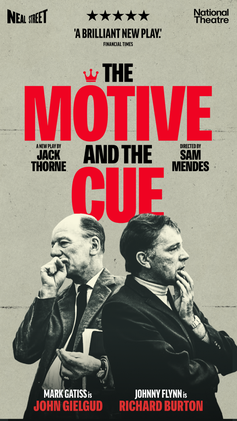 Jack Thorne: The Motive and the Cue (2023)
Jack Thorne: The Motive and the Cue (2023)Recently, watching a cinematically projected version of Jack Thorne's stage-play The Motive and the Cue , which records:
the history behind the 1964 Broadway modern-dress production of William Shakespeare's Hamlet starring Richard Burton in a production directed by Sir John Gielgud.I came across yet another interpretation of Hamlet's father's ghost. Could it be, as Gielgud suggests to his turbulent star, that Hamlet simply didn't like his father? That the real reason for his apparent dilatoriness and indecision throughout the play is because he'd been bullied and belittled by him all his life, and is therefore reluctant - however subliminally - to continue this state of subordination even after the old man's death?
This is, admittedly, meant more as a guide to Burton's brilliantly moody (by all accounts) performance as the melancholy Dane than as a serious theory about the play. But even taken out of context it does help to explain the Oedipal struggle so many have sensed at the root of the drama.
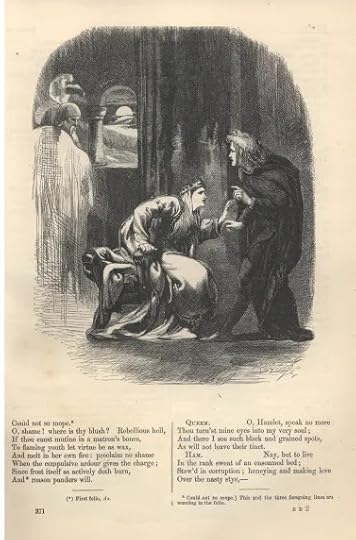 John Gilbert: The Ghost, Gertrude & Hamlet (1867)
John Gilbert: The Ghost, Gertrude & Hamlet (1867)The ghost does, after all, reappear. In Act 3, scene 4, just when Hamlet seems to be making progress in explaining and even justifying his odd behaviour to his mother, Queen Gertrude, the ghost suddenly walks in and starts to chide his son for tardiness in exacting revenge:
Do not forget. This visitationThis is, at that particular moment, distinctly unhelpful advice. Gertrude can neither hear nor see the spirit, and her son's reaction to it persuades her - once and for all - that he's as crazy as a bedbug: "Alas, he’s mad."
Is but to whet thy almost blunted purpose.
But look, amazement on thy mother sits.
O, step between her and her fighting soul.
Conceit in weakest bodies strongest works.
Speak to her, Hamlet.
So, once again, is this simply an act of tactlessness on the part of the impatient ghost - or is it deliberate sabotage? Is he a malign spirit, stirring up trouble for purposes of personal vengeance - or is he a genuine messenger from beyond, sent to purge all that's "rotten" in the state of Denmark.
Does he come from Purgatory, as a blessed (albeit somewhat erring) spirit - or from Hell, as a damned soul? To a strict Protestant, only the second alternative is really theologically possible. A Catholic could more easily entertain the first theory, though further proof would be necessary to confirm it.
An Anglo-Catholic, in the 1590s, could well be in doubt on such a matter. It's important to stress that Anglicanism is not, strictly speaking, a Protestant denomination. It's always existed in a complex and uneasy negotiation between the two extremes of the Reformation and the Counter-Reformation. That's still the case now, and it was certainly the case then.
Hamlet is not generally listed among the Shakespearean Problem Plays. As conceived by critic F. S. Boas in 1896, these are:
However, Boas did adds that Hamlet links Shakespeare's problem-plays to his unambiguous tragedies.
All's Well That Ends Well, Measure for Measure, and Troilus and Cressida. Some critics include other plays that were not enumerated by Boas, most commonly The Winter's Tale, Timon of Athens, and The Merchant of Venice.
The term itself (borrowed from Ibsen) was meant to denote plays "uneasily situated between the comic and the tragic." That's not really the case with Hamlet, which has all the hallmarks of Shakespearean tragedy (a fatally flawed hero, a tragic dilemma, and the curtain coming down on a stage full of corpses). But the play is profoundly problematic, all the same.
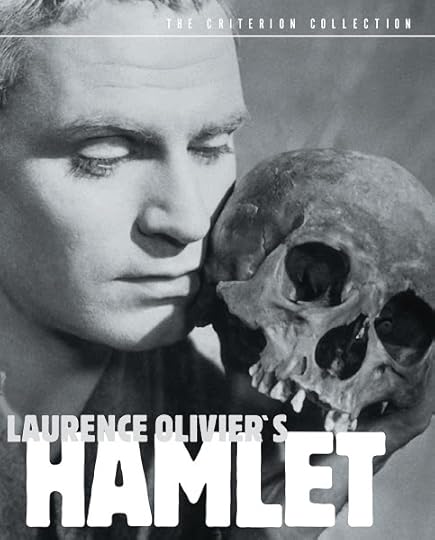 Laurence Olivier, dir.: Hamlet (1948)
Laurence Olivier, dir.: Hamlet (1948)The other great tragedies all exemplify a clear flaw in their protagonists: jealousy in Othello; ambition in Macbeth; pride in King Lear. But what's the moral deficiency in Hamlet? Laurence Olivier's film referred to it as "the tragedy of a man who could not make up his mind."
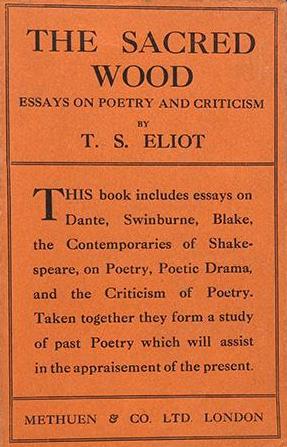 T. S. Eliot: The Sacred Wood (1920)
T. S. Eliot: The Sacred Wood (1920)T. S. Eliot's notorious 1919 essay "Hamlet and His Problems" called the play an "artistic failure" because the character's emotion does not accord with the external machinery of the play. It fails (he claims) to find an adequate "objective correlative" — a set of external objects or situations which could evoke that specific emotion in the audience.
 C. S. Lewis: Hamlet: the Prince or the Poem? (1942)
C. S. Lewis: Hamlet: the Prince or the Poem? (1942)C. S. Lewis, in his riposte "Hamlet: the Prince or the Poem?" creates an amusing thought experiment to explain his own reactions to the play:
Let us suppose that a picture which you have not seen is being talked about. The first thing you gather from the vast majority of the speakers ... is that this picture is undoubtedly a very great work. The next thing you discover is that hardly any two people in the room agree as to what it is a picture of. Most of them find something curious about the pose, and perhaps even the anatomy, of the central figure. One explains it by saying that it is a picture of the raising of Lazarus, and that the painter has cleverly managed to represent the uncertain gait of a body just recovering from the stiffness of death. Another, taking the central figure to be Bacchus returning from the conquest of India, says that it reels because it is drunk. A third, to whom it is self-evident that he has seen a picture of the death of Nelson, asks with some temper whether you expect a man to look quite normal just after he has been mortally wounded. A fourth maintains that such crudely representational canons of criticism will never penetrate so profound a work, and that the peculiarities of the central figure really reflect the content of the painter’s subconsciousness. Hardly have you had time to digest these opinions when you run into another group of critics who denounce as a pseudo-problem what the first group has been discussing. According to this second group there is nothing odd about the central figure. A more natural and self-explanatory pose they never saw and they cannot imagine what all the pother is about. At long last you discover — isolated in a corner of the room, somewhat frowned upon by the rest of the company, and including few reputable connoisseurs in its ranks — a little knot of men who are whispering that the picture is a villainous daub and that the mystery of the central figure merely results from the fact that it is out of drawing.It's not unreasonable to suppose, Lewis goes on, that "our first reaction would be to accept, at least provisionally," the last of these views. However:
‘Most certainly,’ says Mr. Eliot, ‘an artistic failure.’ But is it ‘most certain’? Let me return for a moment to my analogy of the picture. In that dream there was one experiment we did not make. We didn’t walk into the next room and look at it for ourselves. Supposing we had done so. Suppose that at the first glance all the cogent arguments of the unfavourable critics had died on our lips, or echoed in our ears as idle babble. Suppose that looking on the picture we had found ourselves caught up into an unforgettable intensity of life and had come back from the room where it hung haunted for ever with the sense of vast dignities and strange sorrows and teased ‘with thoughts beyond the reaches of our souls’ — would not this have reversed our judgement and compelled us, in the teeth of a priori probability, to maintain that on one point at least the orthodox critics were in the right? ‘Most certainly an artistic failure.’ All argument is for that conclusion — until you read or see Hamlet again. And when you do, you are left saying that if this is failure, then failure is better than success. We want more of these ‘bad’ plays. From our first childish reading of the ghost scenes down to those golden minutes which we stole from marking examination papers on Hamlet to read a few pages of Hamlet itself, have we ever known the day or the hour when its enchantment failed? That castle is part of our own world. The affection we feel for the Prince, and, through him, for Horatio, is like a friendship in real life ... When we want that taste, no other book will do instead. It may turn out in the end that the thing is not a complete success. This compelling quality in it may coexist with some radical defect. But I doubt if we shall ever be able to say ... that it is ‘most certainly’ a failure. Even if the proposition that it has failed were at last admitted for true, I can think of few critical truths which most of us would utter with less certainty, and with a more divided mind.Lewis is, I hope you'll agree, quite right. Hamlet is a magnificent play - almost the magnificent play. It's the mountain peak all others aspire to. "If this is failure, then failure is better than success," as he so eloquently puts it.
I don't have a solution to the problem of the ghost in Hamlet. But I don't think that this is because I haven't looked hard enough - or am just too dumb to find it. I'm fairly sure that the point of the ghost in Hamlet is that we're being forced to remain in doubt about it.
It seems that the murder the ghost is so anxious Hamlet should revenge did indeed take place as described: Hamlet's uncle's actions at various points in the drama reveal as much. It also seems that the posthumous fate it describes for itself: "Doomed for a certain term to walk the night / And for the day confined to fast in fires" does indeed closely resemble the contemporary understanding of Purgatory. So it may well have been intended to be regarded by Shakespeare's immediate audience as "a spirit of health" rather than as "a goblin damned."
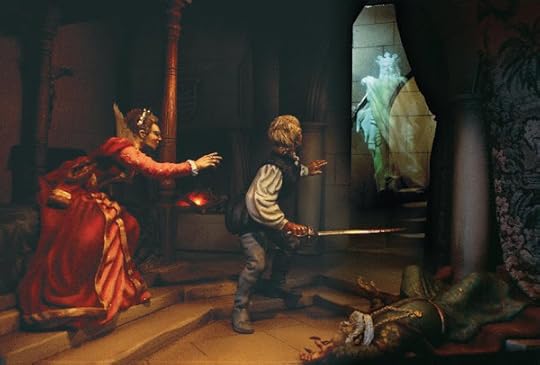 William Salter Herrick: Hamlet in the Queen’s Chamber (1857)
William Salter Herrick: Hamlet in the Queen’s Chamber (1857)But it's impossible to be sure. Its second appearance is so unhelpful that it inevitably gives rise to doubts. Which leads us to go back and think again. Doesn't it make sense for Hamlet to question its bona fides, given the stark doctrine of pagan revenge this ghost is preaching?
It would indeed be nice if we could solve just this one little vexed point in the play, as Ken Larsen thought he had done. But to claim that is to miss the point. The reason Hamlet remains alive for us is because it defies easy analysis. It may be a "failure" if you measure it against the inexorable certainties of Oedipus Rex - but not if you see it as the root of all things modern in literature: uneasy, equivocal characters; unresolvable dilemmas; action as the root of harm as well as good.
The problems with Hamlet, then, are like so many of the other problems that beset us. As Dr. Johnson said, when asked to resolve the question of the existence of ghosts: "all argument is against it; but all belief is for it". There's definitely a ghost in Hamlet, and we're told that it's a role Shakespeare liked to reserve for himself, but who or what that ghost is, and whether or not it's seeking relief from damnation or purgation is beyond final construing. Perhaps that's the real significance of Hamlet's famous remark:
There are more things in heaven and earth, Horatio,
Than are dreamt of in your philosophy.
•
 King James I: Dæmonologie (1597)
King James I: Dæmonologie (1597)•
Published on September 07, 2025 14:27
August 27, 2025
Jan Kemp: Dancing Heart (2025)
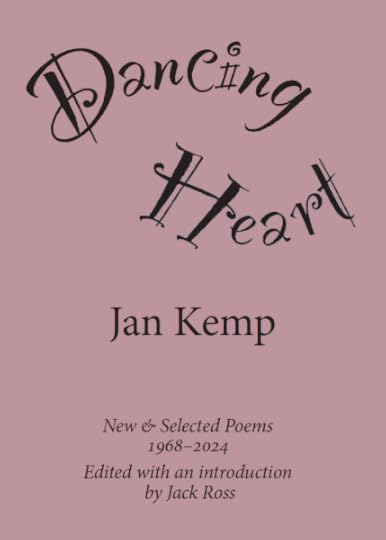 Design: John Denny
Design: John DennyJan Kemp. Dancing Heart: New and Selected Poems 1968–2024. Edited by Jack Ross. ISBN 978-3-00-083163-8. Kronberg im Taunus, Germany: Tranzlit, 2025. 172 pp.
I've just this morning received my co-author's copies of this, Jan Kemp's latest collection - a selection I made last year from her poetry to date. And here we both are on the back cover: snapped at an unguarded moment in the Senior Common Room of Auckland Uni during Jan's latest visit to New Zealand.
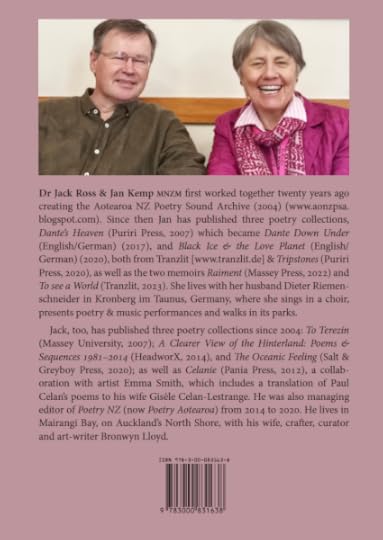 Jan Kemp: Dancing Heart (2025)
Jan Kemp: Dancing Heart (2025)Blurb:
None of that tells you very much about the book itself, though. I've written some comments on Jan's previous collection, Tripstones, here. That, too, was a selection from already published poems, but it was meant as a short, limited-edition sampler from her longtime publisher Puriri Press rather than a genuine attempt to do justice to the scope and scale of her work to date.
Jan Kemp MNZM & Dr Jack Ross first worked together 20 years ago creating the Aotearoa NZ Poetry Sound Archive (2004). Since then Jan has published three poetry collections, Dante’s Heaven (Puriri Press, 2007) which became Dante Down Under (English/German) (2017), and Black Ice & the Love Planet (English/German) (2020), both from Tranzlit & Tripstones (Puriri Press, 2020), as well as the two memoirs Raiment (Massey University Press, 2022) and To see a World (Tranzlit, 2023). She lives with her husband Dieter Riemenschneider in Kronberg im Taunus, Germany, where she sings in a choir, presents poetry & music performances and walks in its parks.
Jack, too, has published three poetry collections since 2004: To Terezín (Massey University, 2007); A Clearer View of the Hinterland: Poems & Sequences 1981-2014 (HeadworX, 2014), and The Oceanic Feeling (Salt & Greyboy Press, 2020); as well as Celanie (Pania Press, 2012), a collaboration with artist Emma Smith, which includes a translation of Paul Celan’s poems to his wife Gisèle Celan-Lestrange. He was also managing editor of Poetry NZ (now Poetry Aotearoa) from 2014 to 2020. He lives in Mairangi Bay, on Auckland’s North Shore, with his wife, crafter, curator and art-writer Bronwyn Lloyd.
Jan's nine poetry collections to date contain, by my estimate, 355 poems, composed over a period of roughly fifty years. All of them could all be fitted in one book, I suppose, but it would have to be a pretty massive tome. We therefore decided, when discussing the idea of a collected / selected edition of her poetry, to compromise on presenting a set of new, unpublished poems alongside a selection from her earlier books.
As I say in my introduction to Dancing Heart:
Each one of these books is a thing of beauty. They speak to the typefaces and design features of a particular epoch: the ampersands and back-slashes of the 1970s, the florid exuberance of the early 2000s.Here's a gallery of covers to make the point:
•
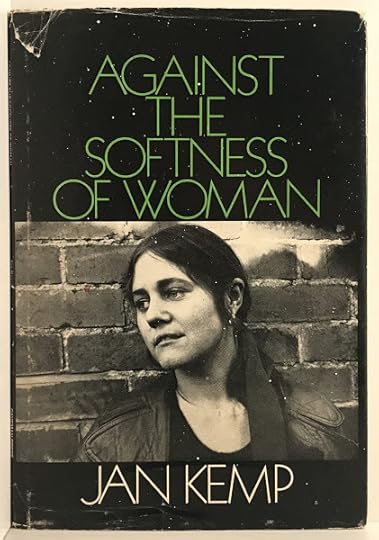 Jan Kemp: Against the Softness of Woman (1976)
Jan Kemp: Against the Softness of Woman (1976)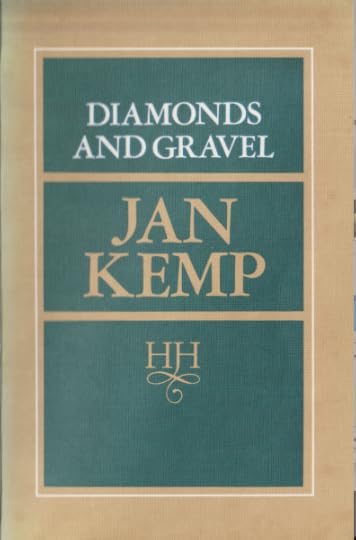 Jan Kemp: Diamonds and Gravel (1979)
Jan Kemp: Diamonds and Gravel (1979)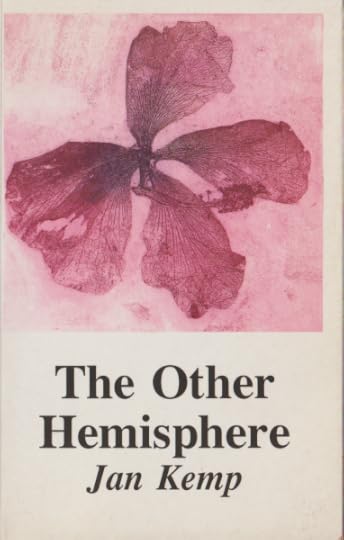 Jan Kemp: The Other Hemisphere (1991)
Jan Kemp: The Other Hemisphere (1991)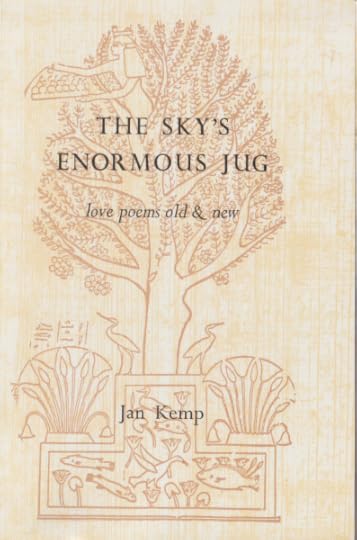 Jan Kemp: The Sky’s Enormous Jug (2001)
Jan Kemp: The Sky’s Enormous Jug (2001)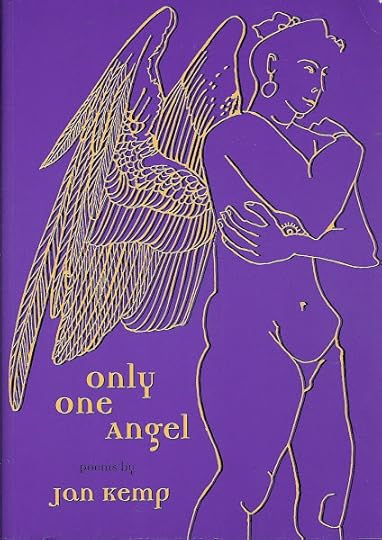 Jan Kemp: Only One Angel (2001)
Jan Kemp: Only One Angel (2001)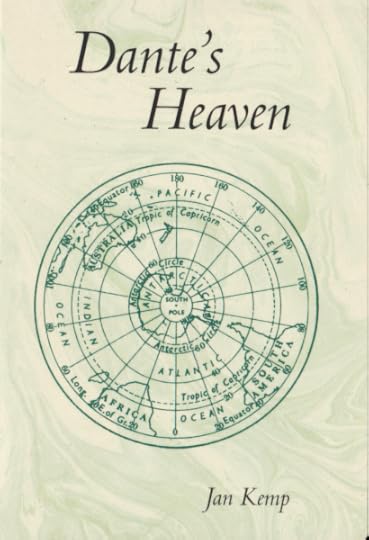 Jan Kemp: Dante’s Heaven (2006)
Jan Kemp: Dante’s Heaven (2006) Jan Kemp: Voicetracks (2012)
Jan Kemp: Voicetracks (2012)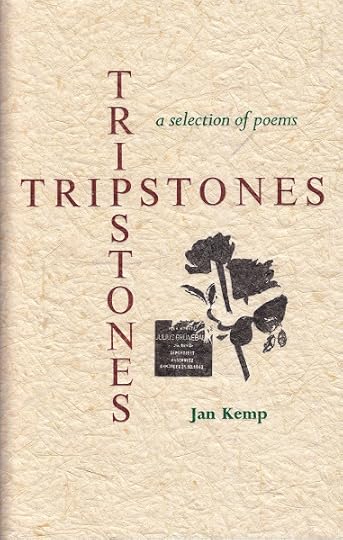 Jan Kemp: Tripstones (2020)
Jan Kemp: Tripstones (2020) Jan Kemp: Black ice & the love planet (2020)
Jan Kemp: Black ice & the love planet (2020)•
As I go on to say in my introduction:
I suppose if I had to play favourites, it would have to be for the meticulously designed and produced volumes created by John Denny at the Puriri Press in Auckland. The Sky’s Enormous Jug, with its delicate hand-binding and sumptuous illustrations, is a particular pleasure to leaf through. Dante’s Heaven, too, is a wonderful piece of book-art.I'm very happy to report that John Denny has come out of retirement to design this new collection as a special favour to Jan.
What else? If you'd like to preview the table of contents and find out more information about the book, please go here. If you'd like to read my introduction in full, you can go here. There's a sample poem, "Christmas Lily", available here at Newsroom.
And if you're interested in ordering a copy, this is the address to write to:
Available:
Tranzlit
Bahnhofstrasse 16a
61476 Kronberg im Taunus
Germany
www.tranzlit.de
E: jantranzlit@gmail.com
RRP: $NZ35 [incl. postage & packing]
I hope you'll have as much fun reading the book as we did in putting it together. It involved digitising, collating, and selecting from all of Jan's books - a task we've both had to work hard on over the past year - but it was definitely worth it. As I say in my introduction:
As I look at my set of her books to date, including all nine of her poetry collections, published between 1976 and 2020, they seem like a time capsule of New Zealand writing over the past five decades.In the end, though:
if it’s to live, your work does have to end up belonging to others.
Jan has understood this, and her lifetime of poetry writing, reading, performing and teaching has – in my view at least – resulted in a truly wonderful body of work, which I believe richly deserves to catch fire in the minds of new readers as well as the memories of already established fans.
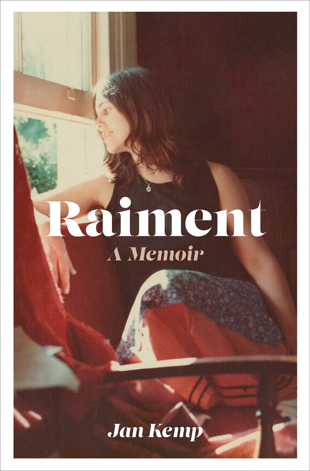 Jan Kemp: Raiment: A Memoir (2022)
Jan Kemp: Raiment: A Memoir (2022)•
 Jan Kemp (2012)
Jan Kemp (2012)Janet Mary Riemenschneider-Kemp MNZM
(1949- )
Books I own are marked in bold:Poetry collections:
Against the Softness of Woman (1976)Against the Softness of Woman. Dunedin: Caveman Press, 1976. Diamonds and Gravel (1979)Diamonds and Gravel. Wellington: Hampson Hunt, 1979. The Other Hemisphere (1991)The Other Hemisphere. 1991. Washington, DC: Three Continents Press, 1992. The Sky’s Enormous Jug – love poems old and new (2001)The Sky’s Enormous Jug – love poems old and new. Auckland: Puriri Press, 2001. Only One Angel (2001)Only One Angel. Dunedin: University of Otago Press, 2001. Dante’s Heaven (2006)Dante’s Heaven. Auckland: Puriri Press, 2006.Dante Down Under / Gedichte aus Aotearoa/Neuseeland. 2006. Trans. Dieter Riemenschneider. Kronberg im Taunus: Tranzlit, 2017.Dante's Heaven / Il Cielo di Dante. 2006. Trans. Aldo Magagnino. Poggio Imperiale: Edizioni del Poggio, 2017. Voicetracks: Poems 2002-2012 (2012)Voicetracks: Poems 2002-2012. Auckland: Puriri Press / Kronberg im Taunus: Tranzlit, 2012. Tripstones: A Selection of Poems (2020)Tripstones: A Selection of Poems. Auckland: Puriri Press, 2020. Black Ice & the Love Planet (2020)Black Ice & the Love Planet: Poems 2012-2019 / Glatteis & der Planet der Liebe: Gedichte 2012-2019. Trans. Susanne Opfermann & Helmecht Brienig. Kronberg im Taunus: Tranzlit, 2020.Black Ice & the Love Planet: Poems 2012-2019 / Ghiaccio Nero & il Pianeta dell'Amore: Poesie 2012-2019. Trans. Aldo Magagnino. Poggio Imperiale: Edizioni del Poggio, 2021. Dancing Heart: New and Selected Poems. Ed. Jack Ross (2025)Dancing Heart: New and Selected Poems 1968–2024. Edited by Jack Ross. ISBN 978-3-00-083163-8. Kronberg im Taunus, Germany: Tranzlit, 2025.
Chapbooks & Features:
[Contributor] The Young New Zealand Poets. Ed. Arthur Baysting. Auckland: Heinemann Educational Books, 1973.[Contributor] Private Gardens: An Anthology of New Zealand Women Poets. Ed. Riemke Ensing. Afterword by Vincent O'Sullivan. Dunedin: Caveman Publications Ltd., 1977.[Featured Poet] Climate 29: A Journal of New Zealand and Australian Writing (Autumn 1979). Ed. Alistair Paterson. Auckland, 1979.Ice Breaker Poems. Drawings by Anthony Stones. Auckland: Coal-Black Press, 1980.Five Poems. Singapore: National Museum Art Gallery, 1988.Nine Poems from Le Château de Lavigny. Auckland: Puriri Press, 2007.Jennet's poem: wild love. Auckland: Puriri Press, 2012.[Featured Poet] Poetry NZ 48 (2014). Ed. Nicholas Reid. Auckland: Puriri Press / Palm Springs, California: Brick Row, March 2014.
Prose:
Spirals of Breath: Short Stories & Novellas. Kronberg im Taunus: Tranzlit, 2020.Raiment. Memoirs, 1. Auckland: Massey University Press, 2022.To See a World. Memoirs, 2. Kronberg im Taunus: Tranzlit, 2024.
Edited:
[with Jonathan Lamb & Alan Smythe] New Zealand Poets Read Their Work. 3 LPs. Auckland: Waiata Records, 1974.[with Jack Ross] Classic New Zealand Poets in Performance [with 2 CDs]. Auckland: Auckland University Press, 2006.[with Jack Ross] Contemporary NZ Poets in Performance [with 2 CDs]. Auckland: Auckland University Press,, 2007. [with Jack Ross] New New Zealand Poets in Performance [with 2 CDs]. Auckland: Auckland University Press, 2008).[with Dieter Riemenschneider] Wildes Licht: Poems / Gedichte aus Aotearoa Neuseeland (English-German). Kronberg: Tranzlit, 2010.
•
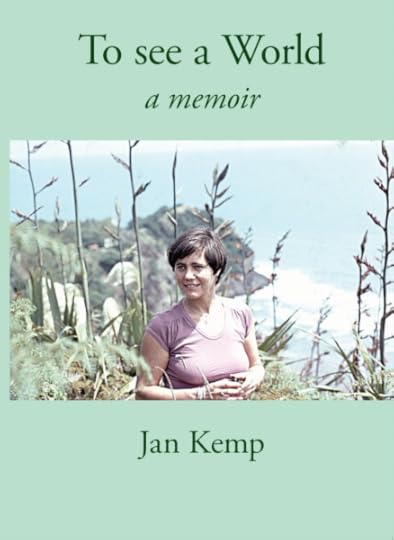 Jan Kemp: To See a World: A Memoir (2024)
Jan Kemp: To See a World: A Memoir (2024)
Published on August 27, 2025 16:33



